A&P - Urinary System structures (Lab 10 - Exam 4)
1/124
There's no tags or description
Looks like no tags are added yet.
Name | Mastery | Learn | Test | Matching | Spaced |
|---|
No study sessions yet.
125 Terms
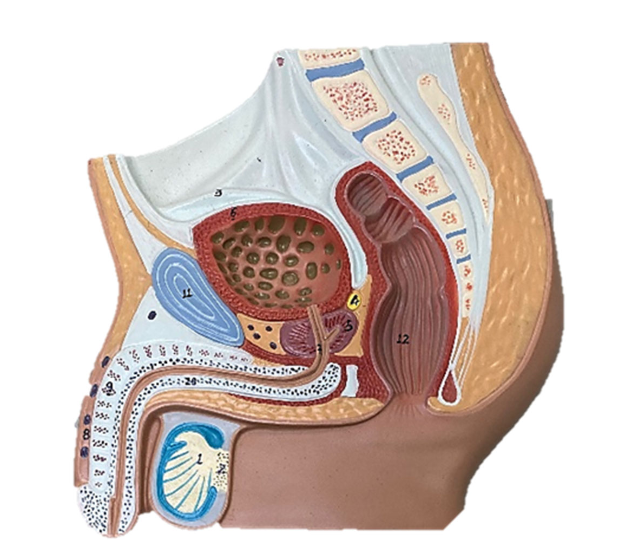
Male urinary tract structures: Identify the membranous urethra
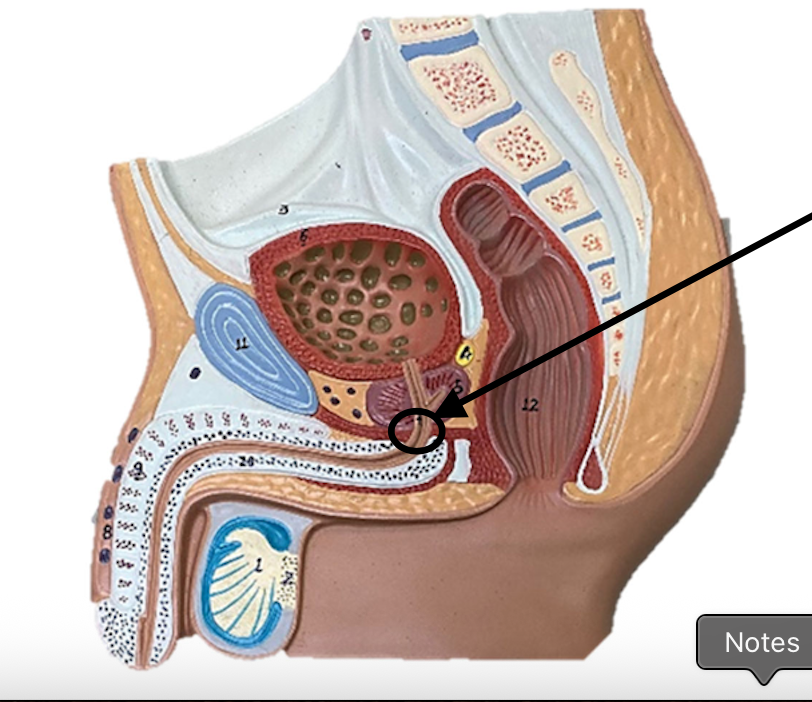
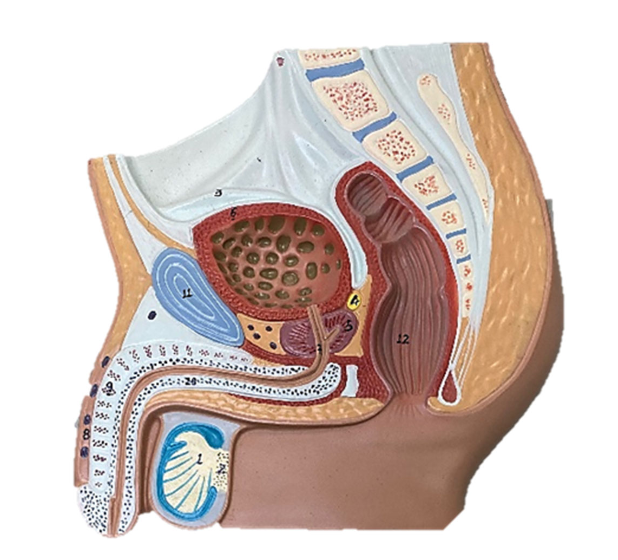
Male urinary tract structures: Identify the penile urethra
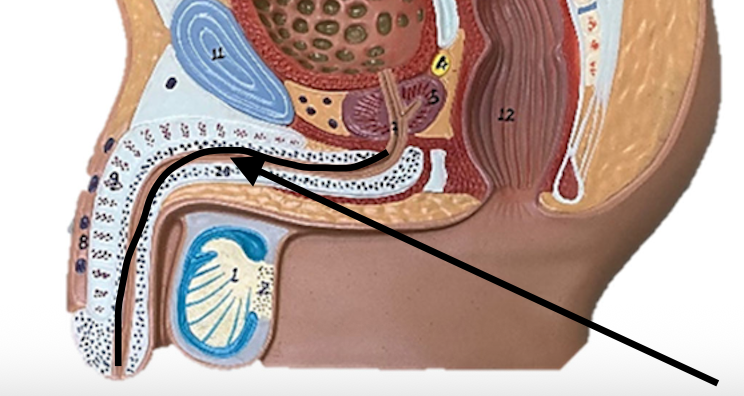
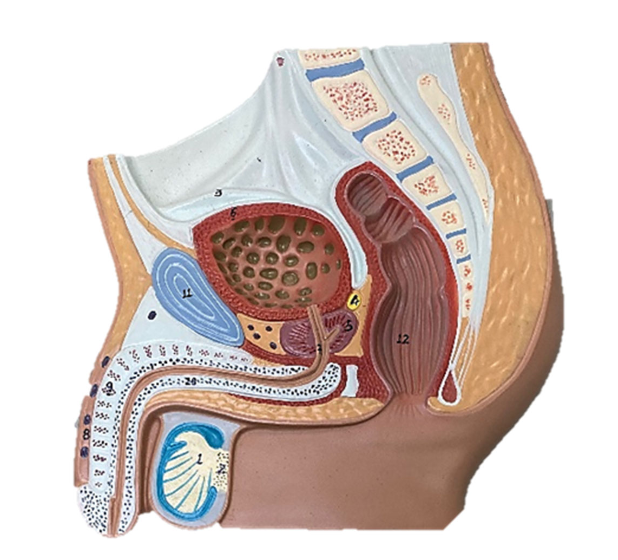
Male urinary tract structures: Identify the prostate gland
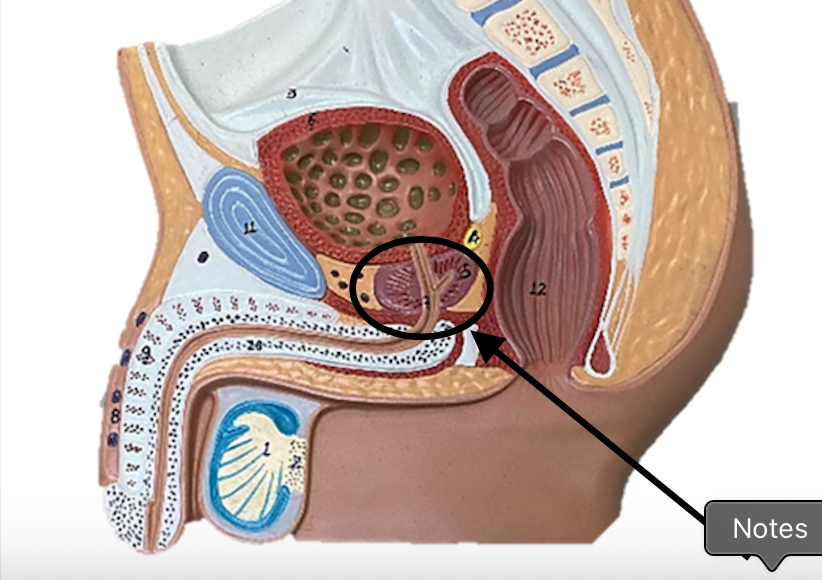
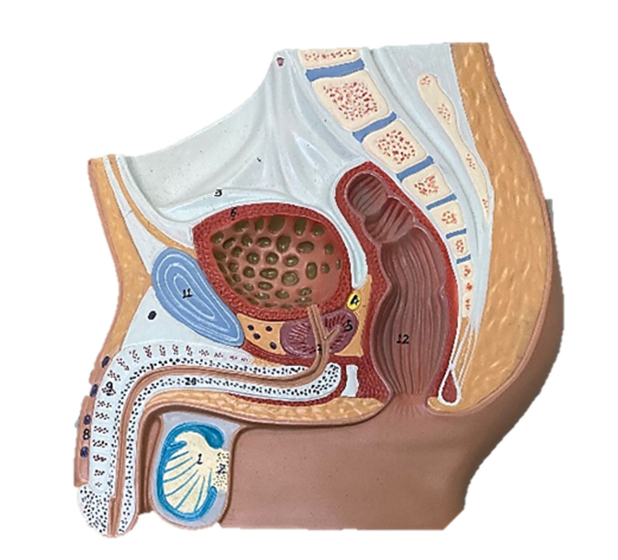
Male urinary tract structures: Identify the prostatic urethra

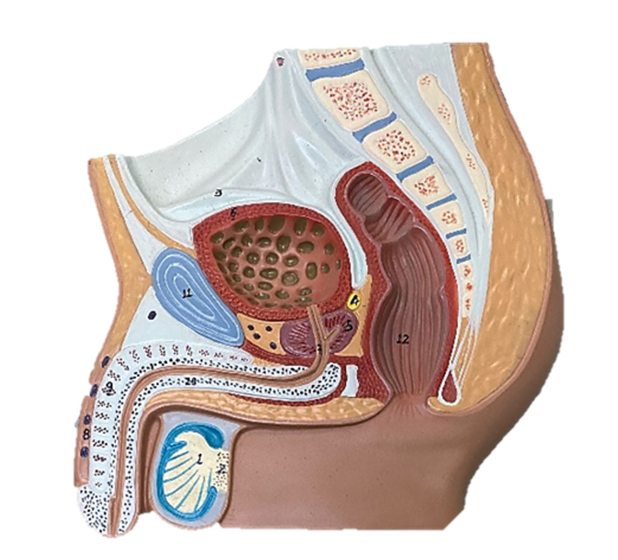
Male urinary tract structures: Identify the rugae (aka ridges)
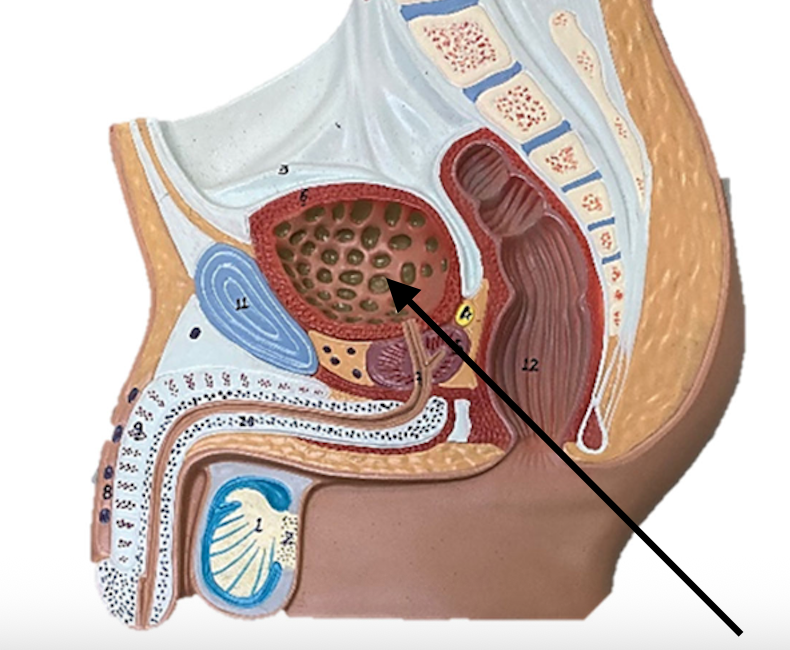
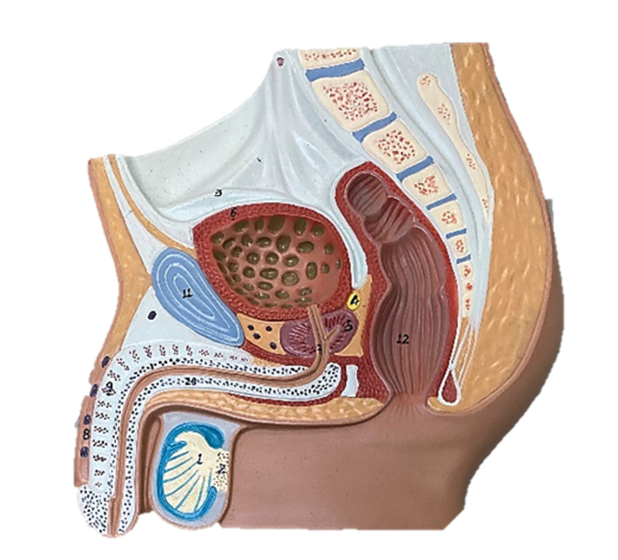
Male urinary tract structures: Identify the urinary bladder
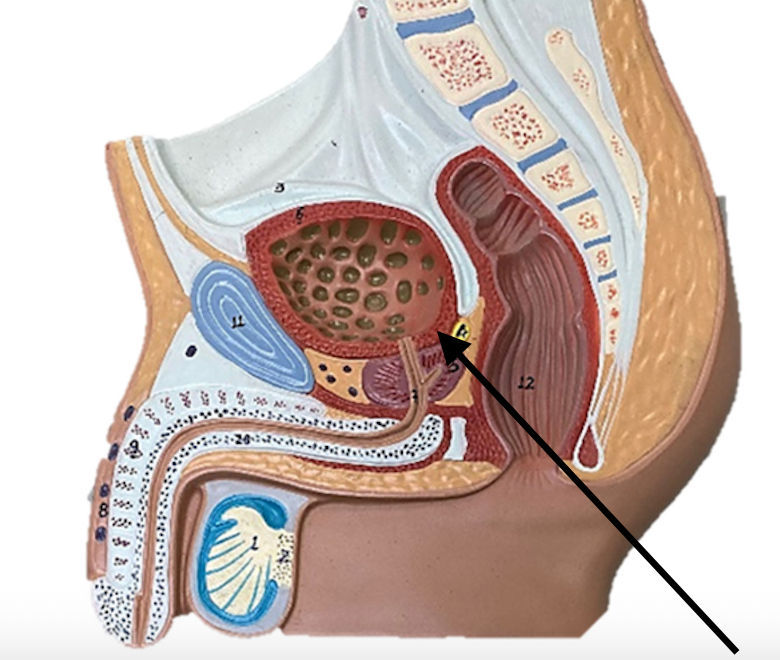
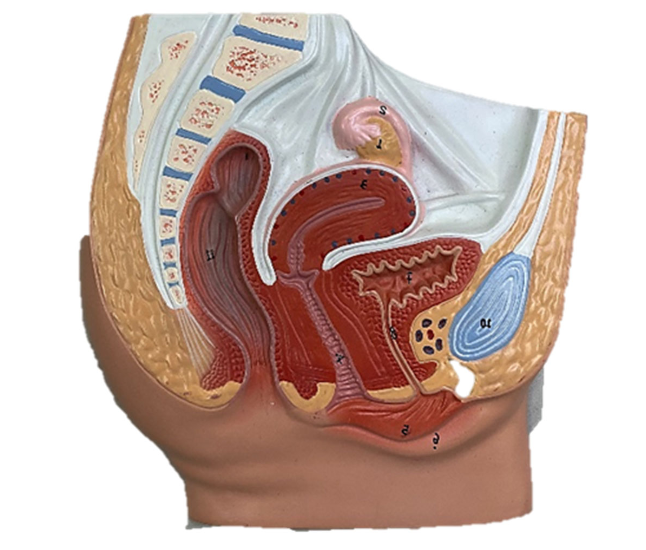
Female urinary tract structures: Identify the rugae (aka ridges)
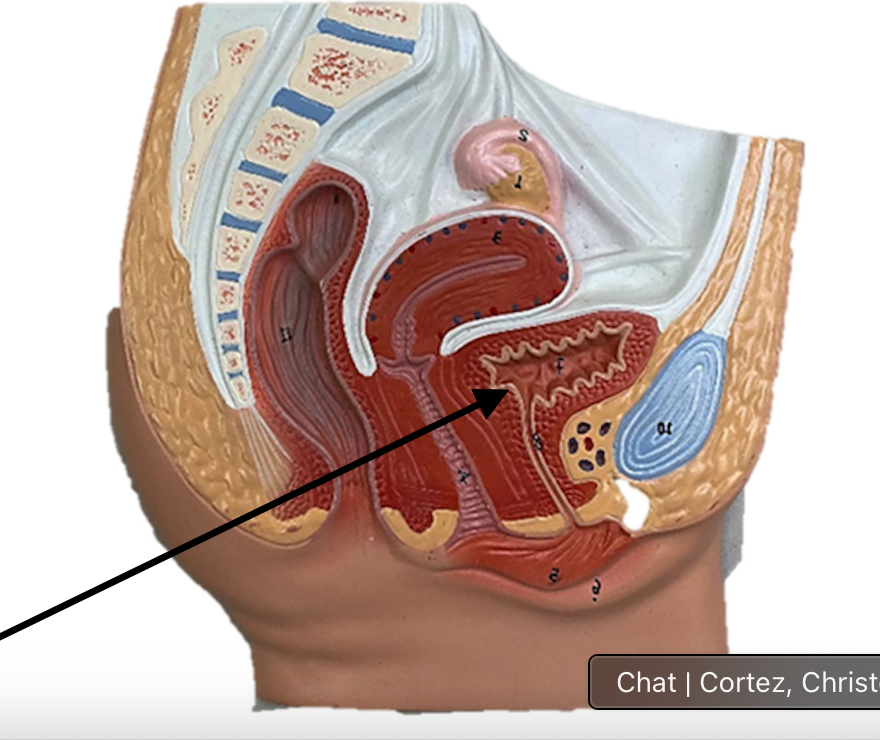
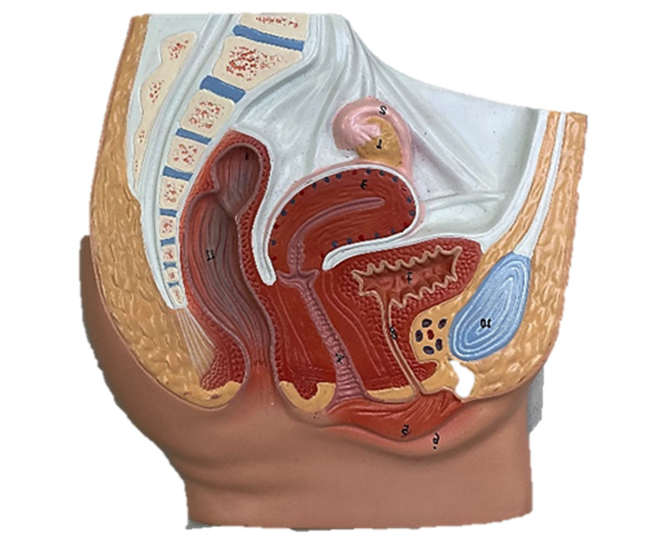
Female urinary tract structures: Identify the urethra
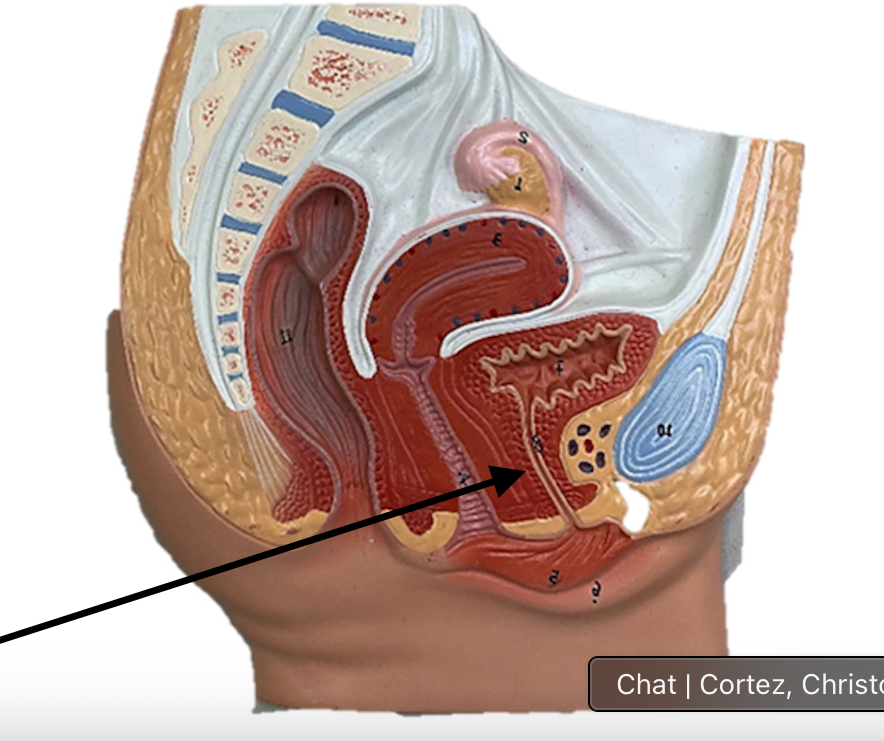
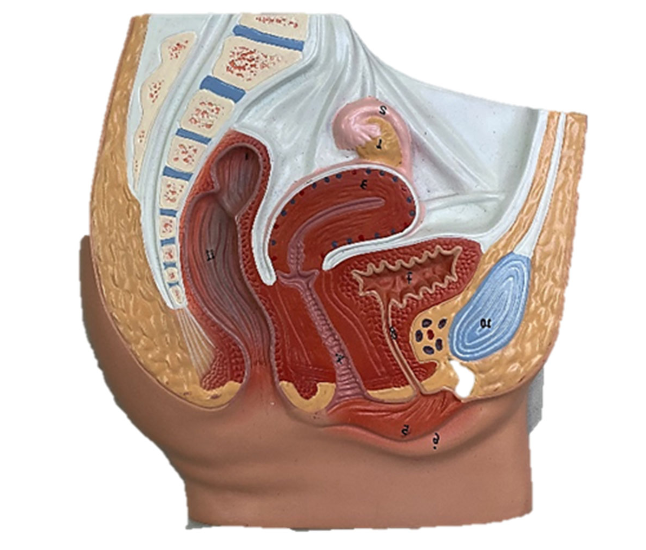
Female urinary tract structures: Identify the urinary bladder
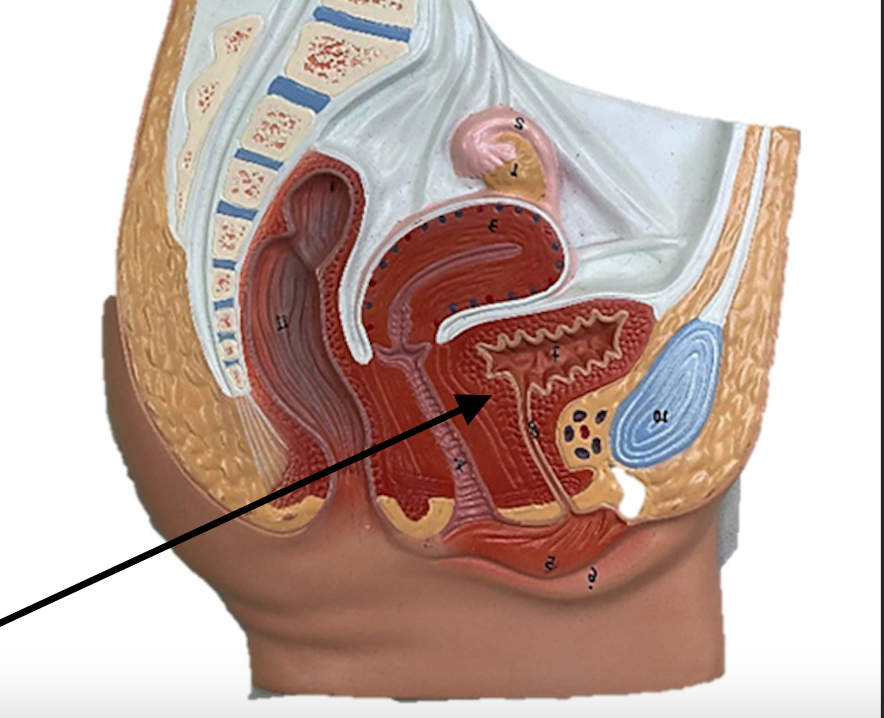
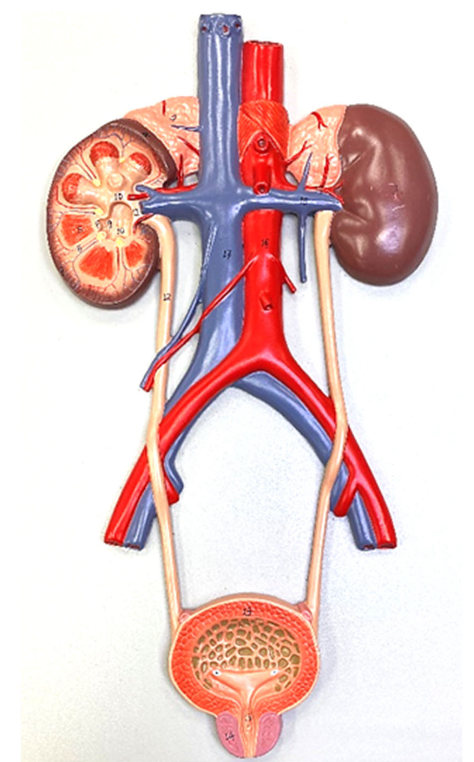
Does this model represent the urinary tract in a male or female?
Male - has prostate
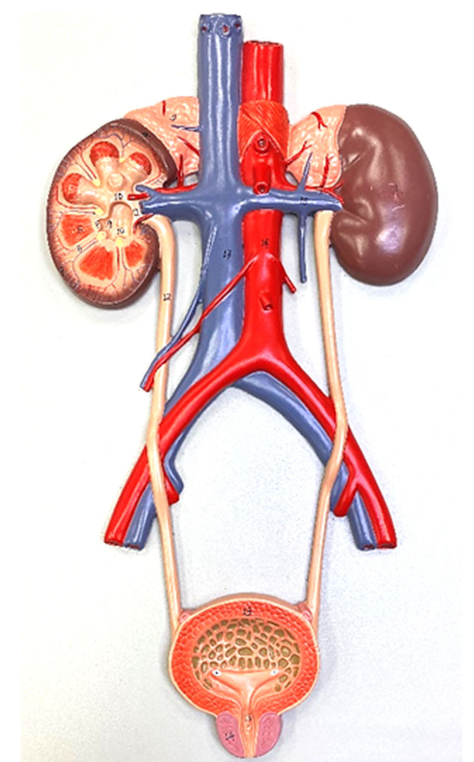
Identify the abdominal aorta

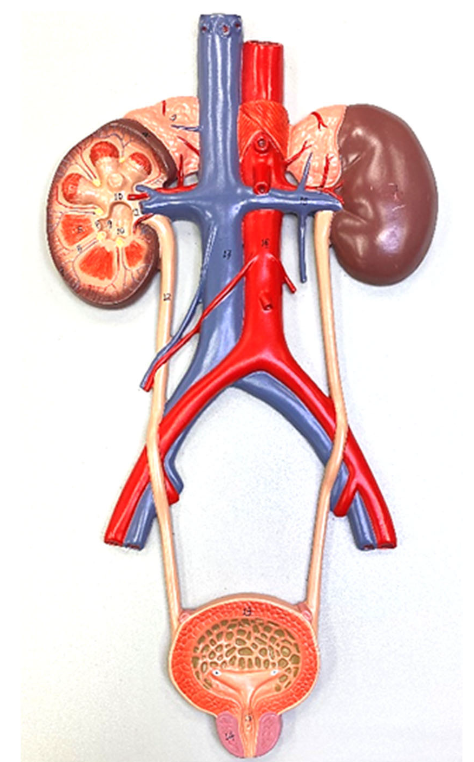
Identify the adrenal gland
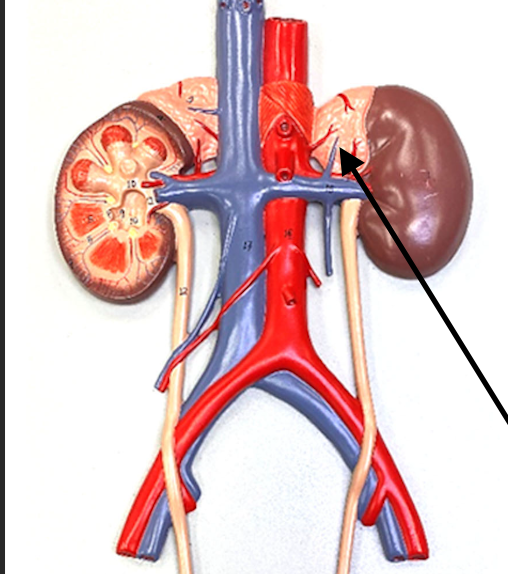
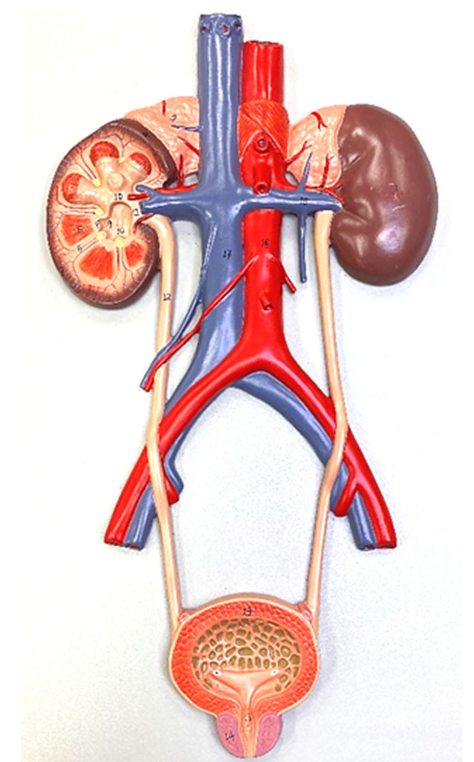
Identify the detrusor (muscle)
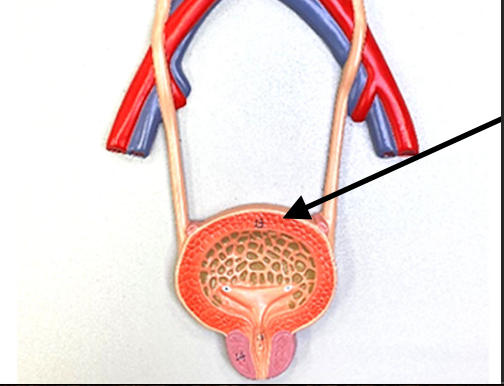
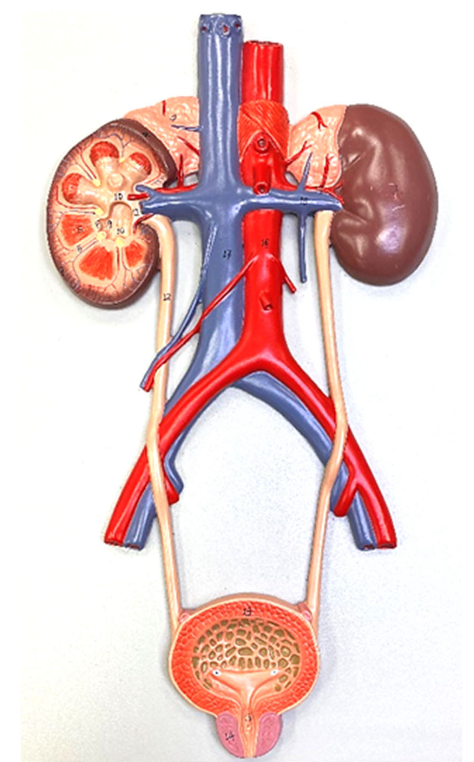
Identify the external urethral orifice

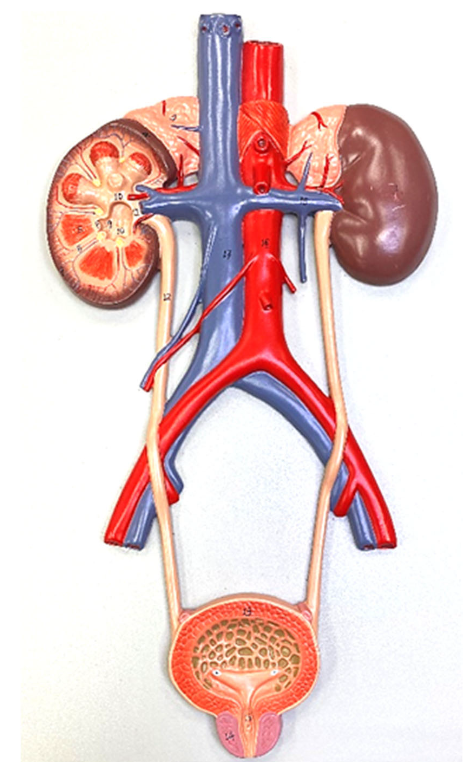
Identify the inferior vena cava
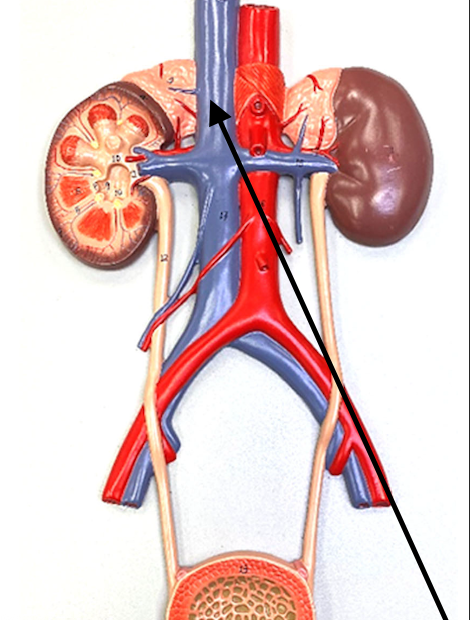

Identify the kidney
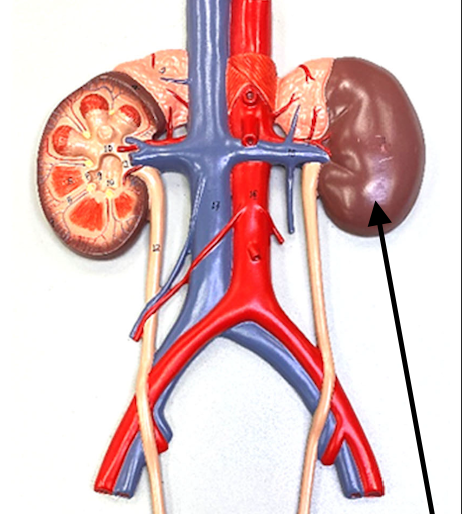
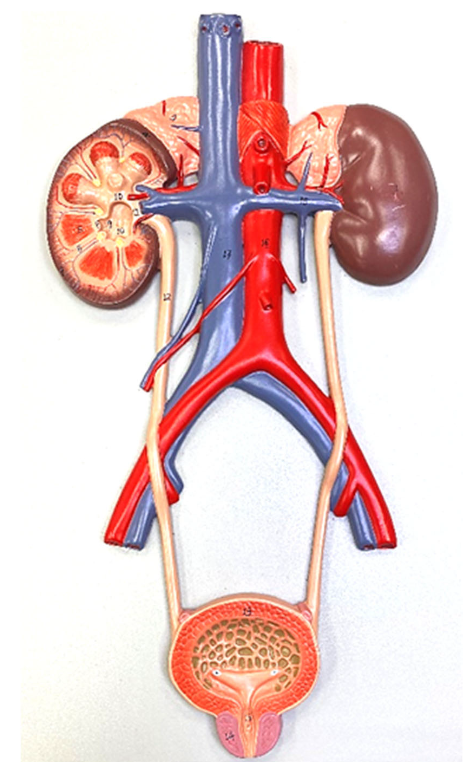
Identify the prostate gland
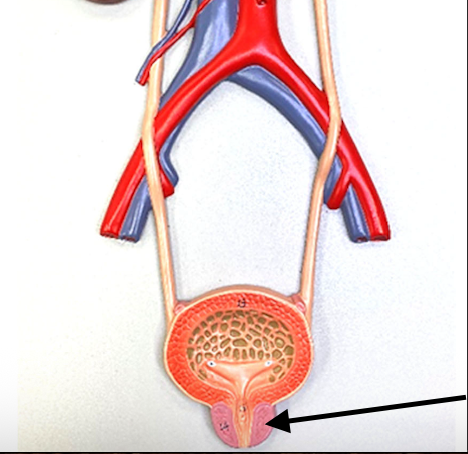
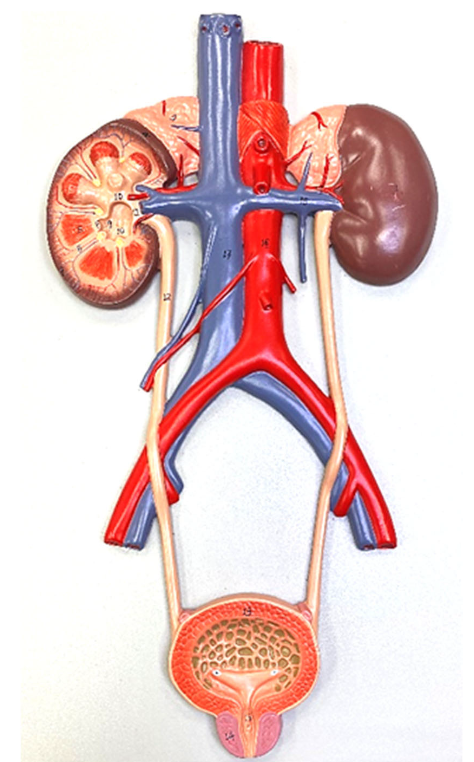
Identify the renal pelvis
Actually a little higher than I marked
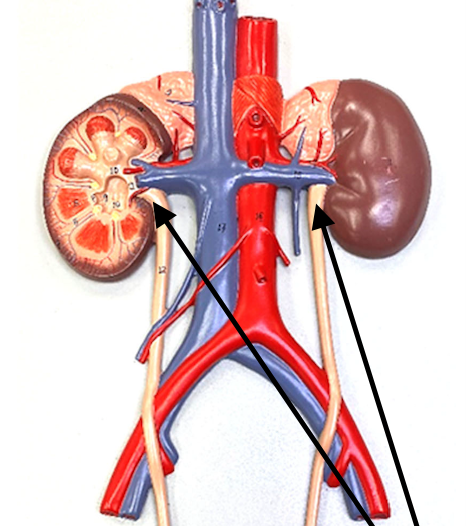

Identify the renal pyramid
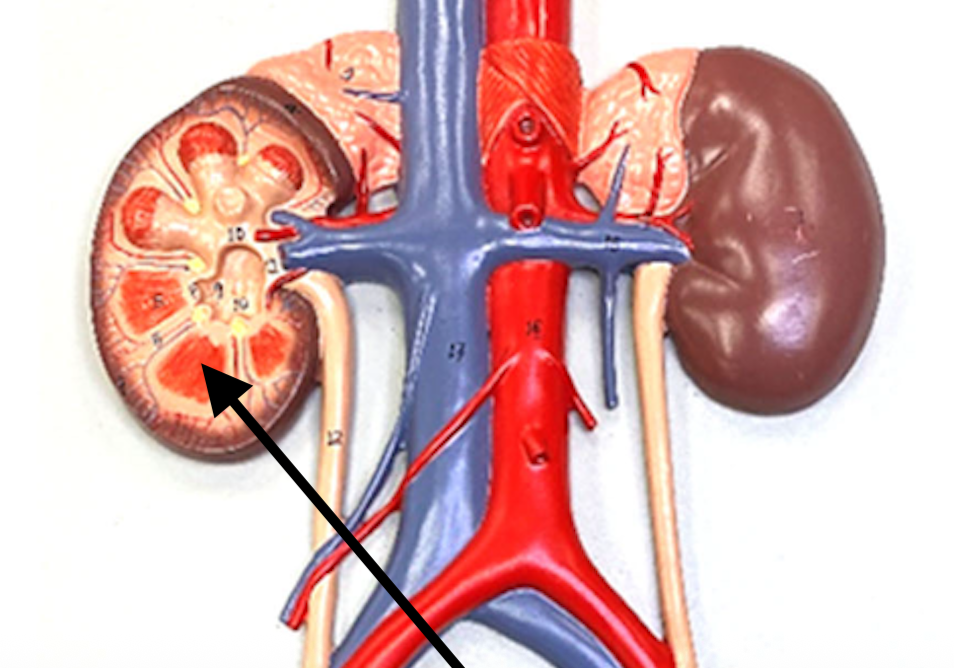
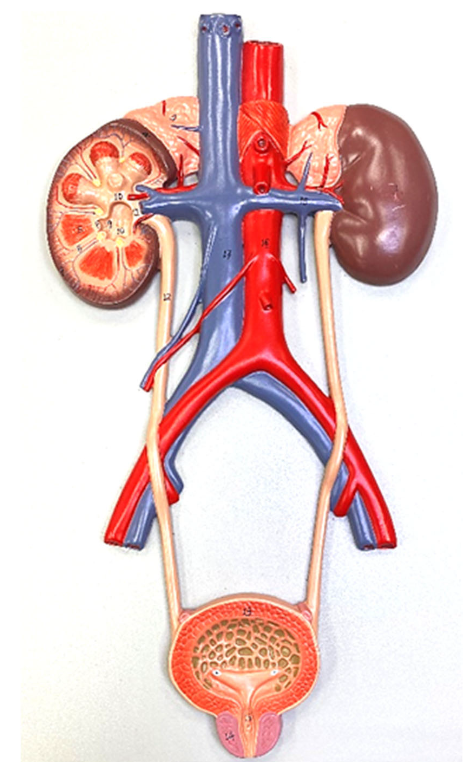
Identify the renal vein
Blue
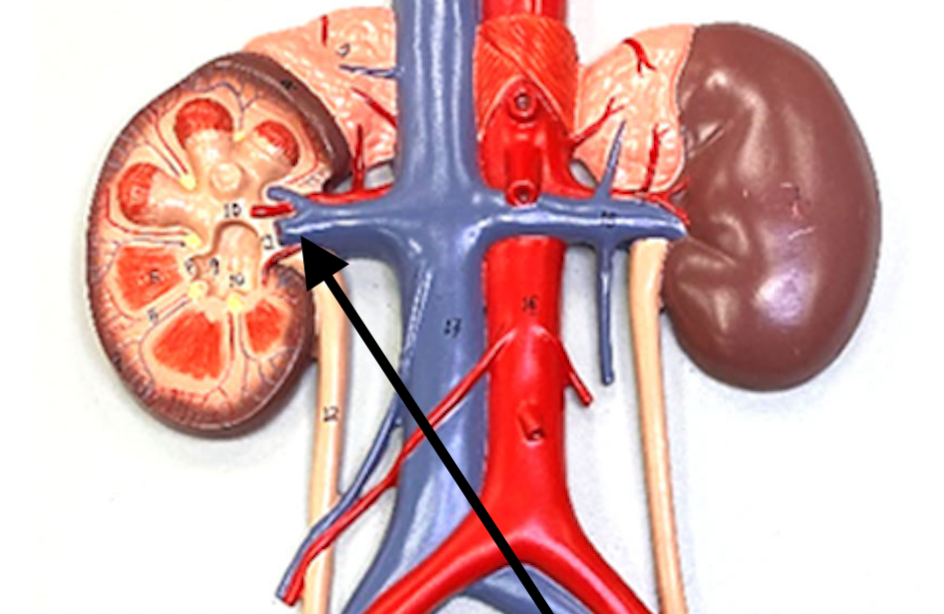
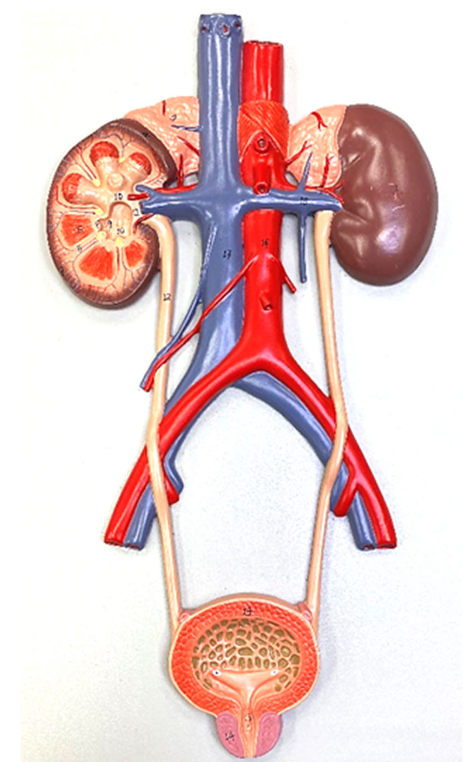
Identify the trigone
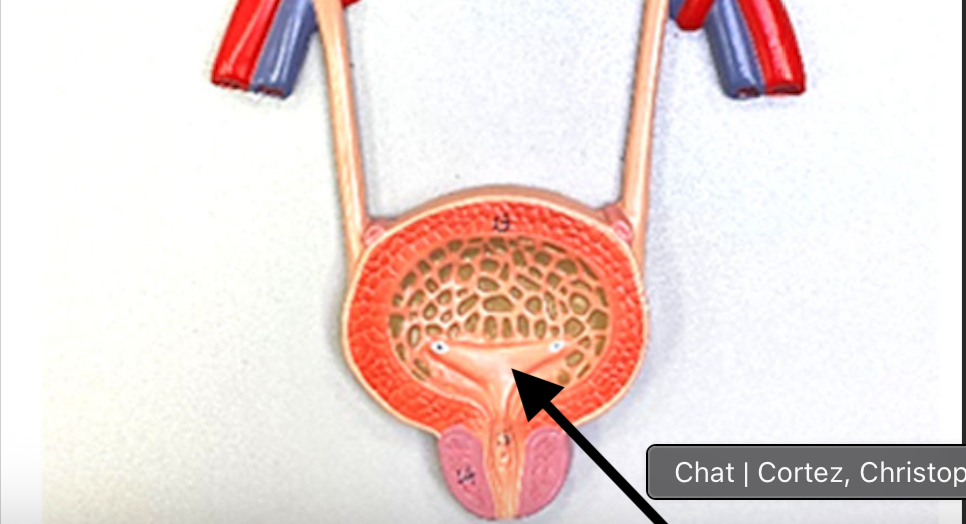

Identify the ureter
Below renal pelvis
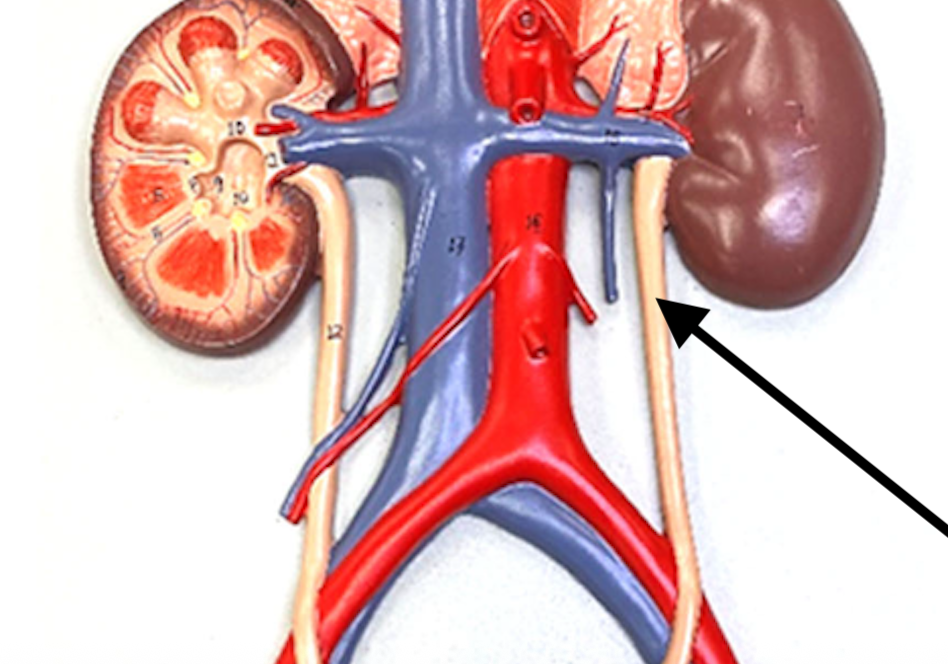
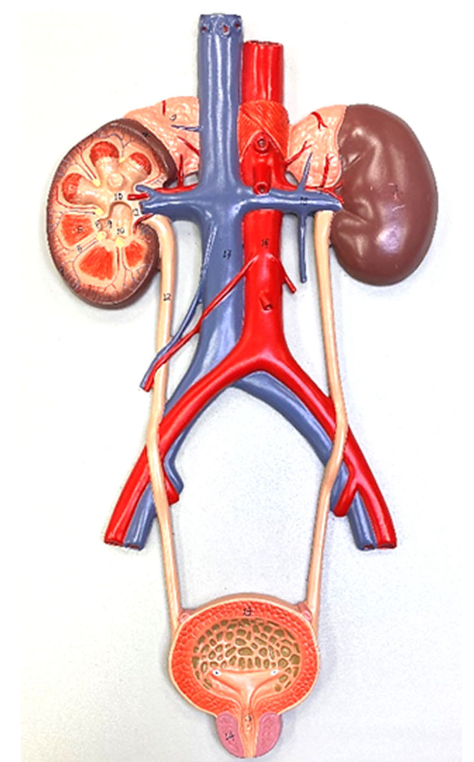
Identify the urethra

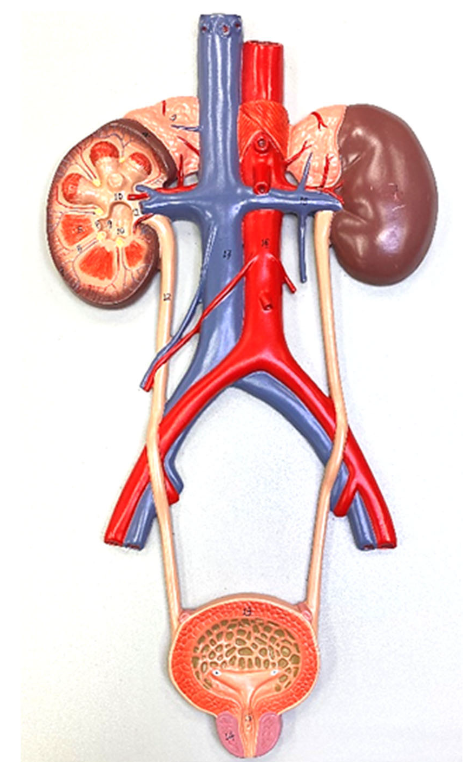
Identify the urinary bladder
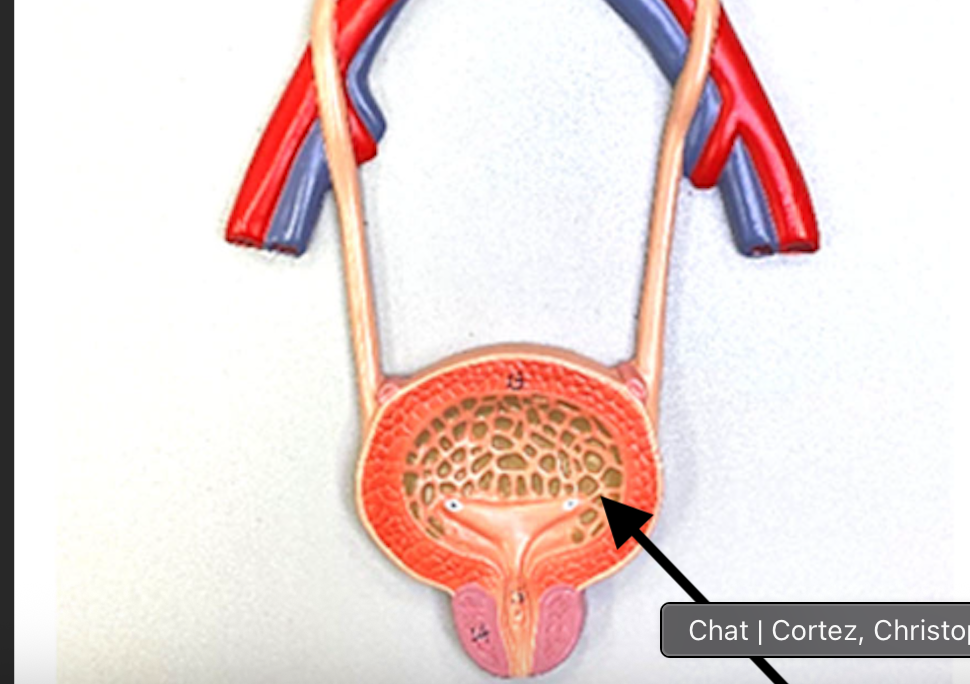
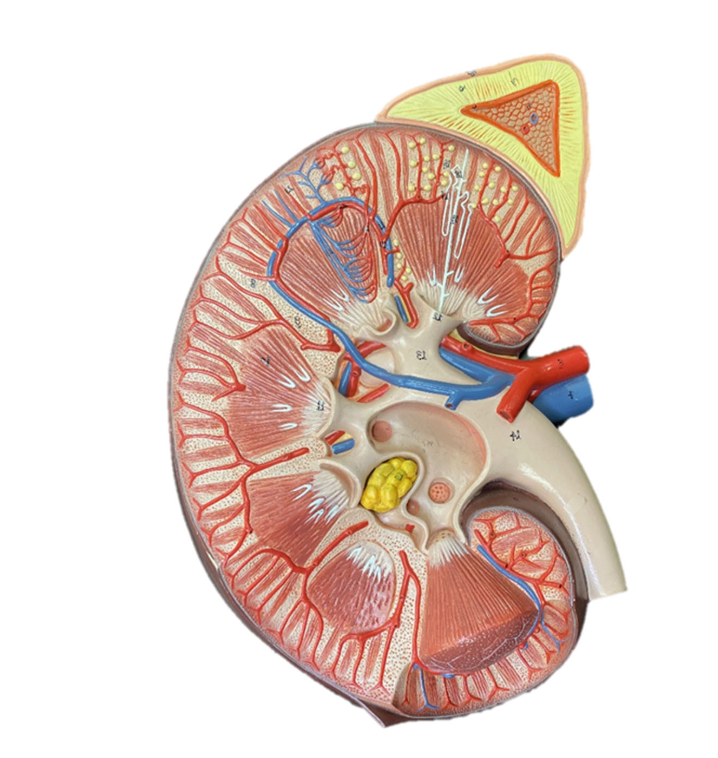
Identify the adrenal gland
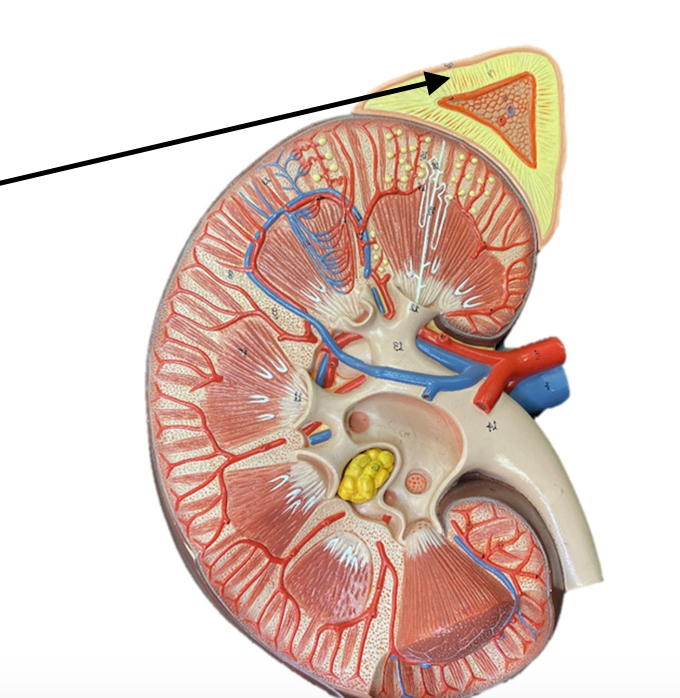
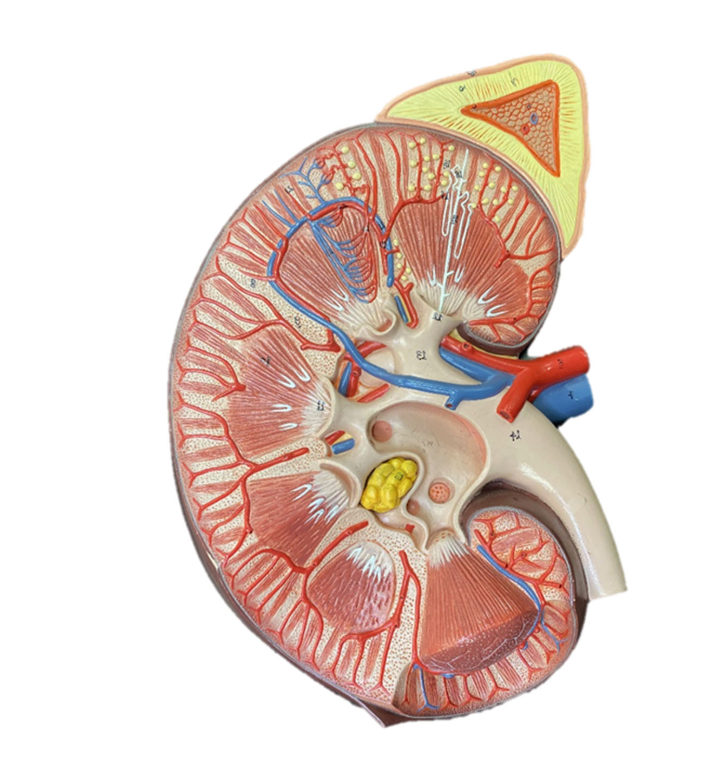
Identify the arcuate artery

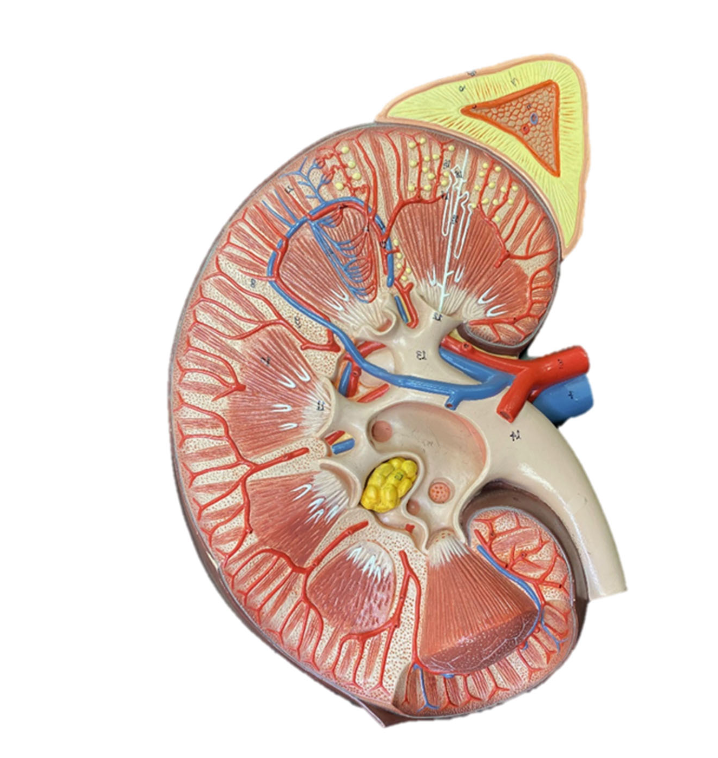
Identify the cortical radiate artery
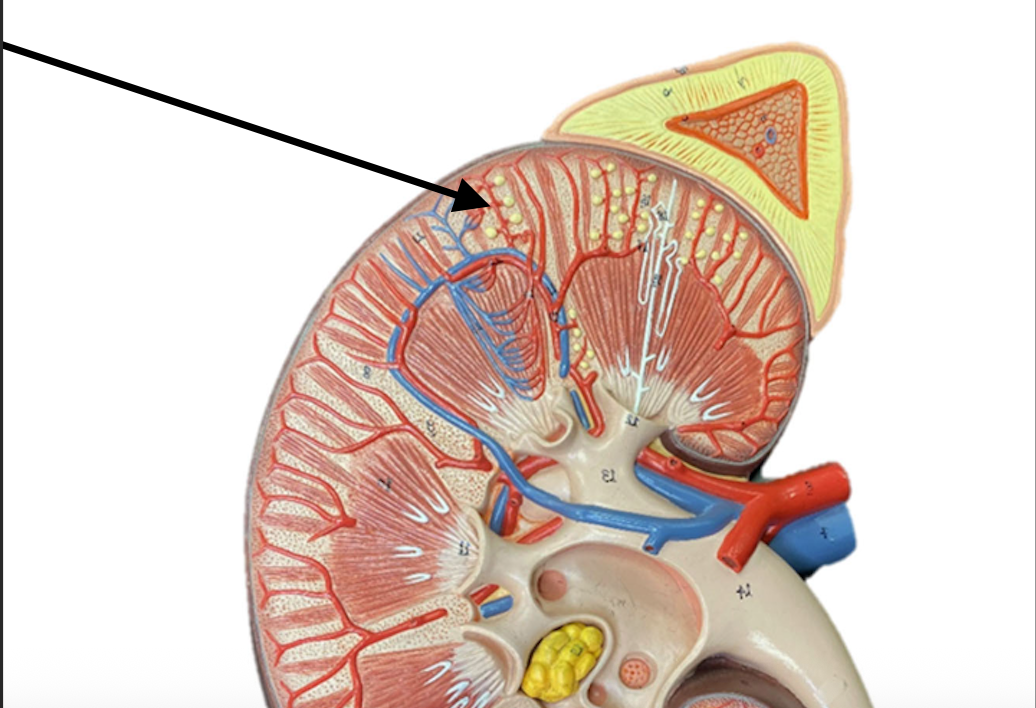
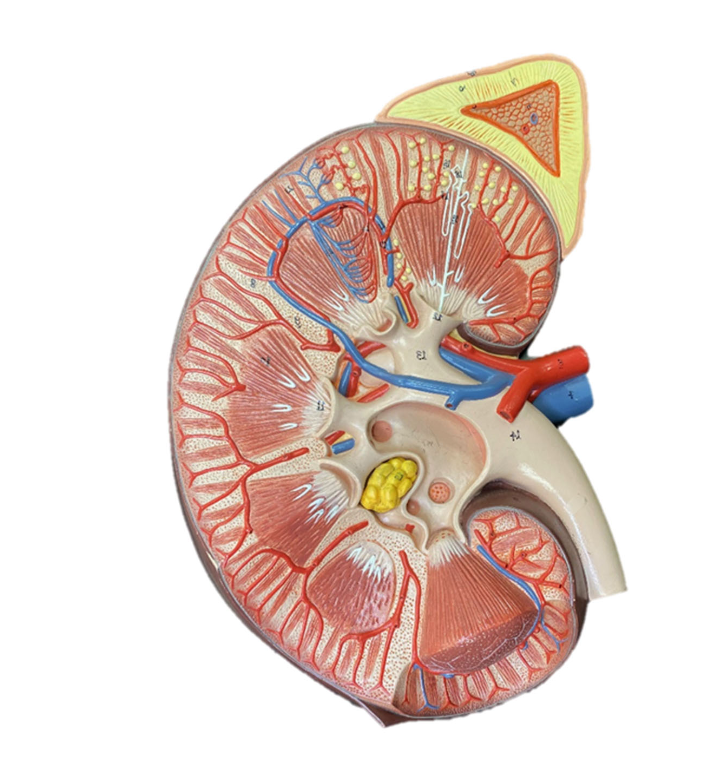
Identify the hilium
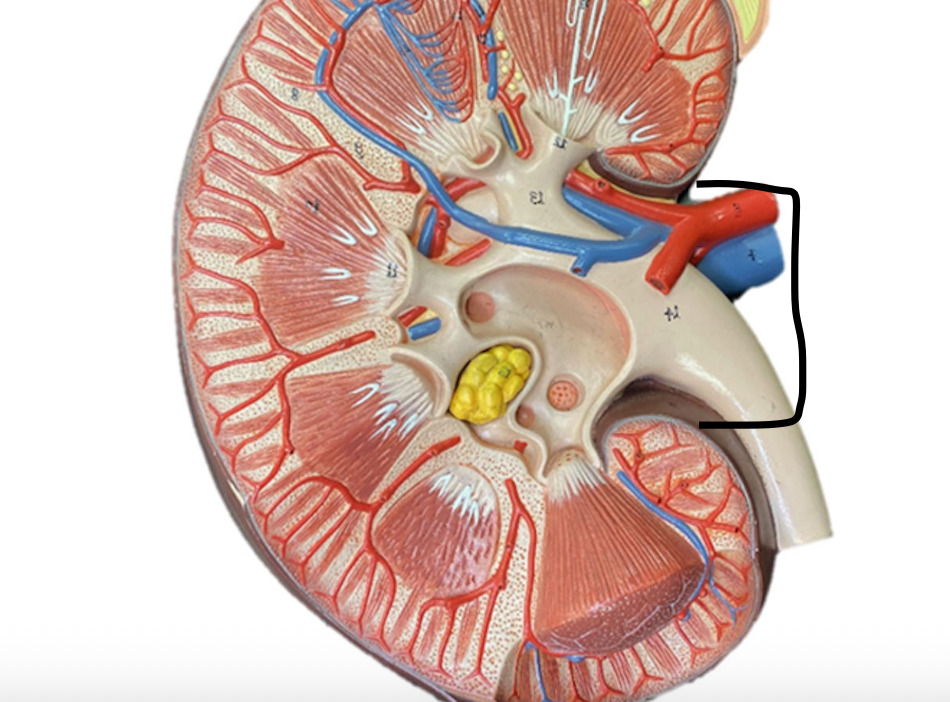
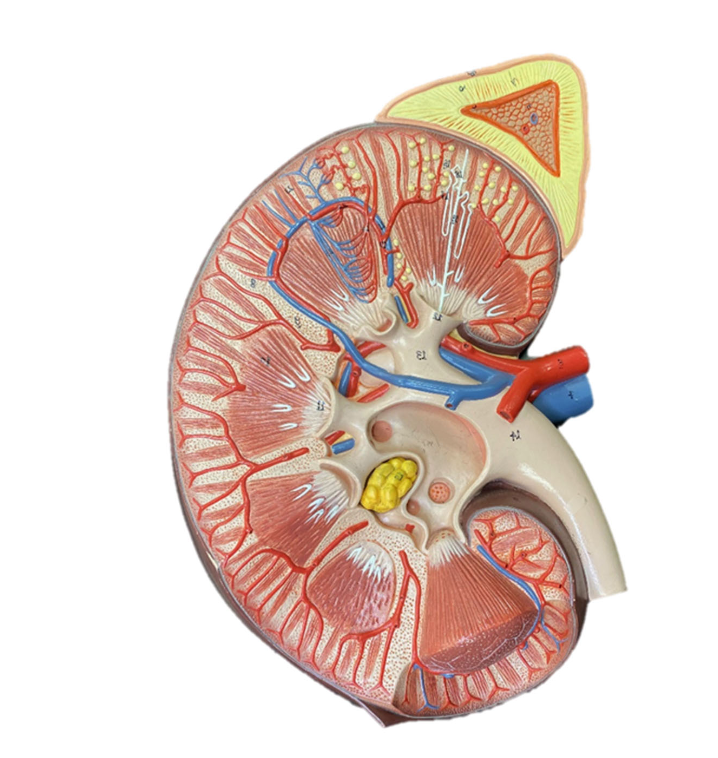
Identify the interlobar artery
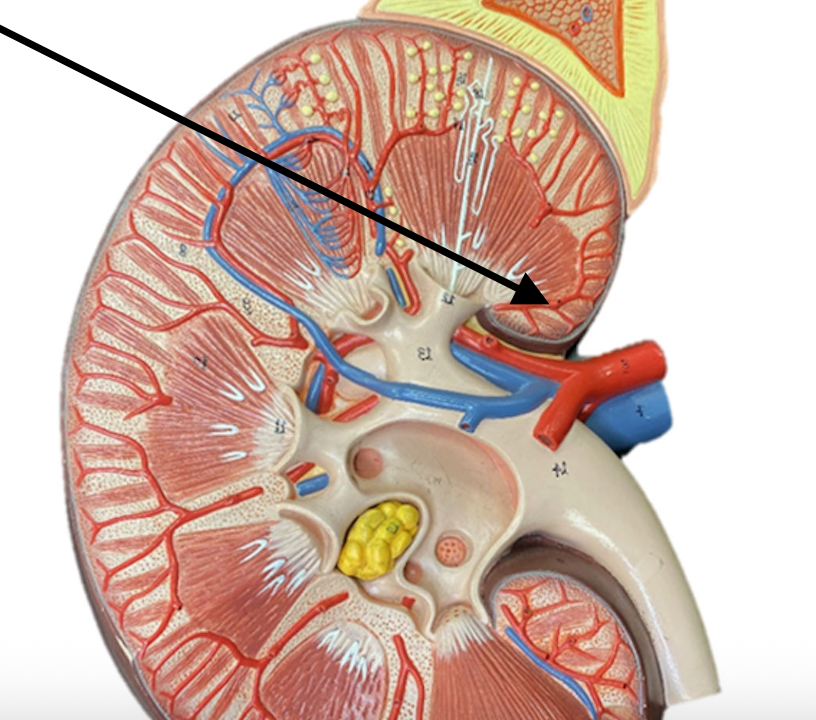
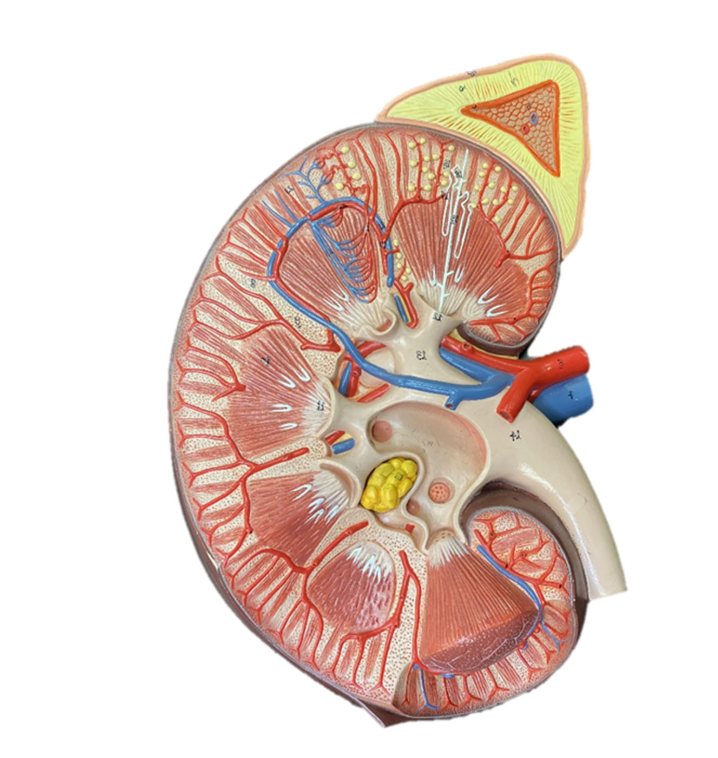
Identify the lobe (of the kidney)
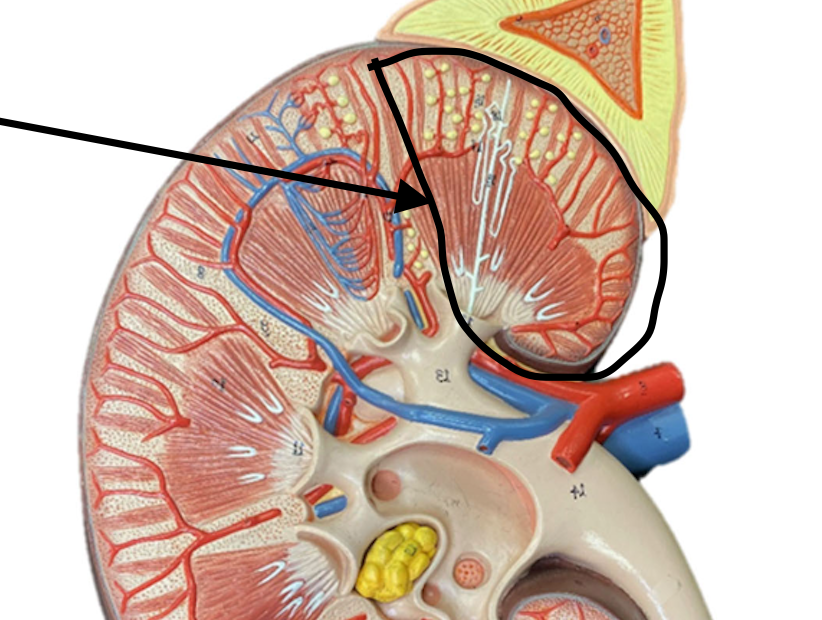

Identify the major calyx
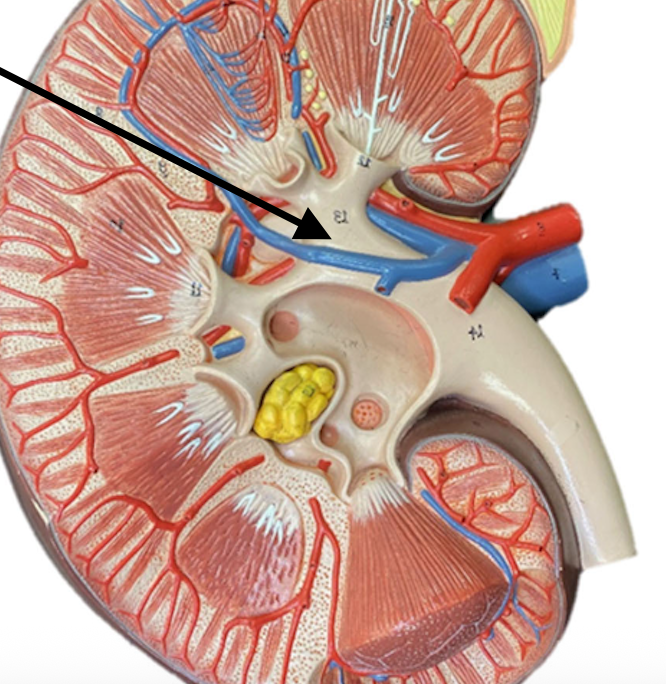
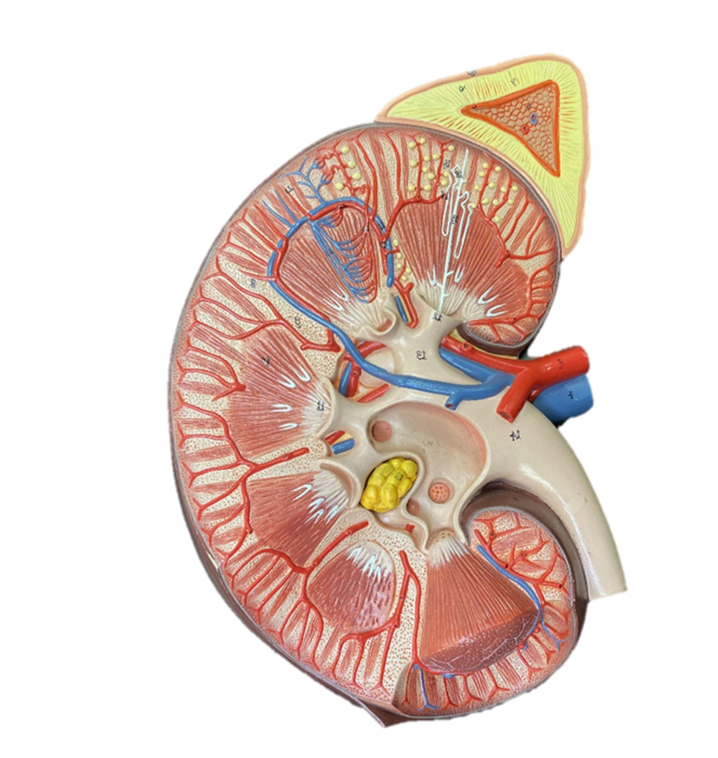
Identify the minor calyx
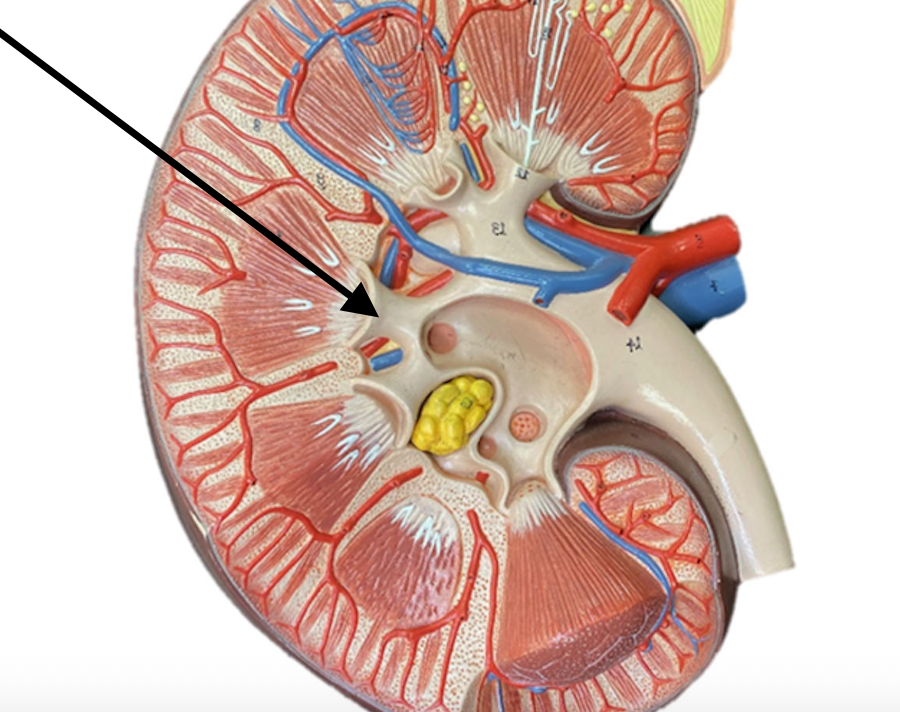
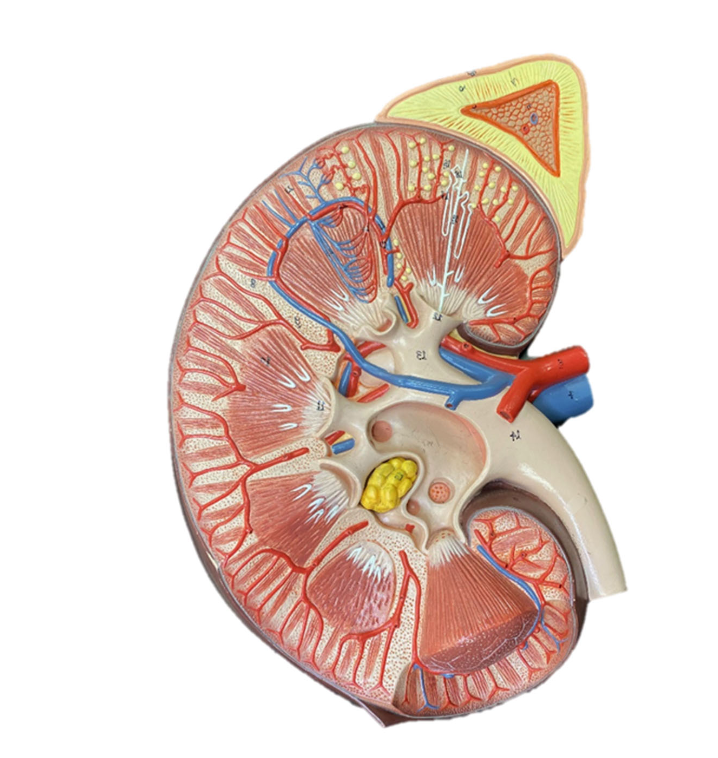
Identify the renal artery
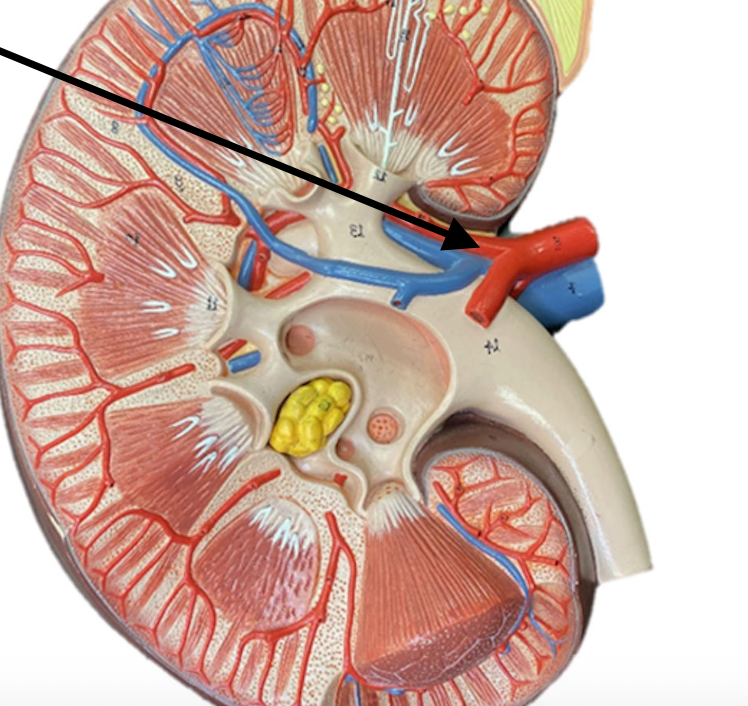
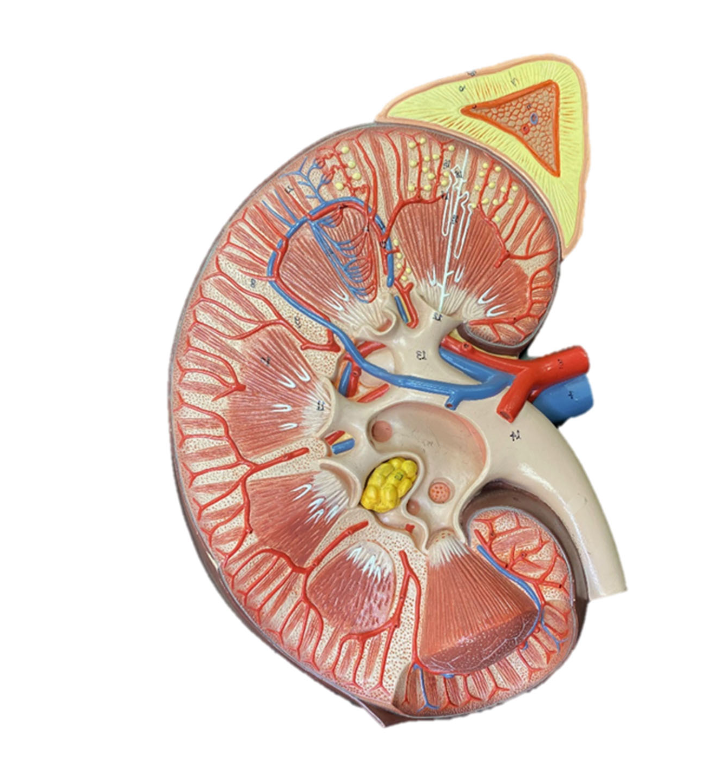
Identify the renal capsule
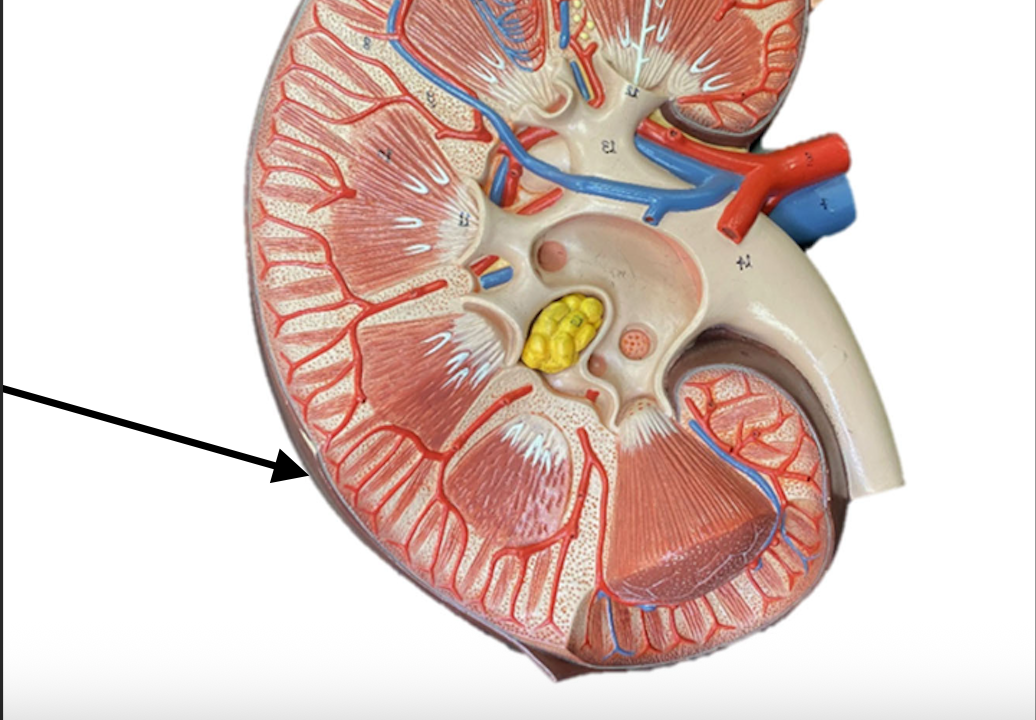
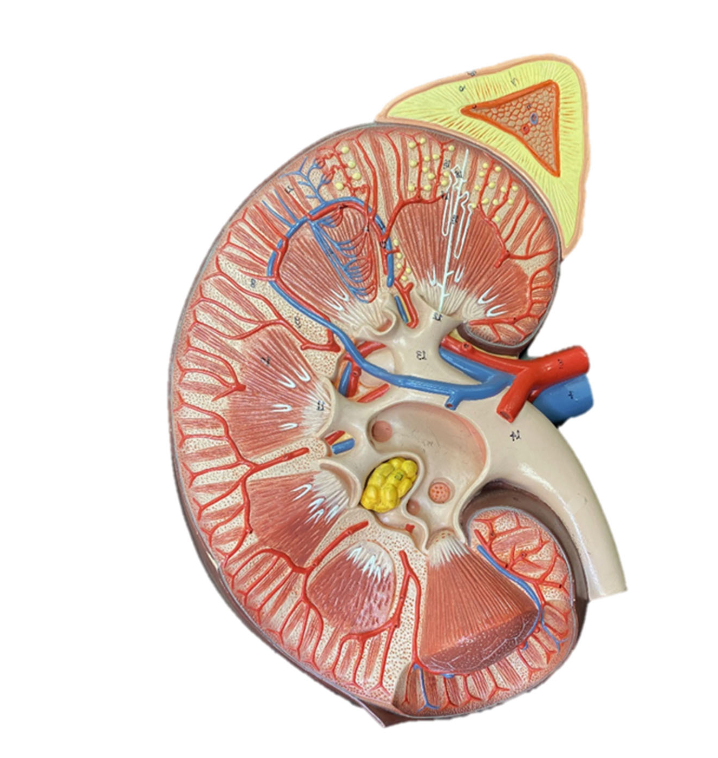
Identify the renal columns
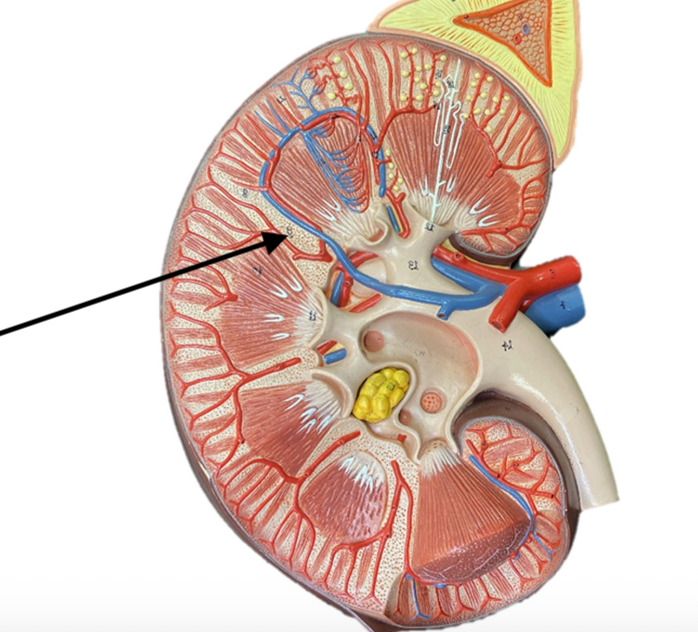
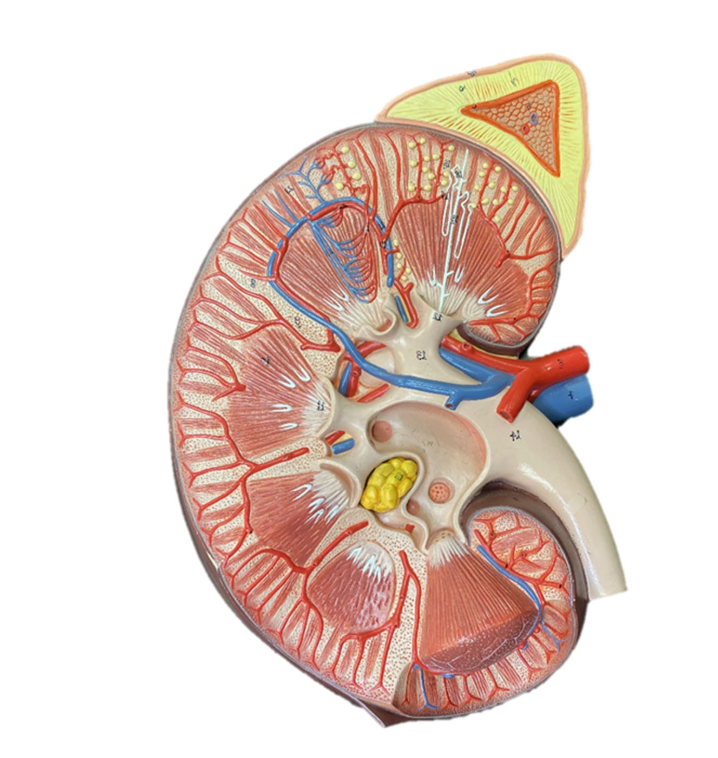
Identify the renal cortex
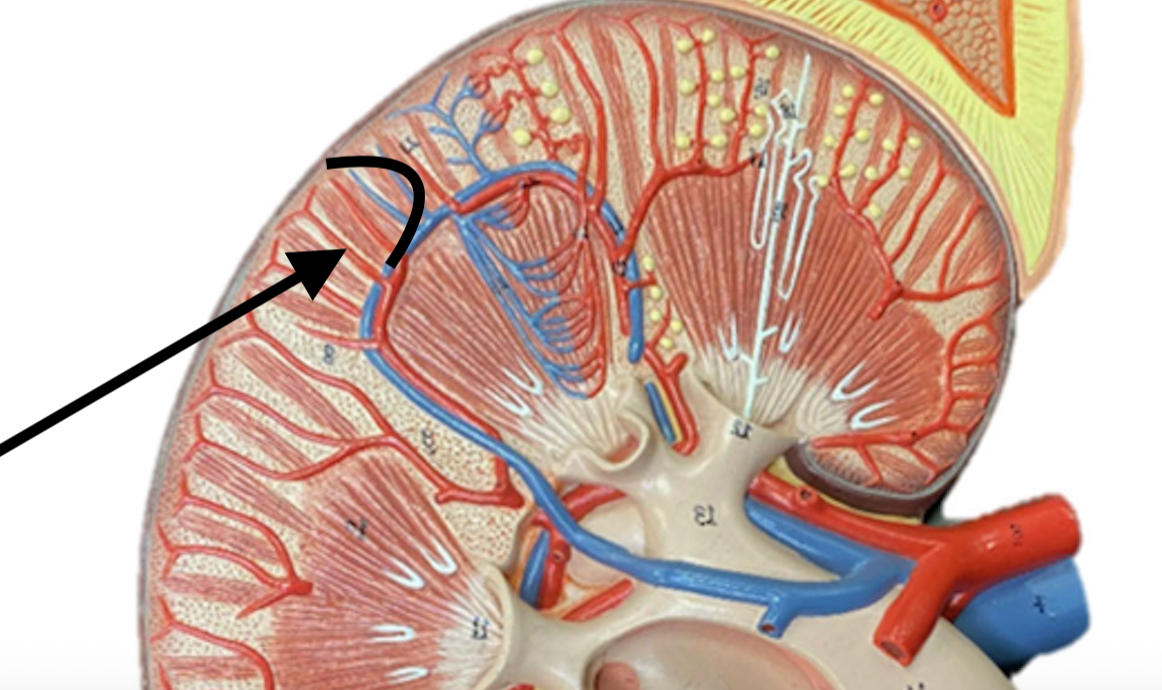
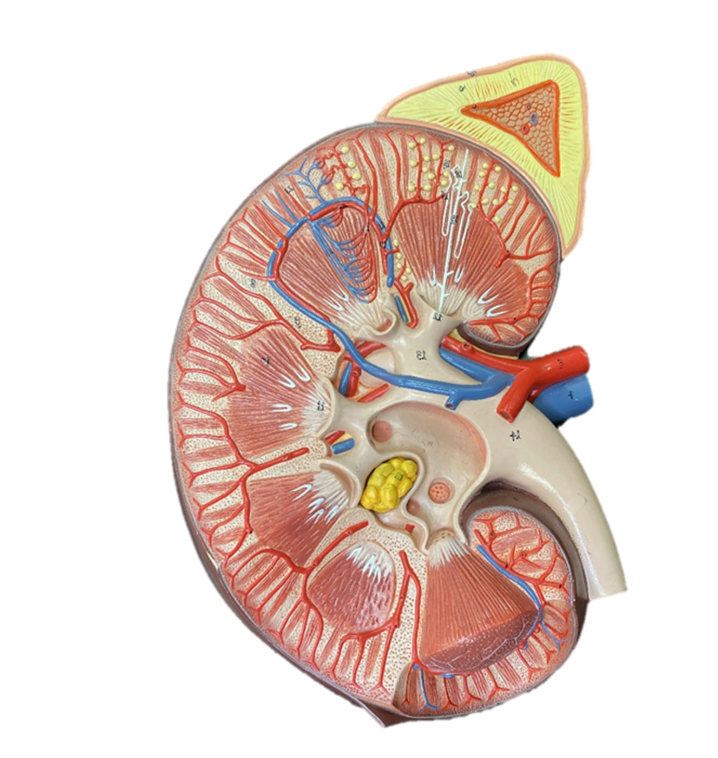
Identify the renal medula

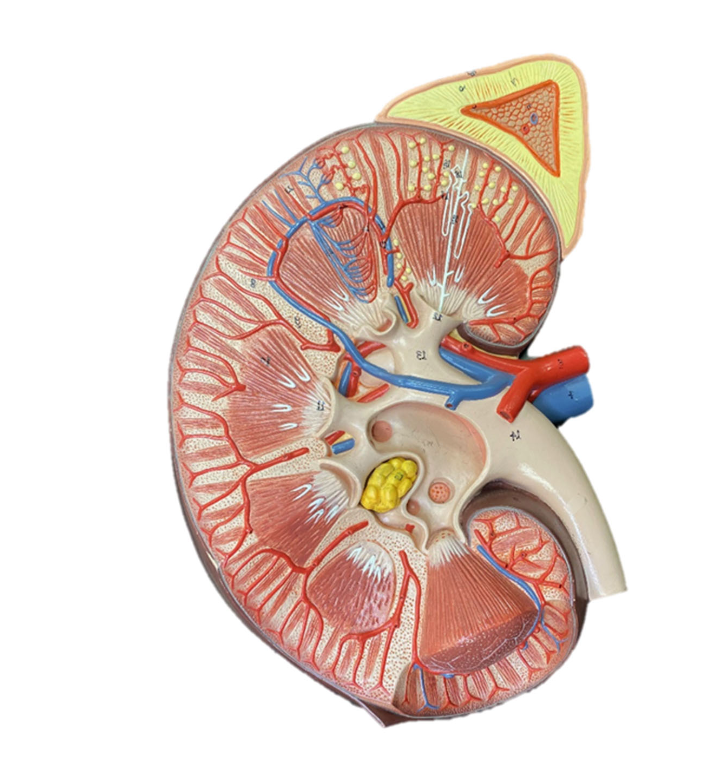
Identify the renal pelvis
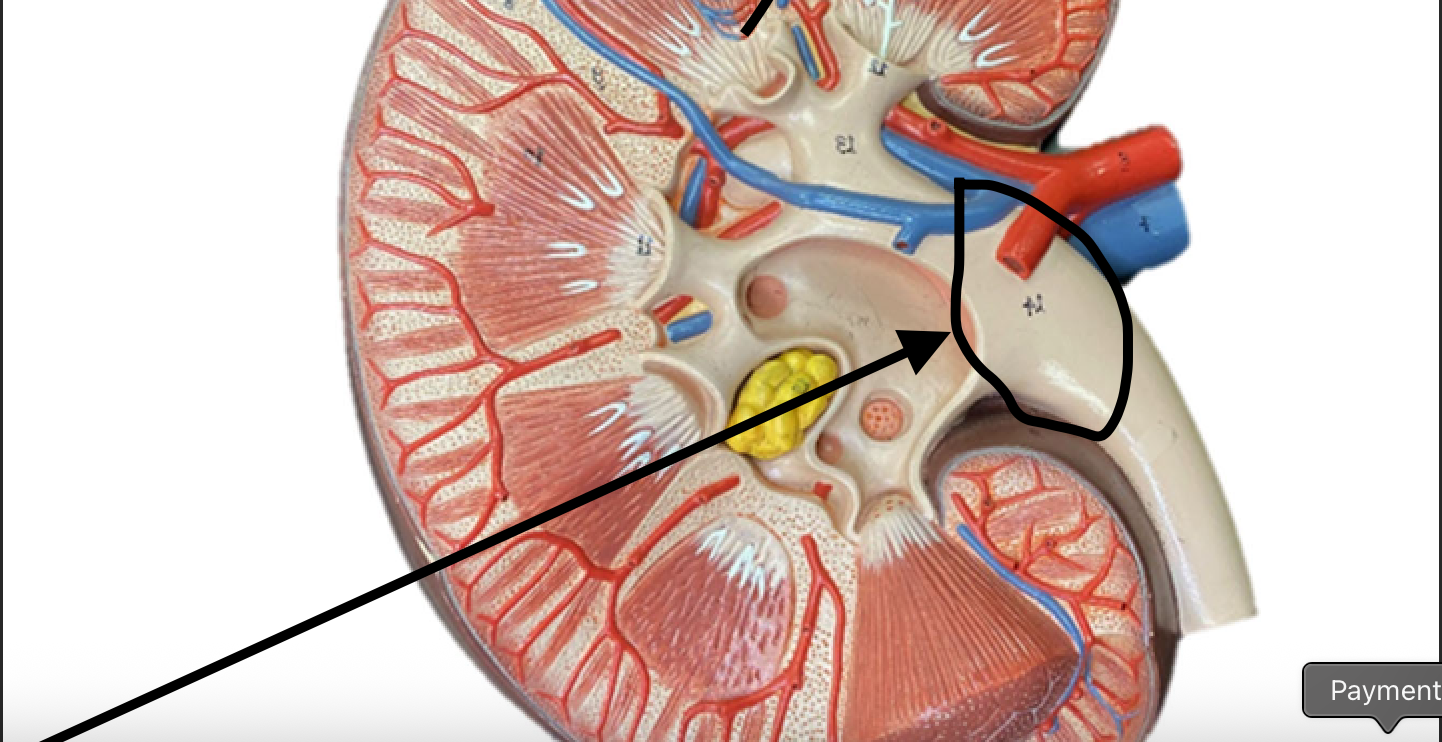
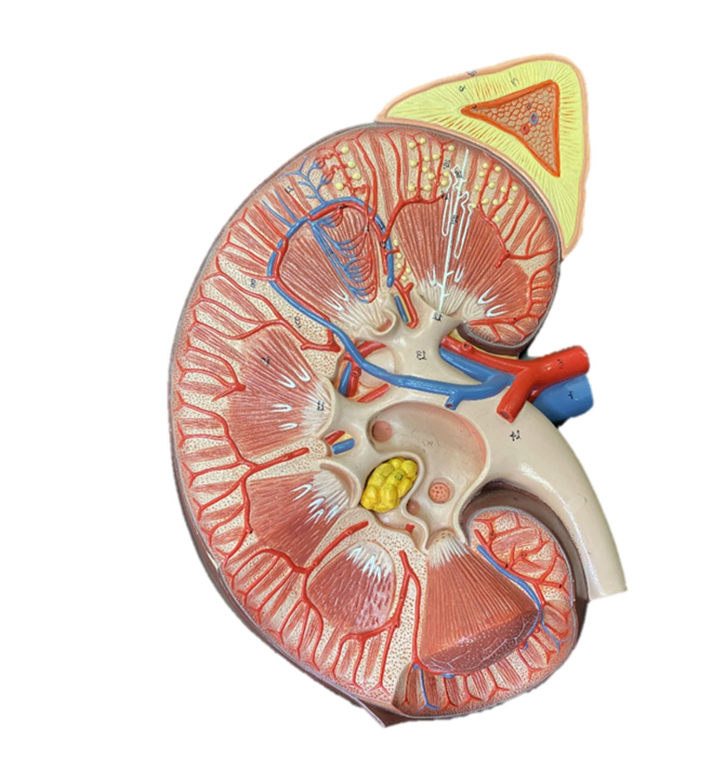
Identify the renal pyramids
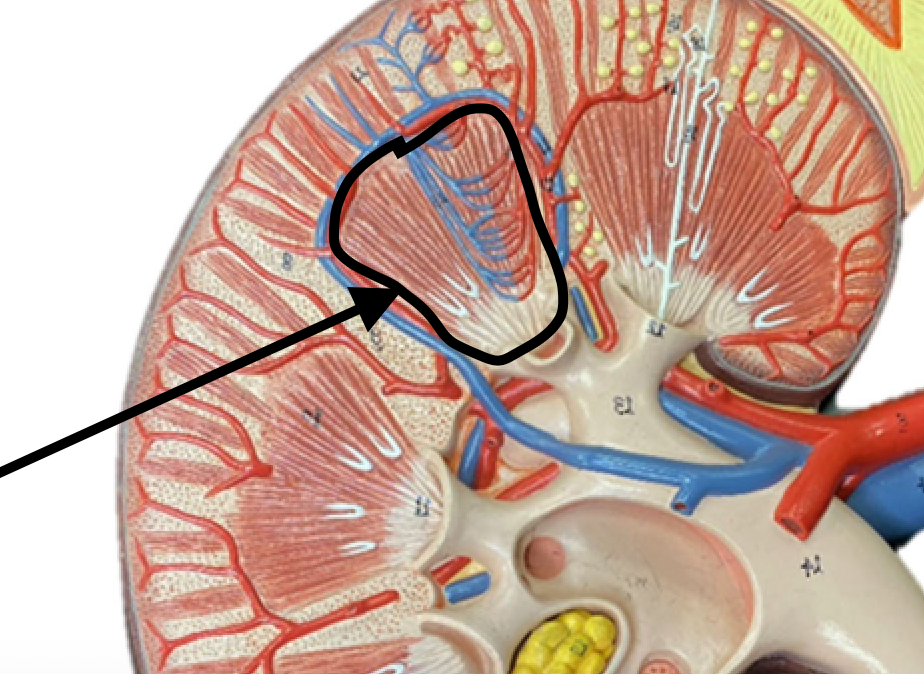
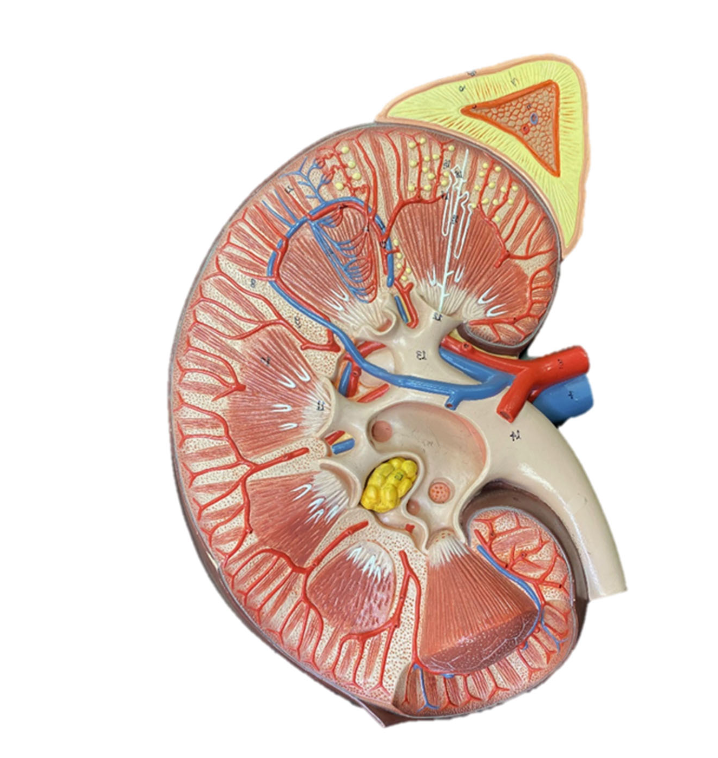
Identify the renal vein
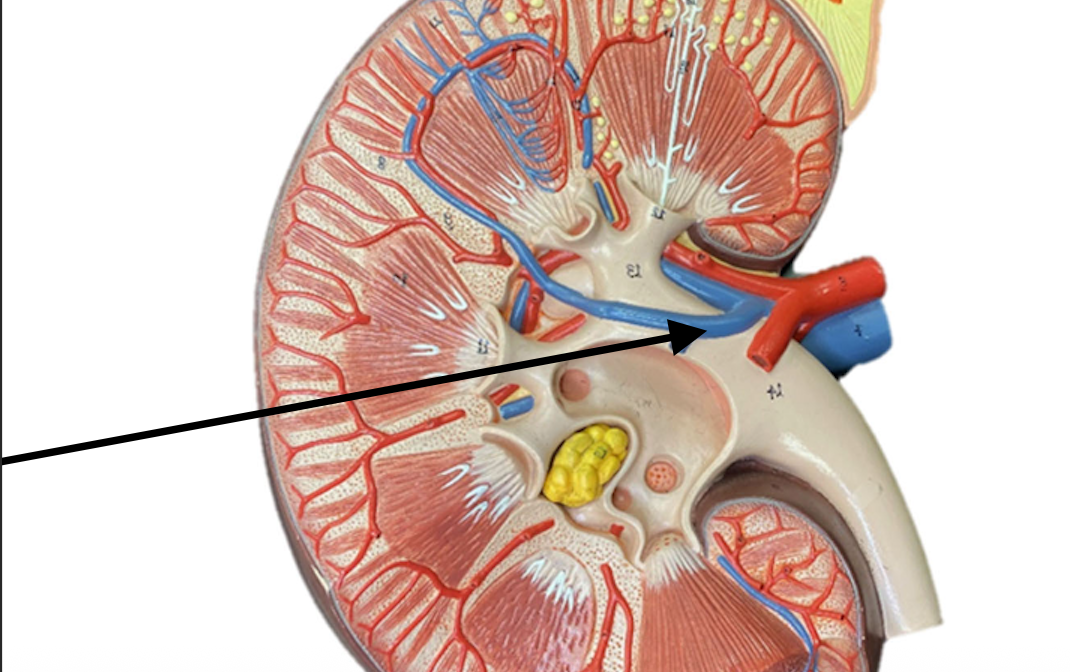
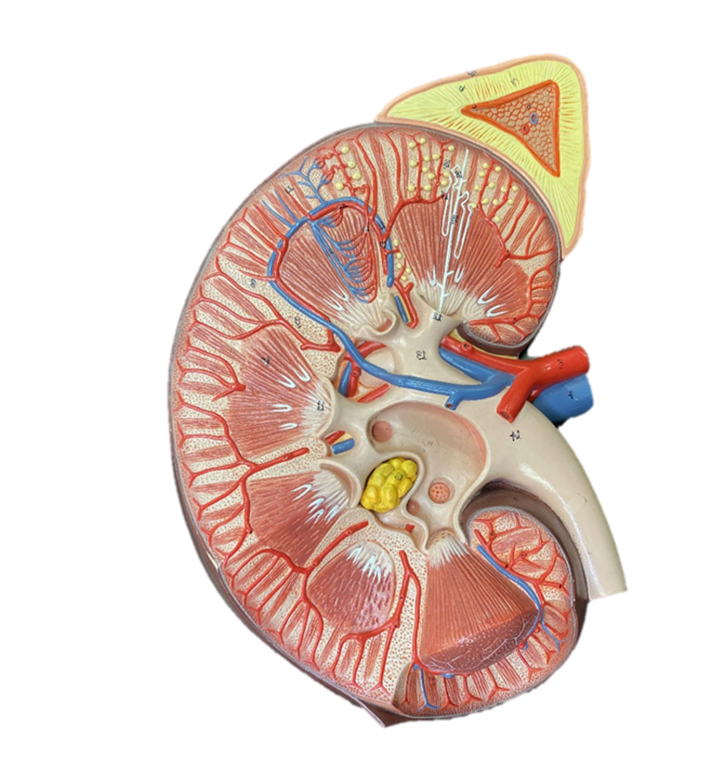
Identify the segmental artery
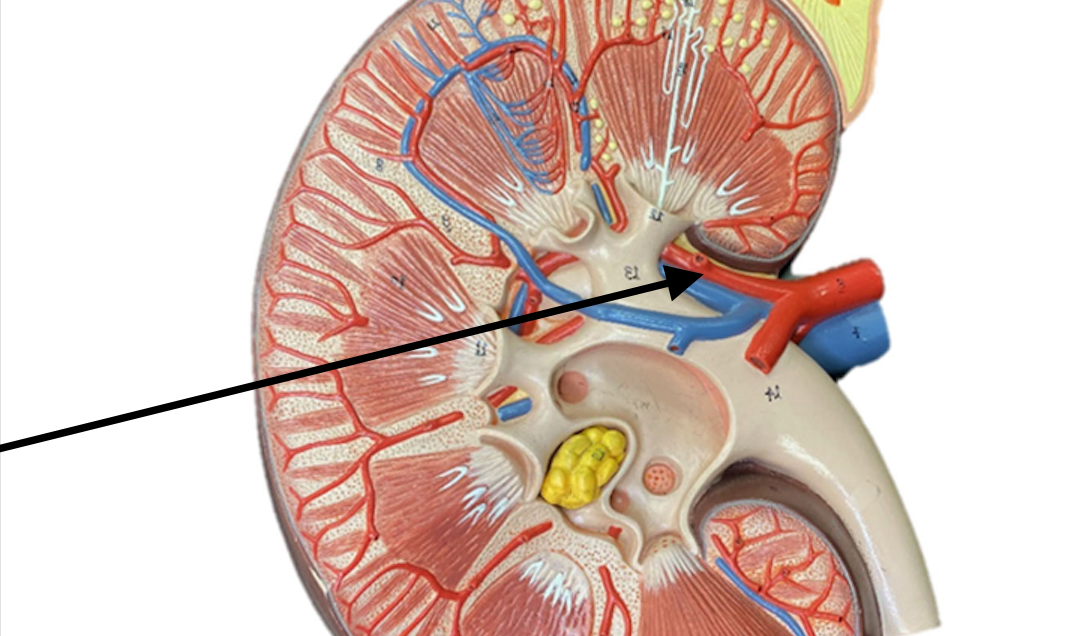
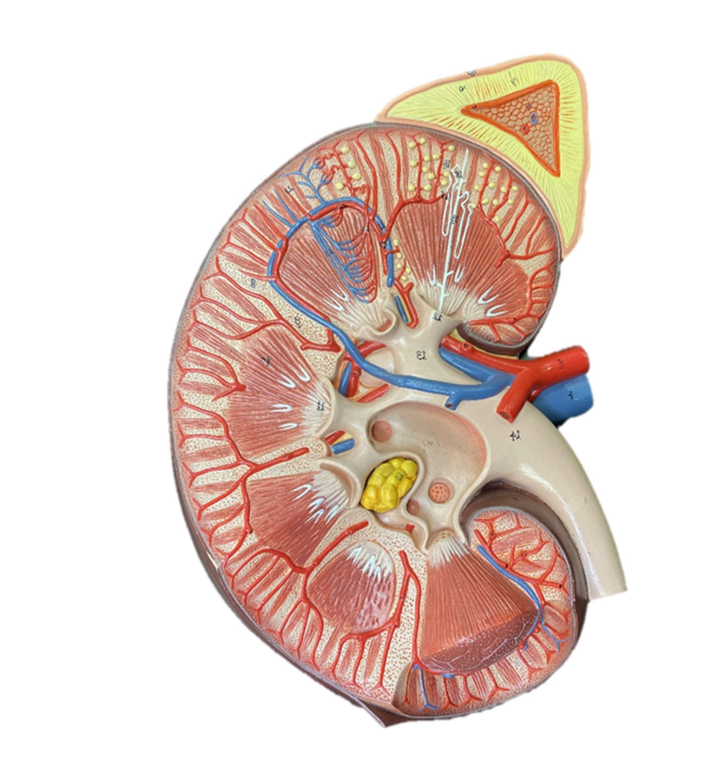
Identify the ureter
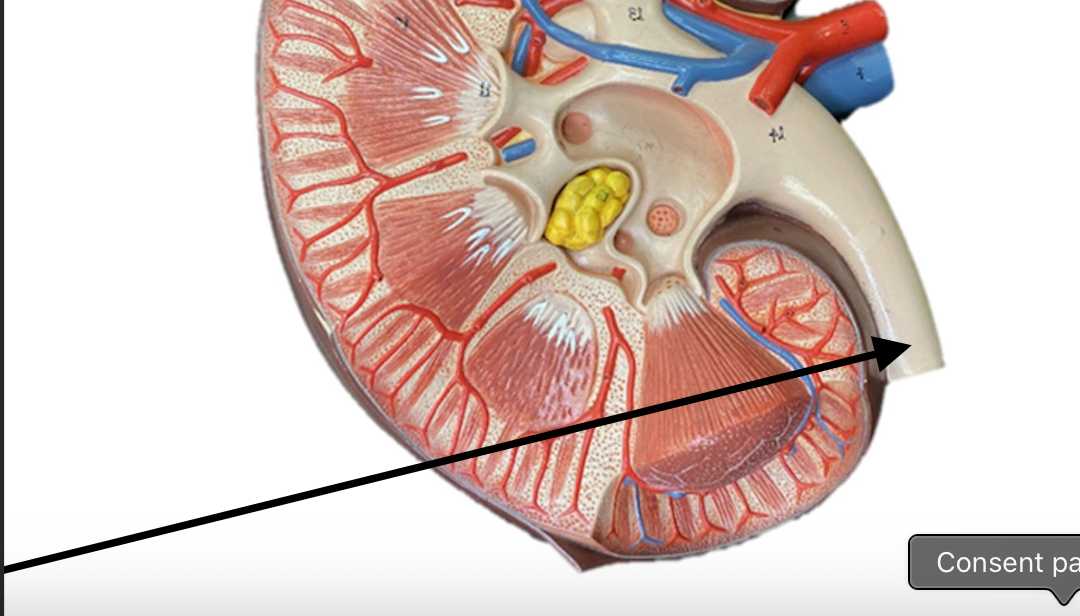
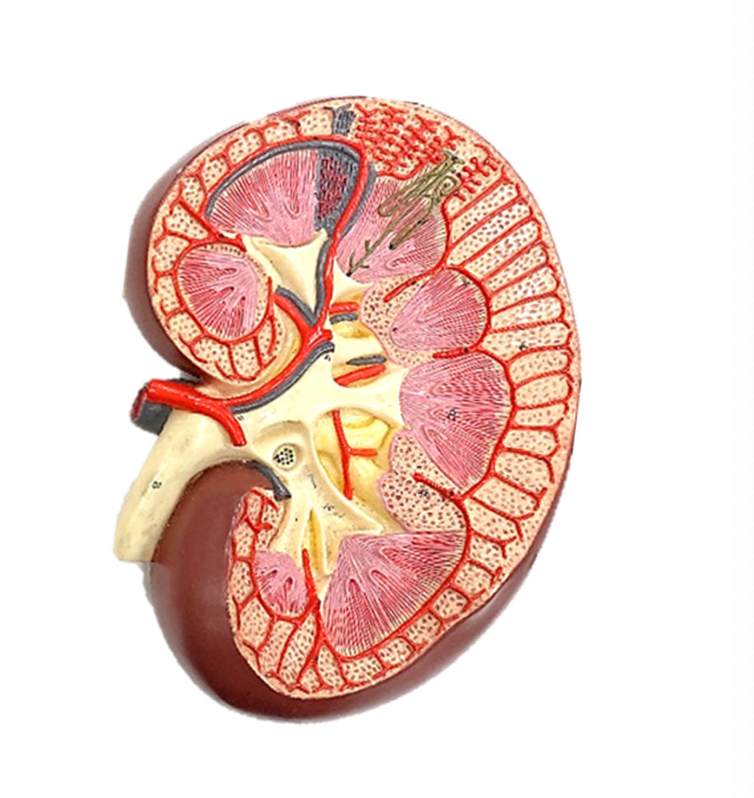
Identify the arcuate artery
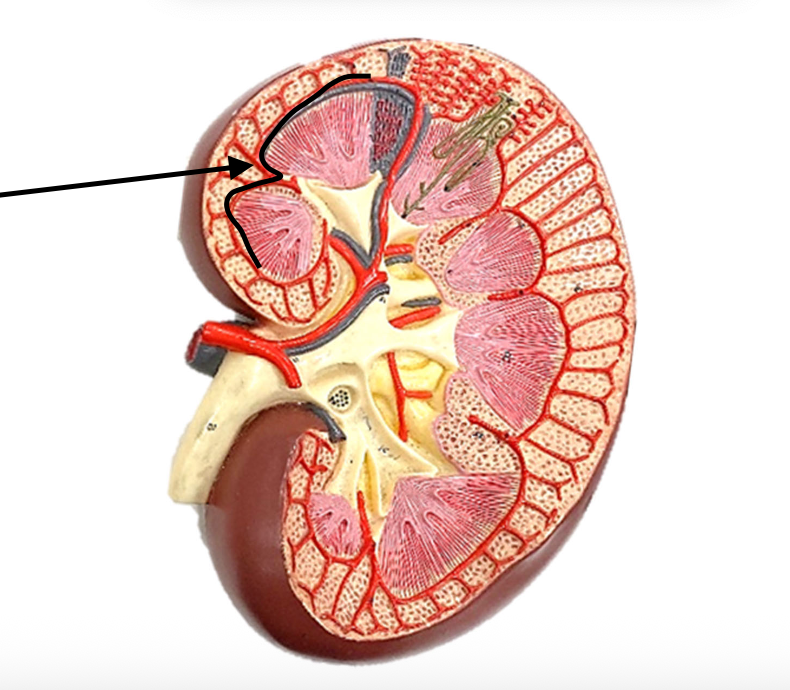
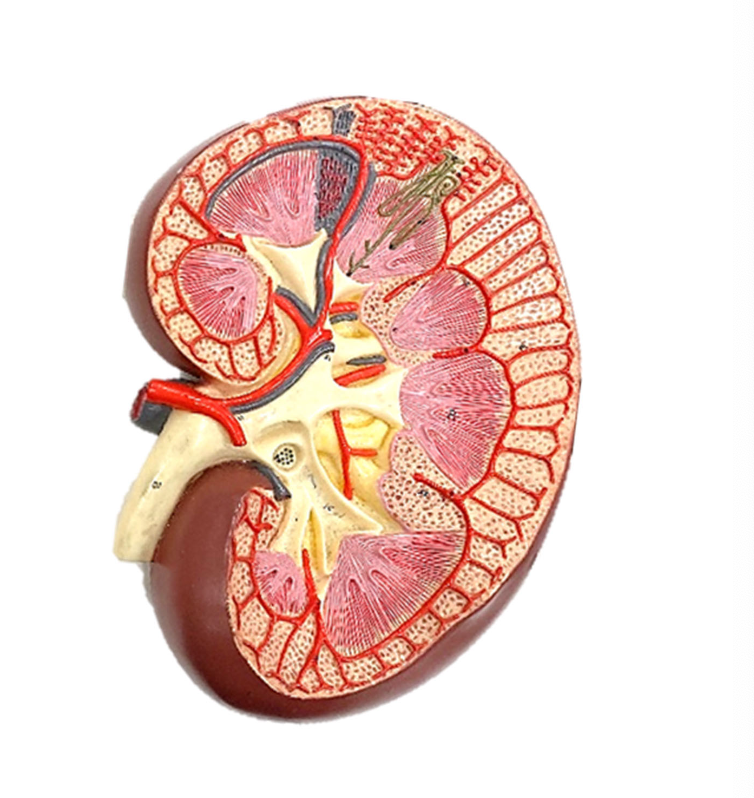
Identify the cortical radiate artery
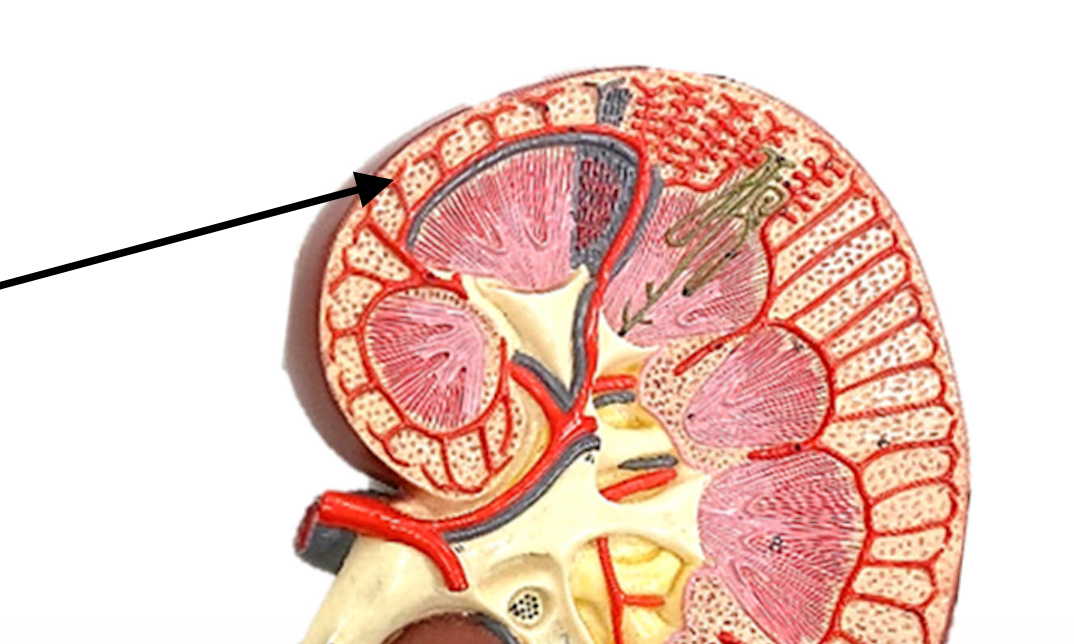
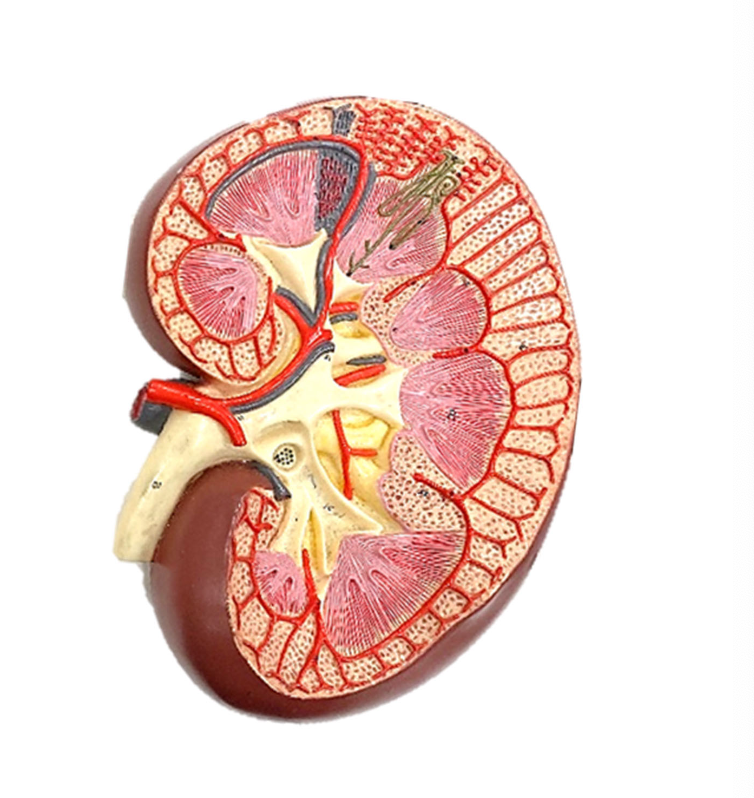
Identify the hilium
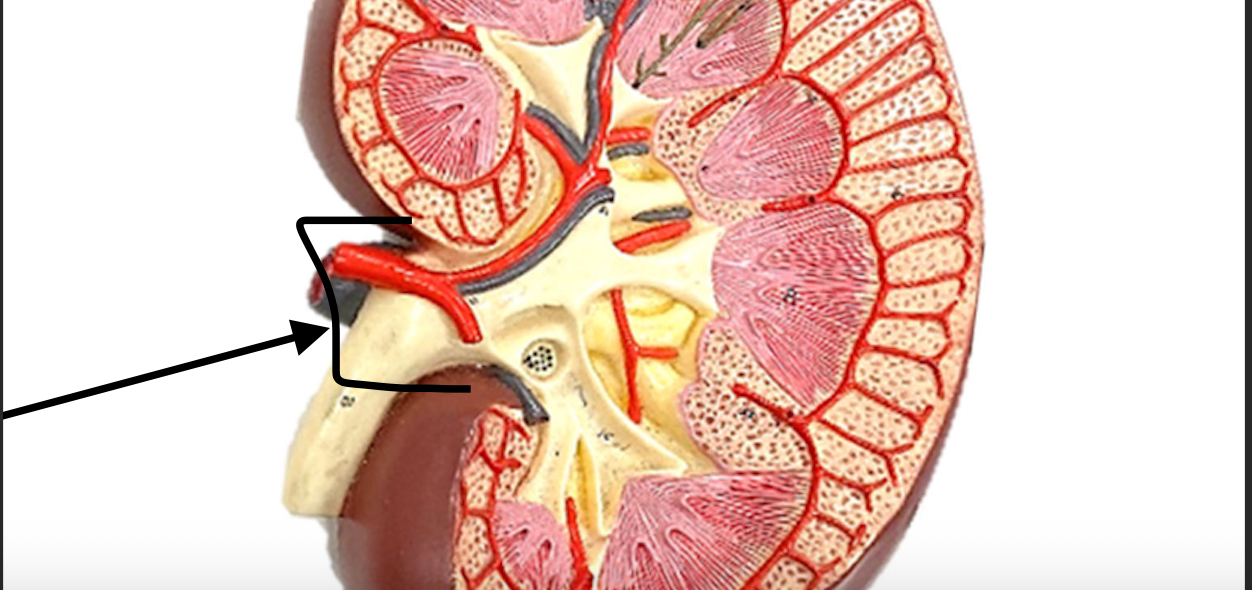
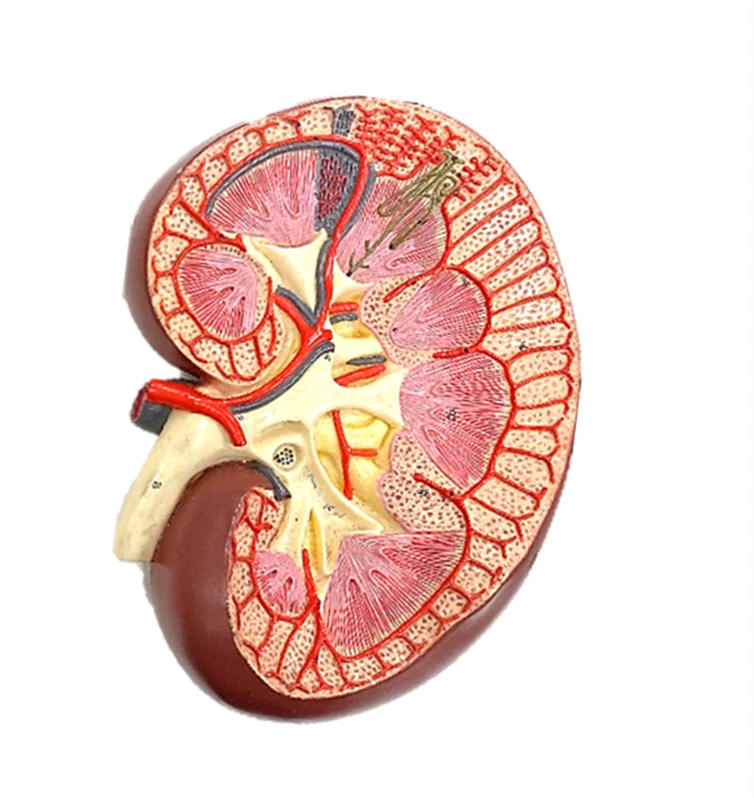
Identify the interlober artery
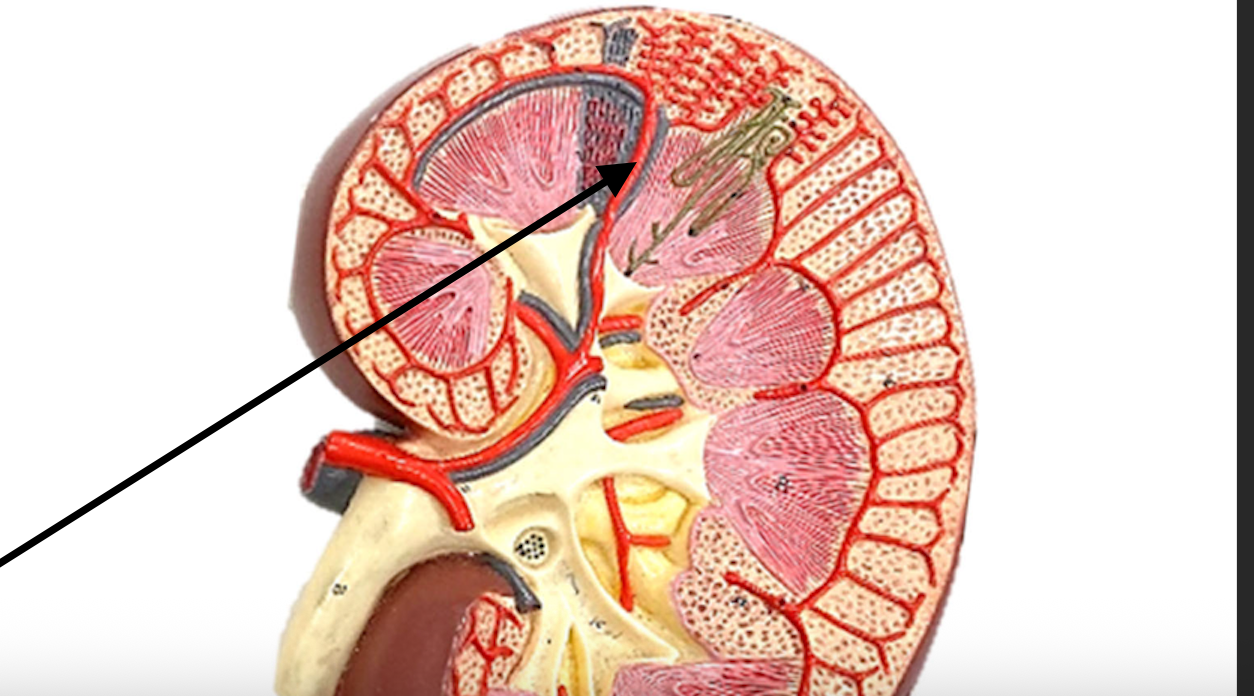
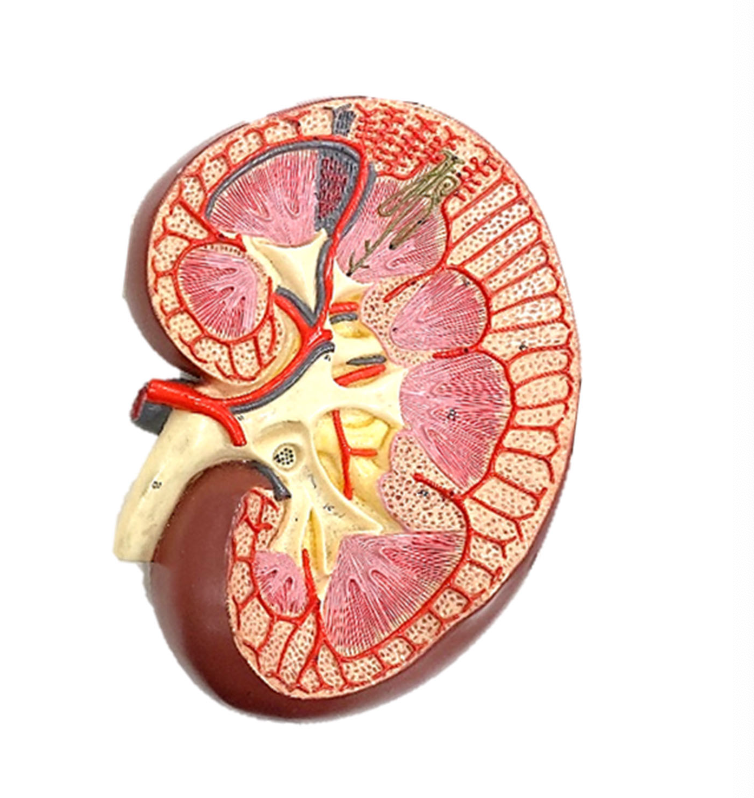
Identify the lobe (of the kidney)

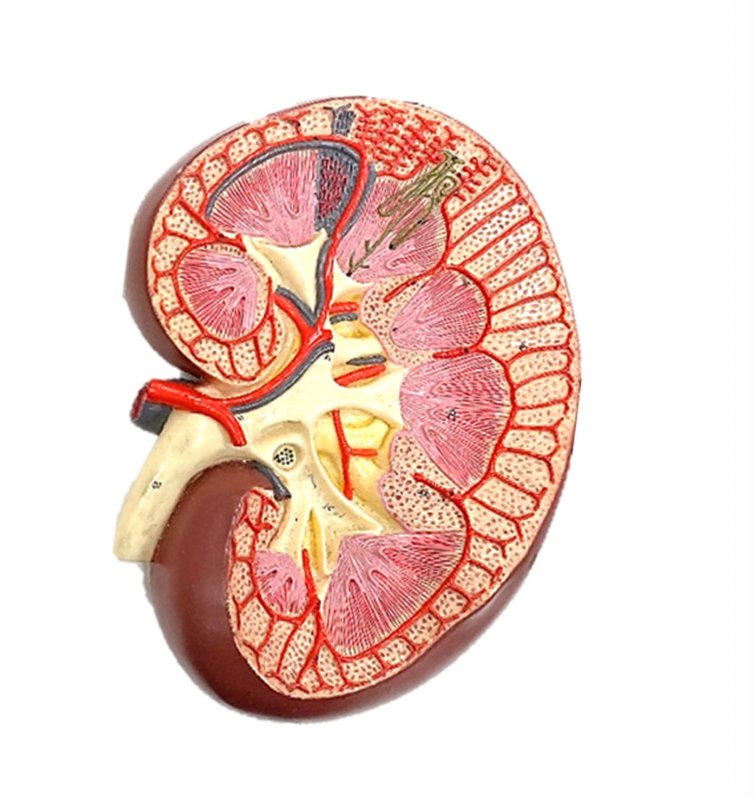
Identify the major calyx
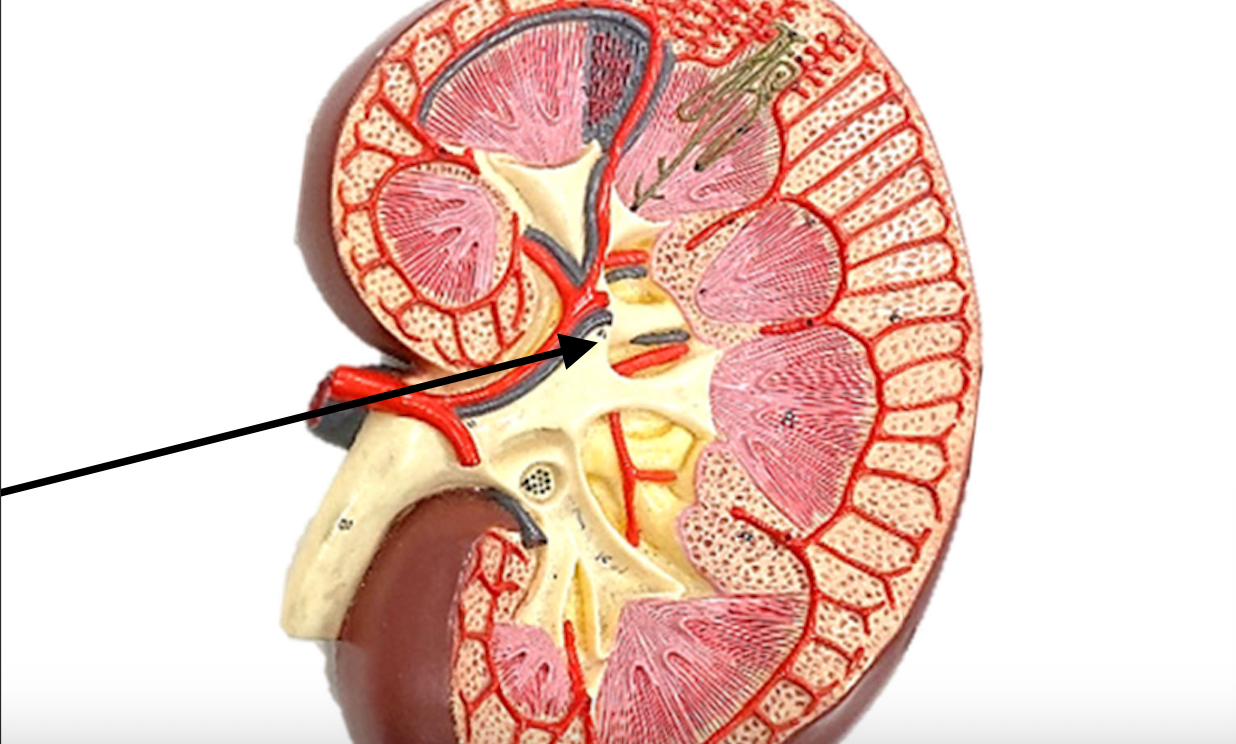
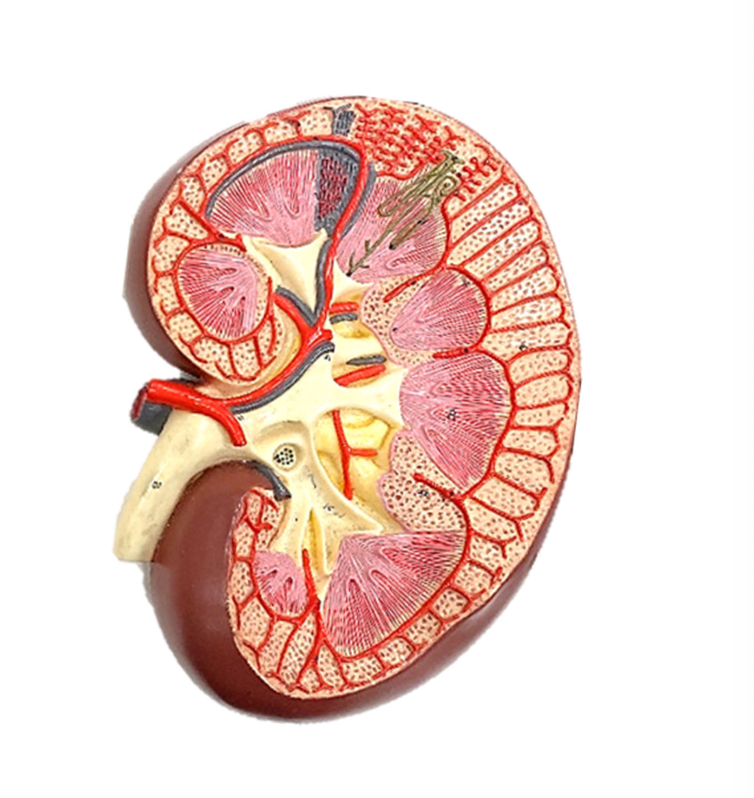
Identify the minor calyx

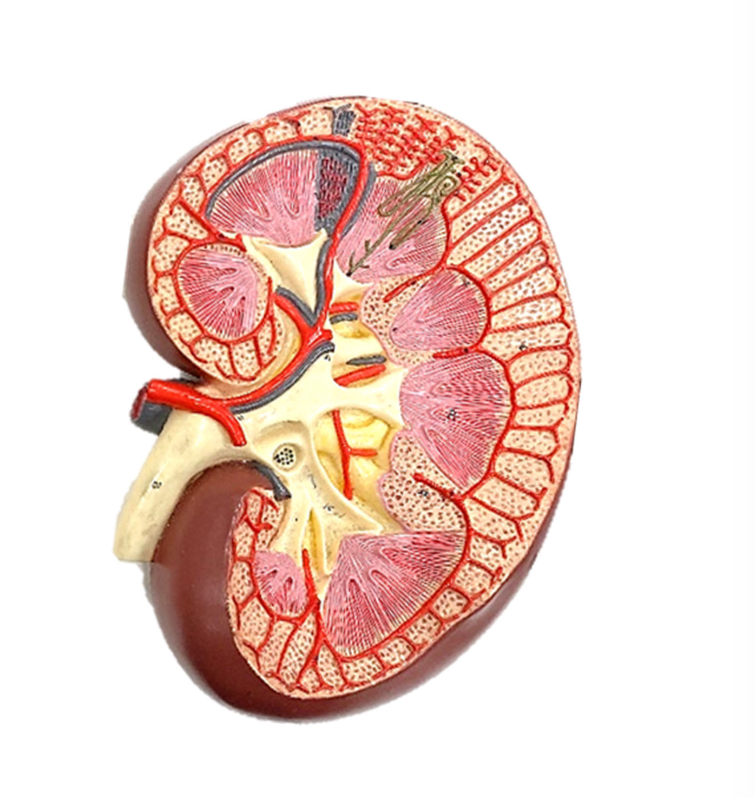
Identify the renal artery
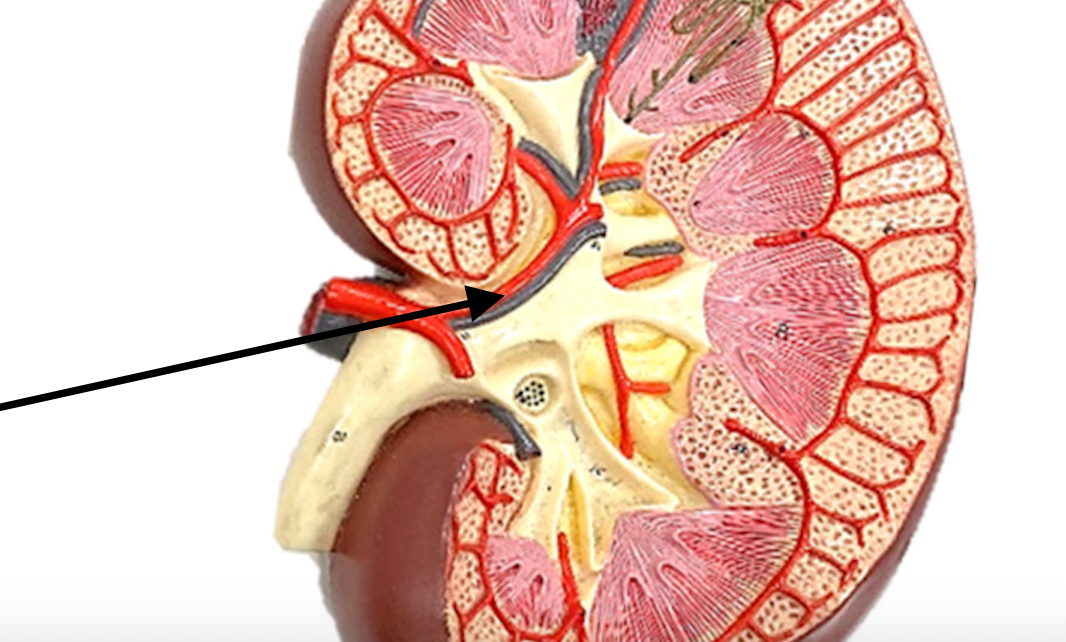
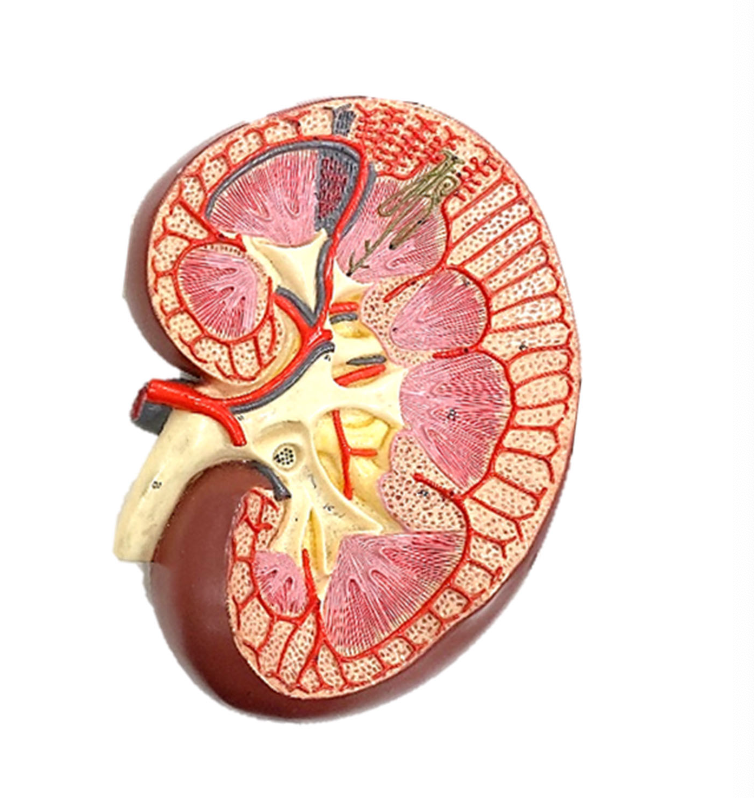
Identify the renal capsule
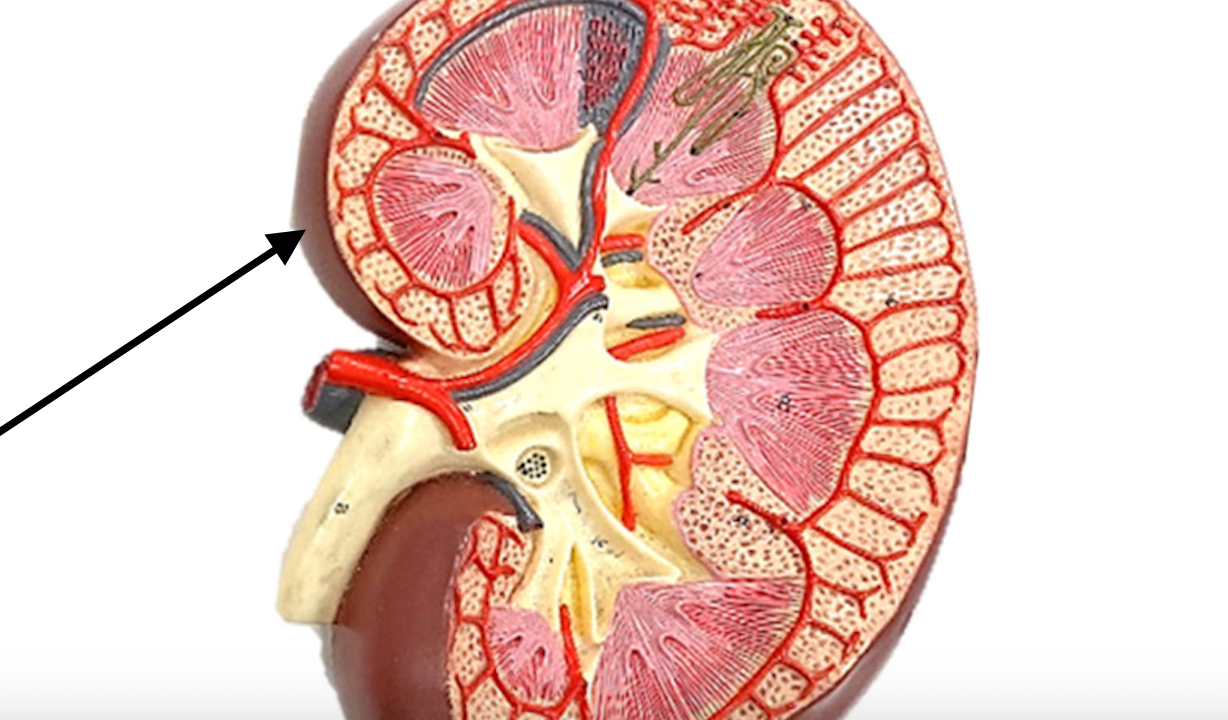
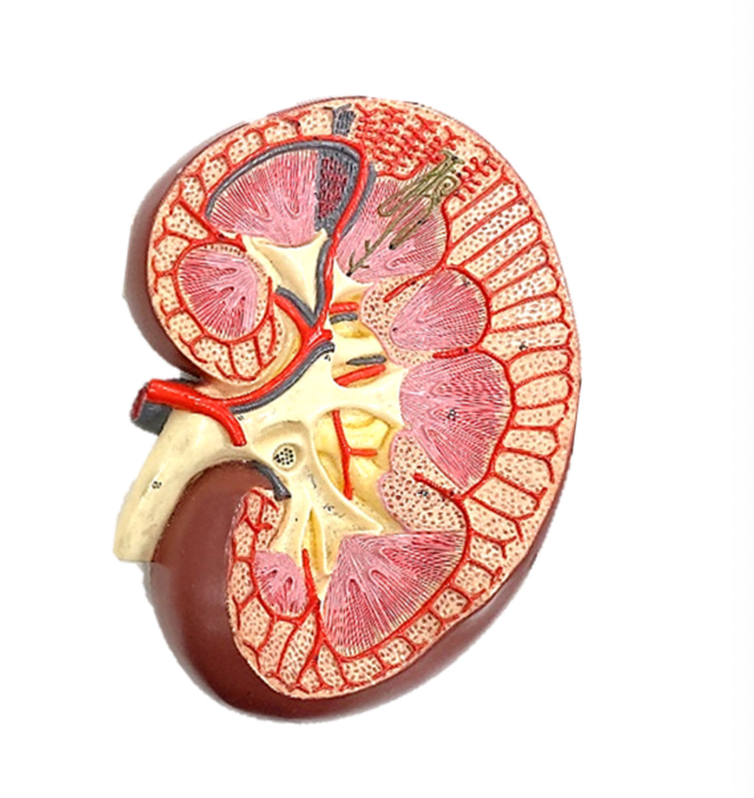
Identify the renal cortex
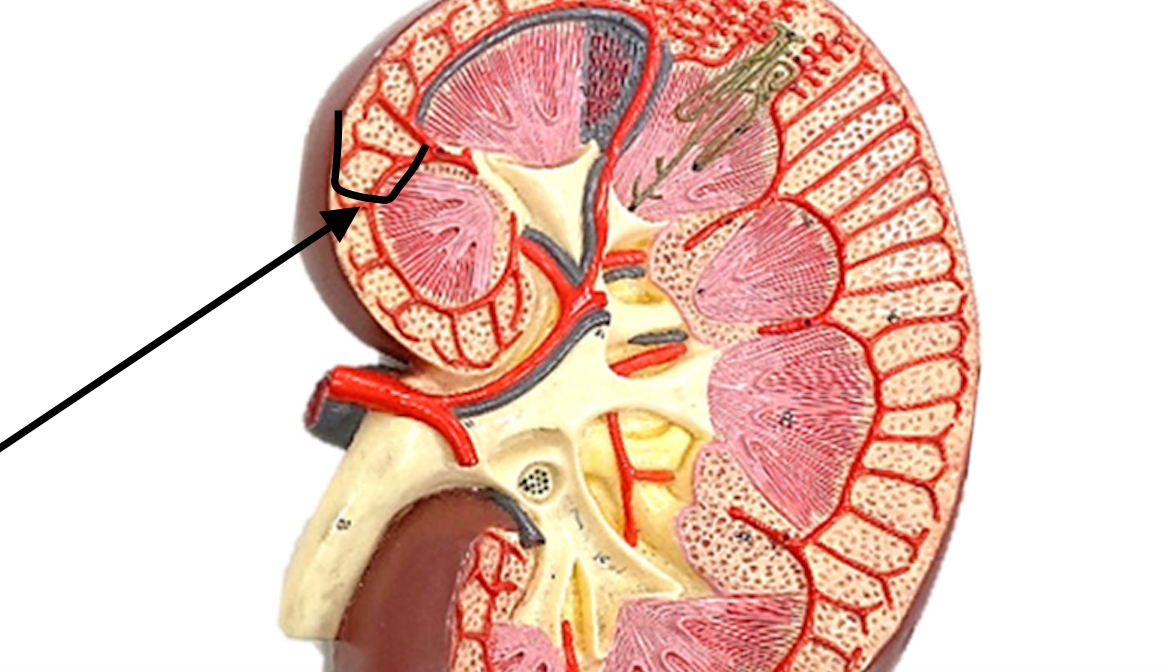
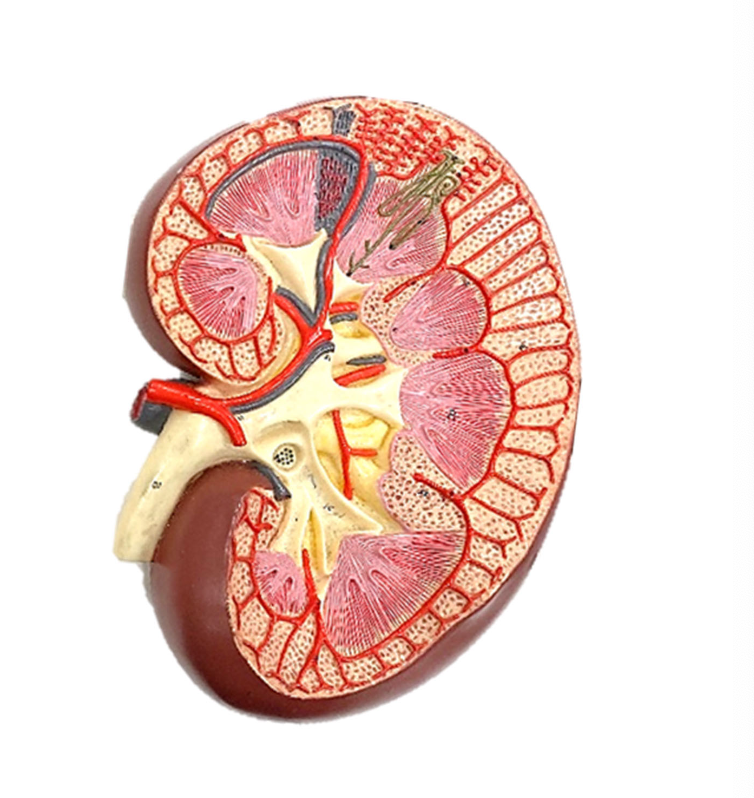
Identify the renal medulla
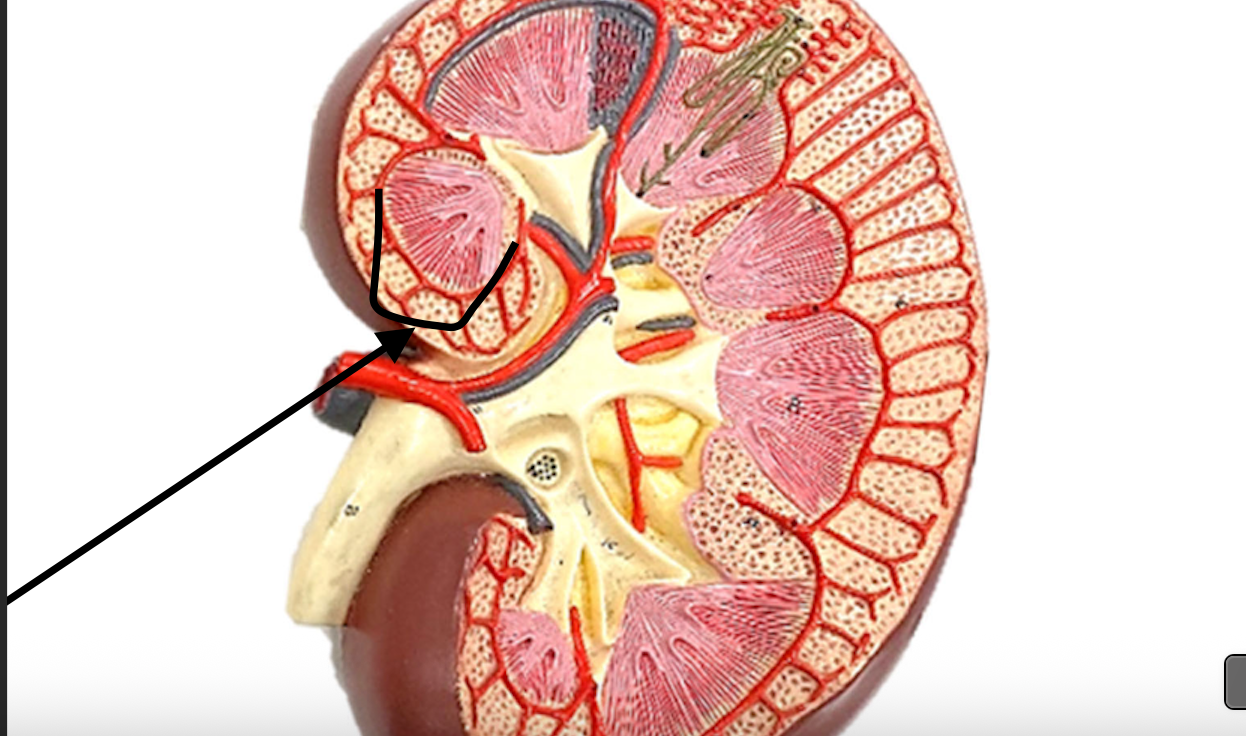
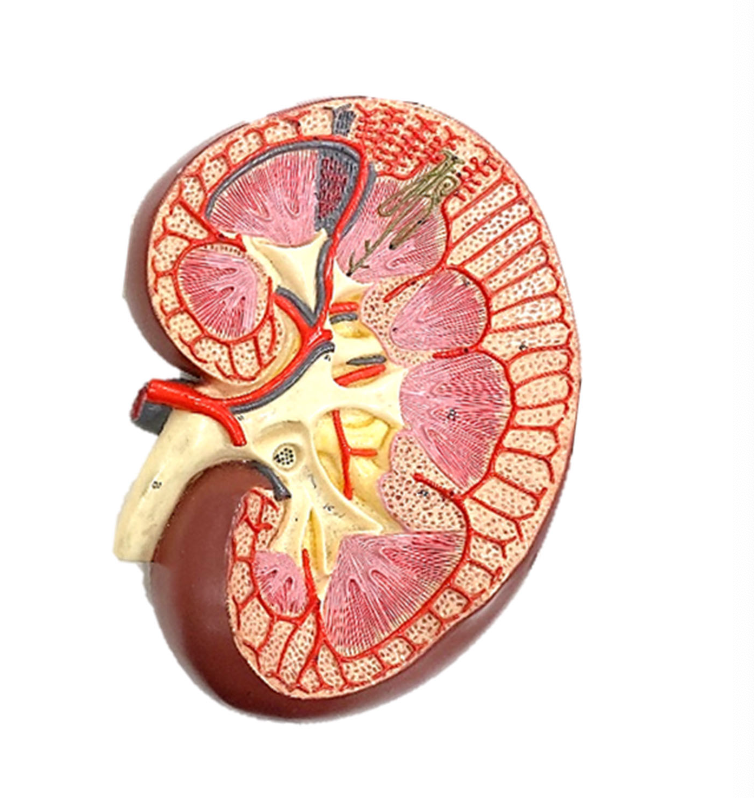
Identify the renal pelvis
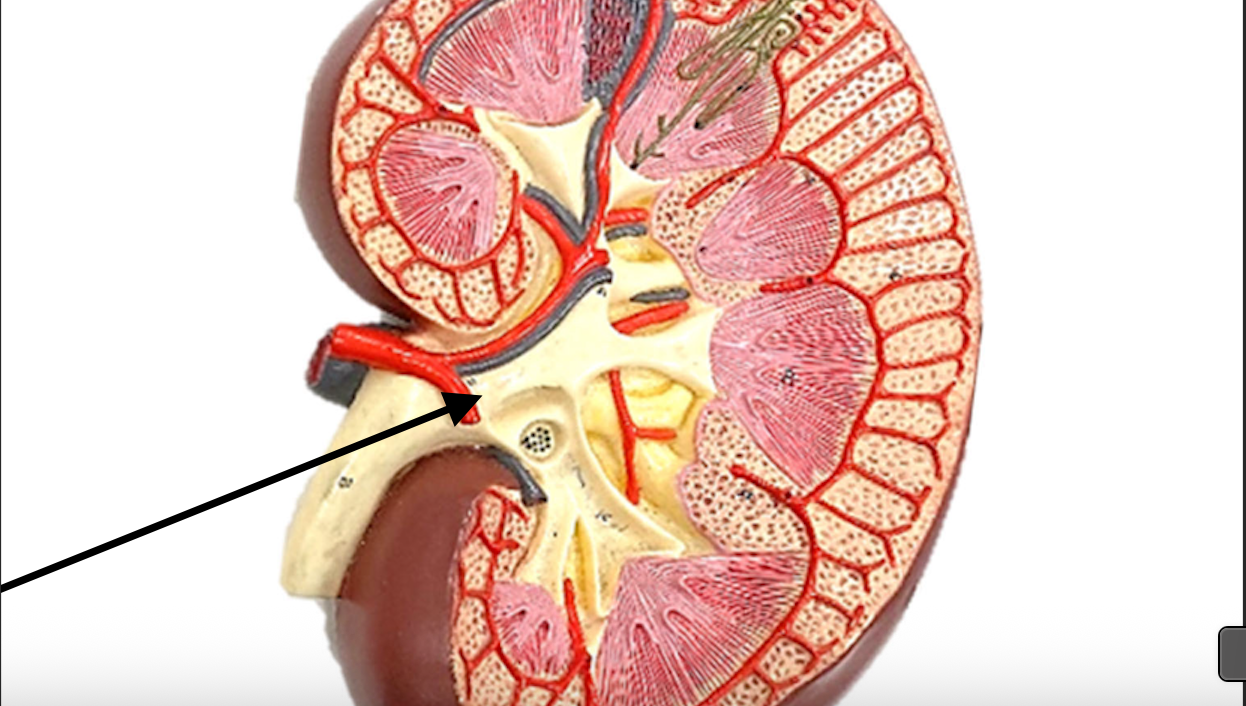

Identify the pyramids
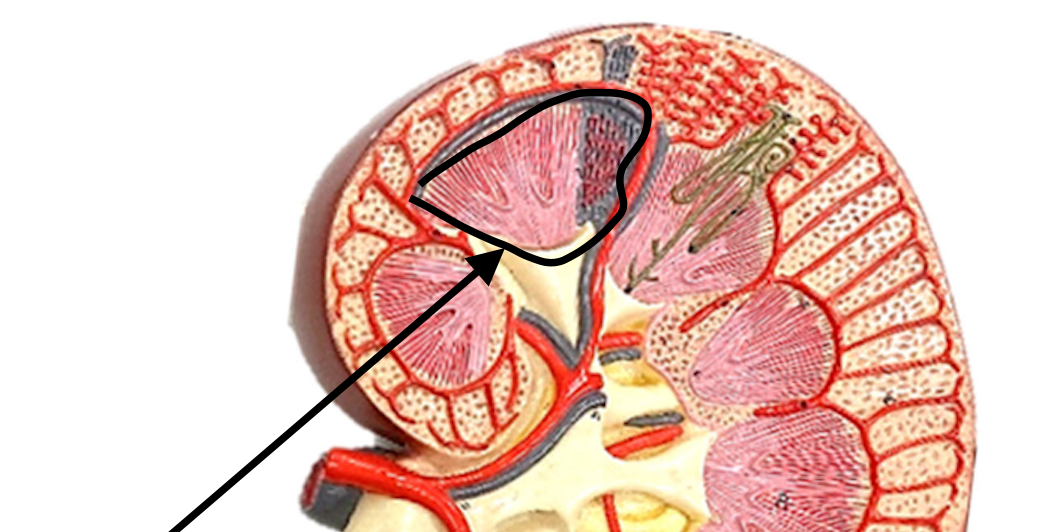
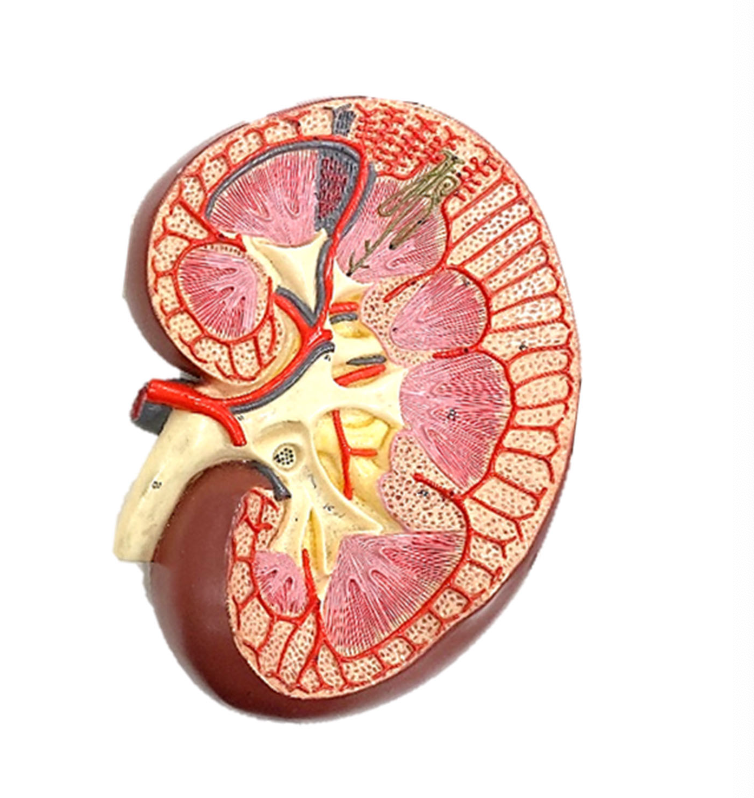
Identify the renal vein

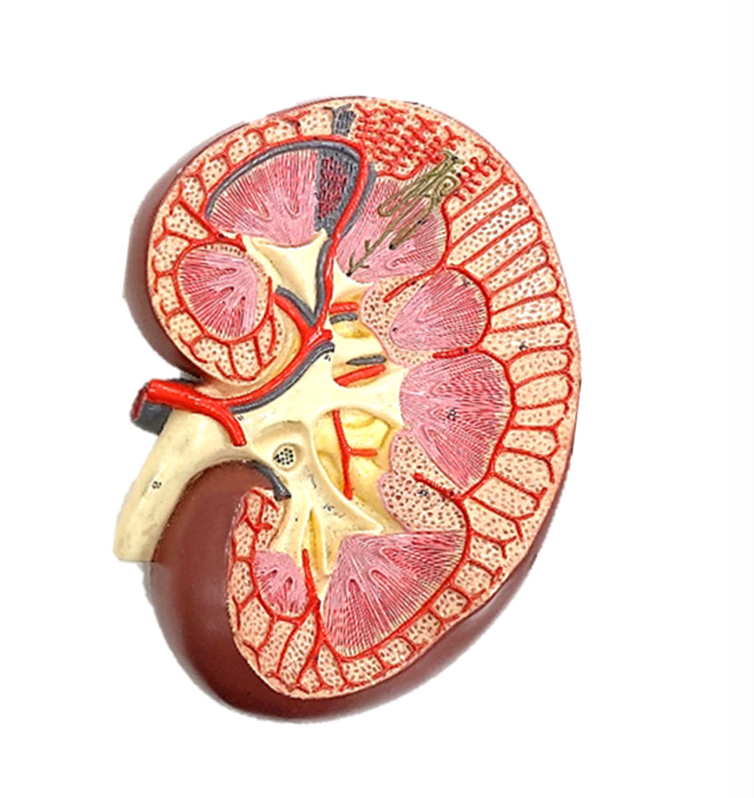
Identify the segmental artery
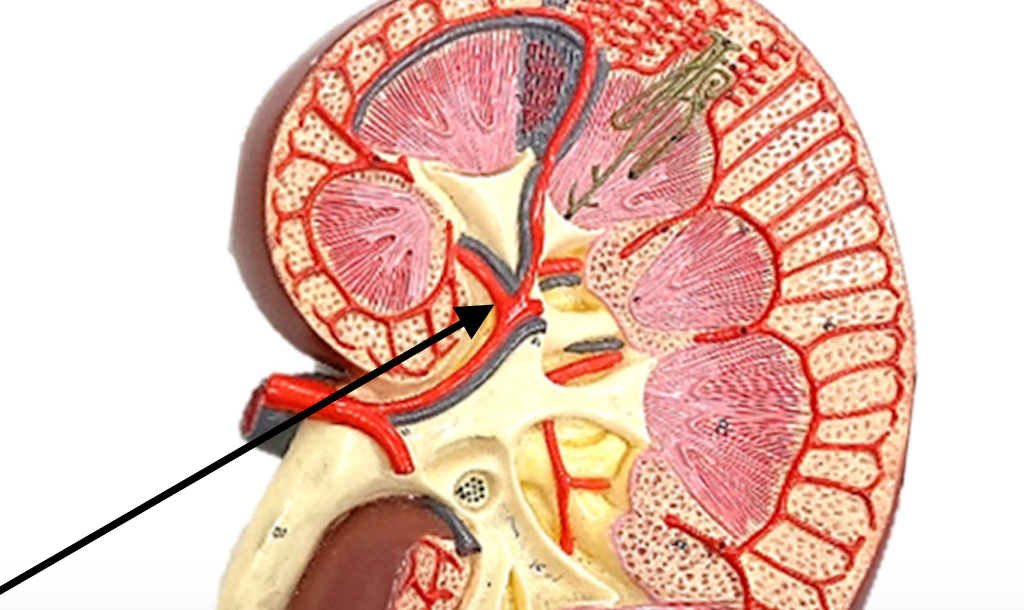
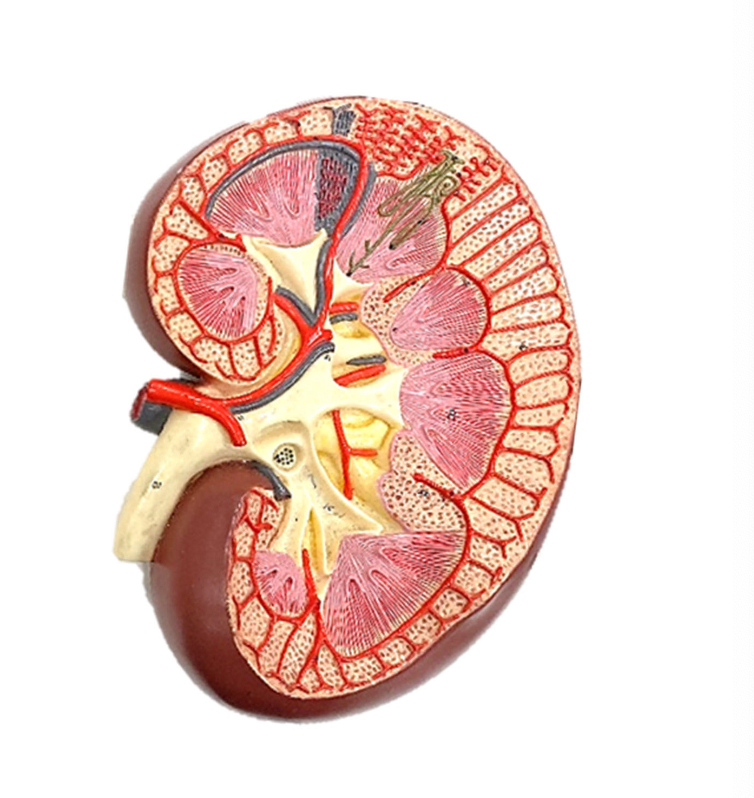
Identify the ureter

Q: Determine which part of the kidney is described below:
______ : the dense irregular connective tissue surrounding the kidney, maintaining its shape
A: Renal capsule
Q: Determine which part of the kidney is described below:
______ : the outer regions of the kidney where the renal corpuscles are located
A: Renal cortex
Q: Determine which part of the kidney is described below:
______ : the inner regions of the kidney where nephron loops are located
A: Renal medulla
Q: Determine which part of the kidney is described below:
______ : the extensions of the renal cortex that divide the medulla into pyramids
A: Renal columns
Q: Determine which part of the kidney is described below:
______ : the location where blood vessels and the ureters attach to the kidney
A: Hilum
Q: Determine which urine-transporting structure is described by the statement below:
______ : the location where urine from individual renal pyramids is first drained
A: Minor calyx
Q: Determine which urine-transporting structure is described by the statement below:
______ : the larger locations where urine from multiple pyramids is combined (before it reaches the renal pelvis)
A: Major calyx
Q: Determine which urine-transporting structure is described by the statement below:
______ : the large, funnel-shaped portion of the kidney where all urine collects (before it leaves the kidney)
A: Renal pelvis
Q: Determine which urine-transporting structure is described by the statement below:
______ : the smooth muscle tubes that drain urine from the kidneys
A: Ureters
Q: Determine which urine-transporting structure is described by the statement below:
______ : the expandable organ in the lower pelvic cavity where urine is stored
A: Urinary bladder
Q: Determine which urine-transporting structure is described by the statement below:
______ : the circular smooth muscle that is involuntarily relaxed to enable the process of micturition
A: Internal urethral sphincter
Q: Determine which urine-transporting structure is described by the statement below:
______ : the tube that transports urine from the urinary bladder out of the body
A: Urethra
Q: Determine which urine-transporting structure is described by the statement below:
______ : the circular skeletal muscle that is consciously relaxed to enable the process of micturition
A: External urethral sphincter
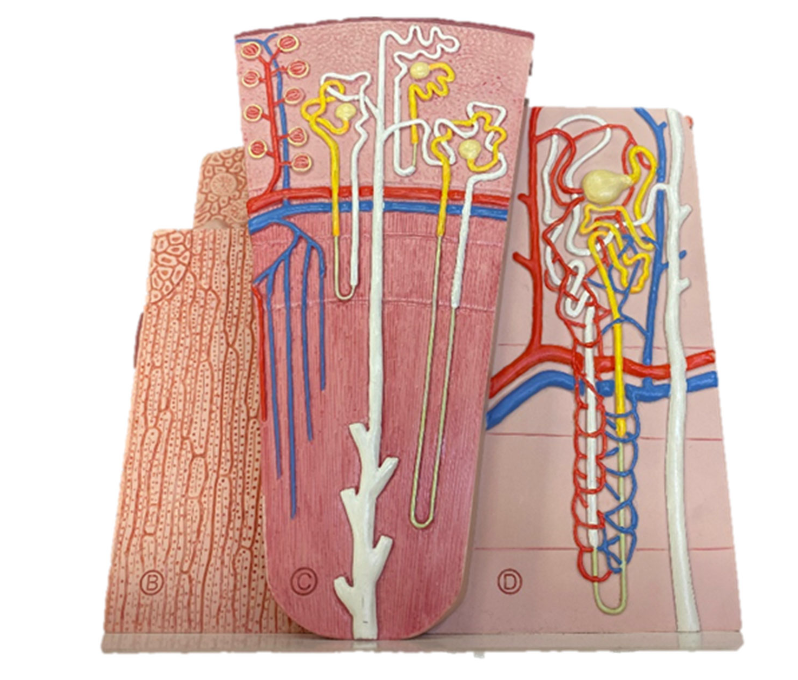
Label the afferent arteriole of the nephron
Double check this
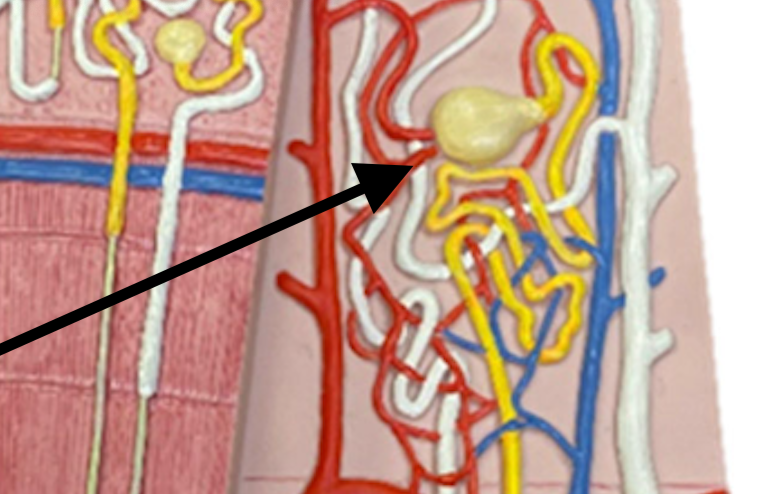

Label the collecting duct of the nephron
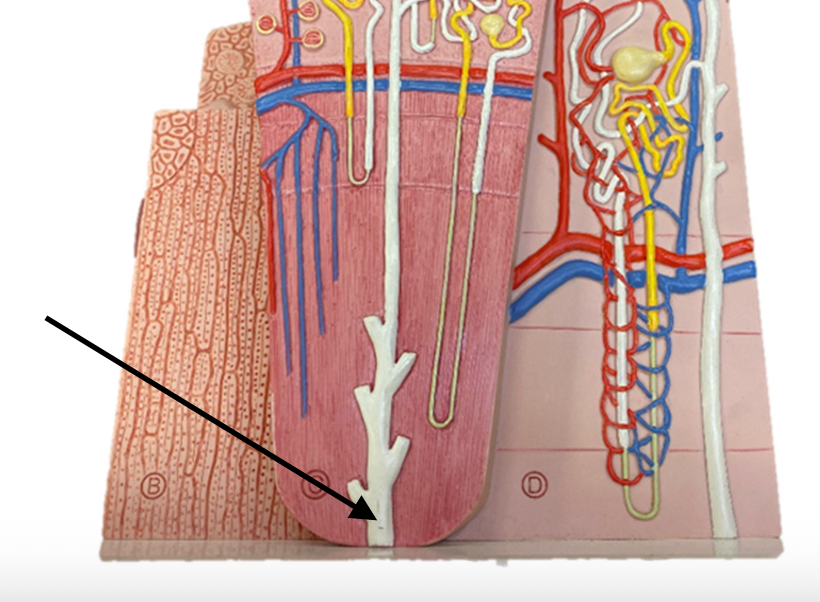
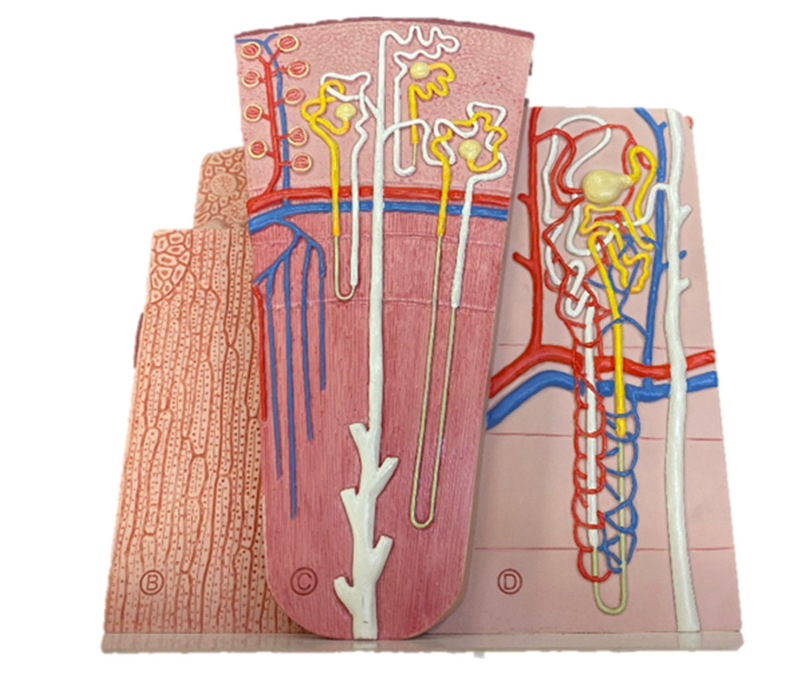
Label the cortical nephron of the nephron


Label the distal convulated tubule of the nephron
?
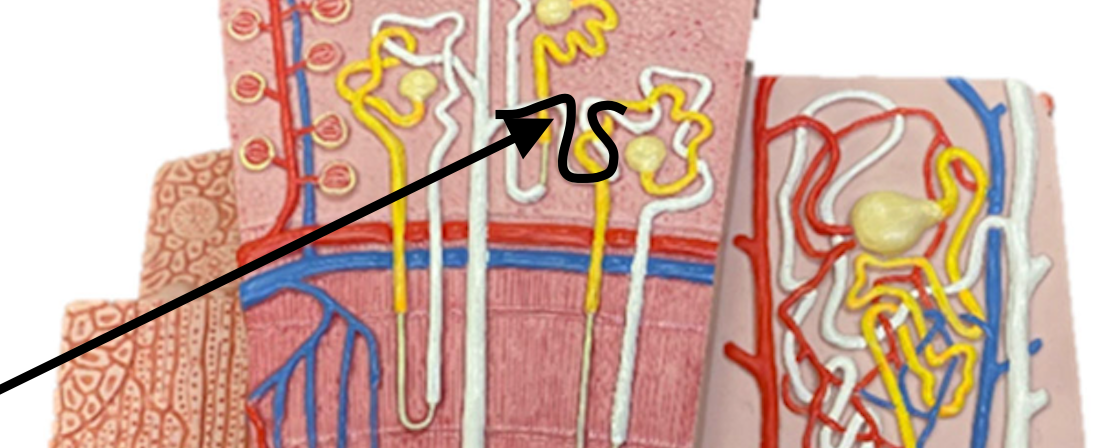

Label the efferent arteriole of the nephron
?
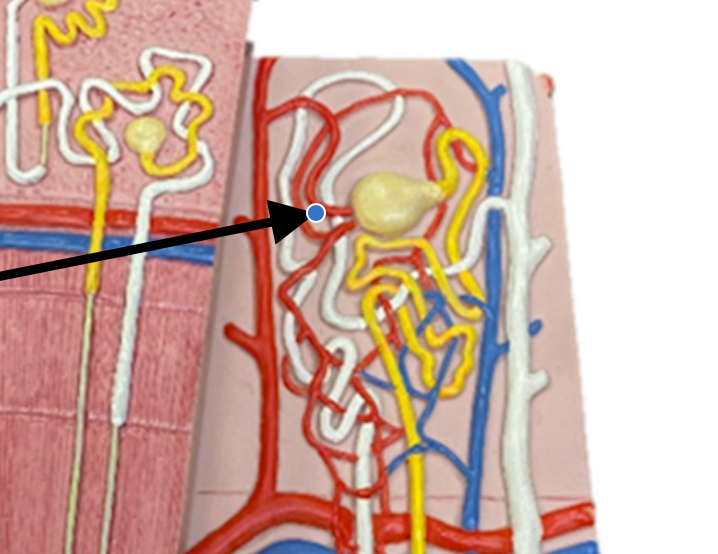
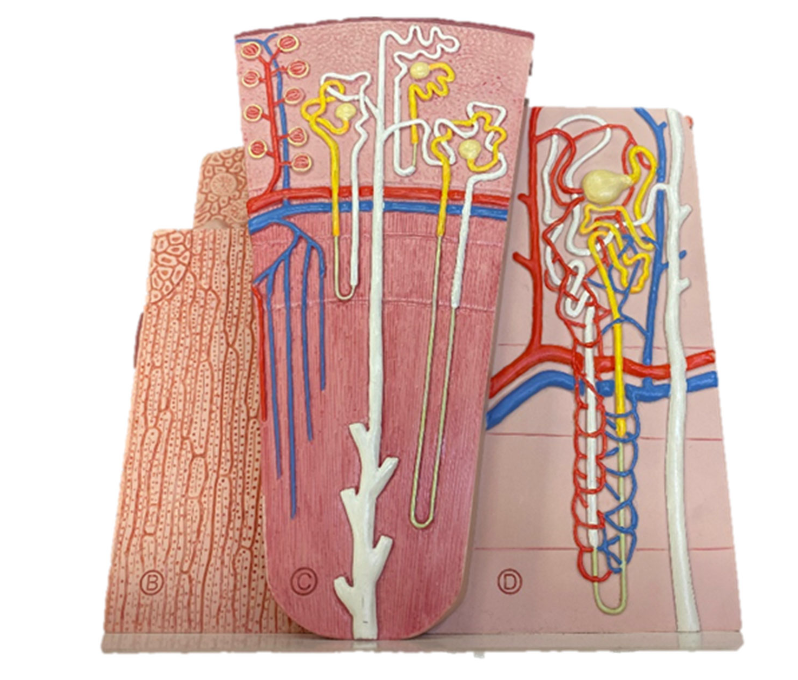
Label the glomerular capsule of the nephron
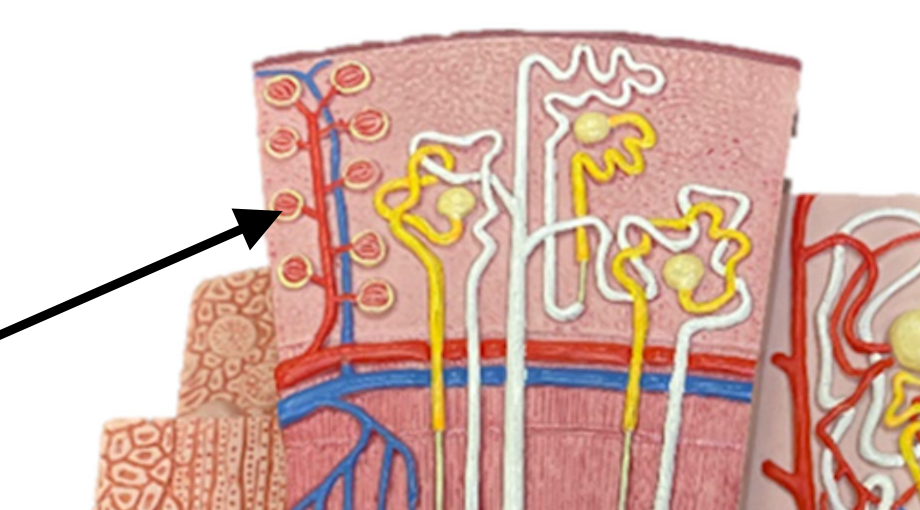
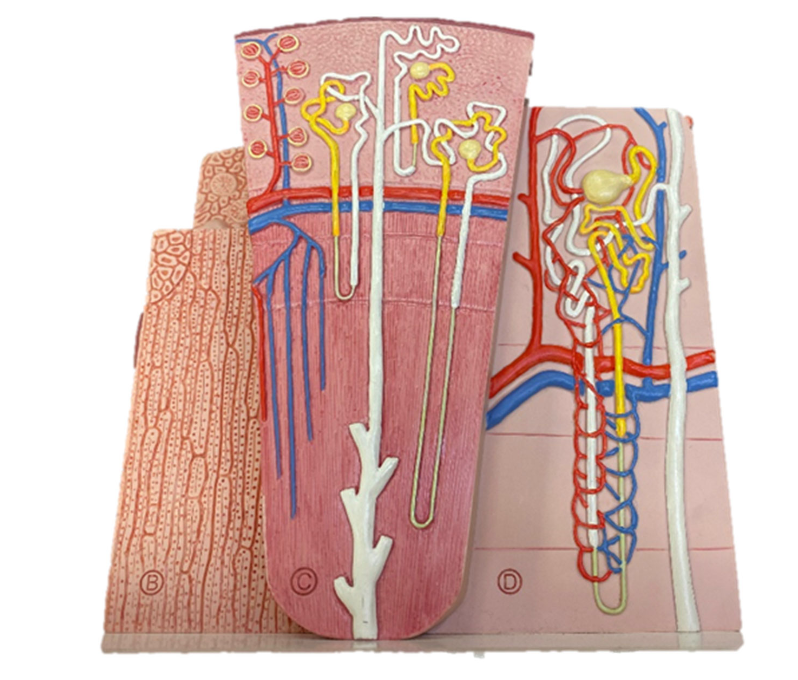
Label the juxtamedullary nephron of the nephron
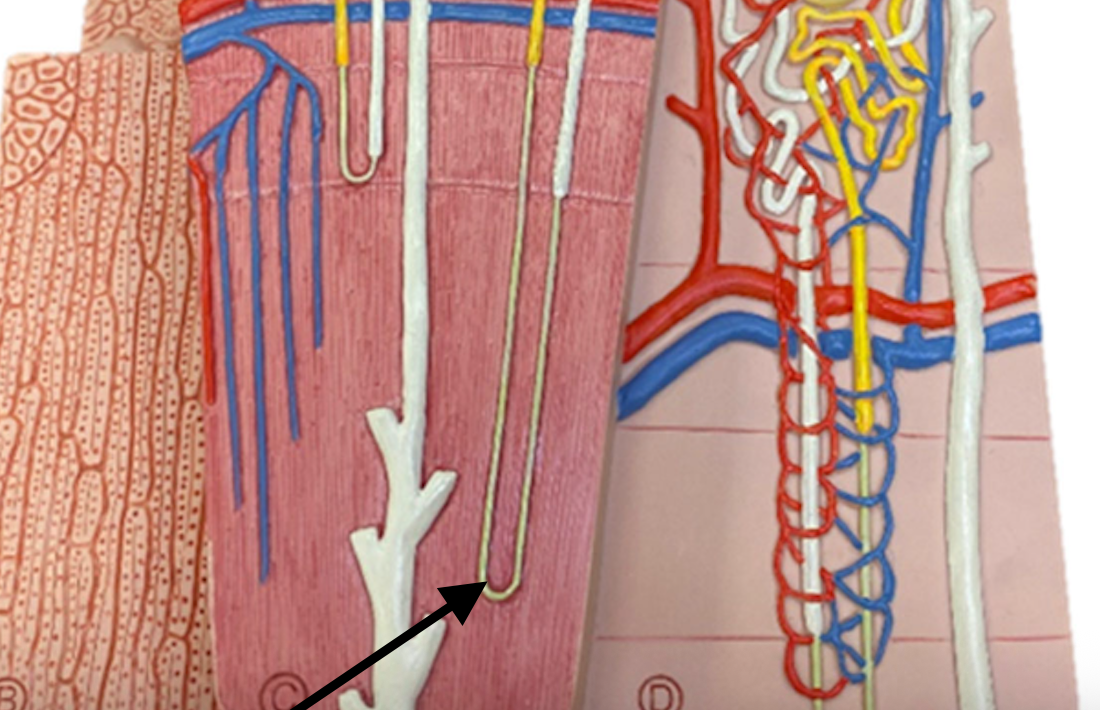
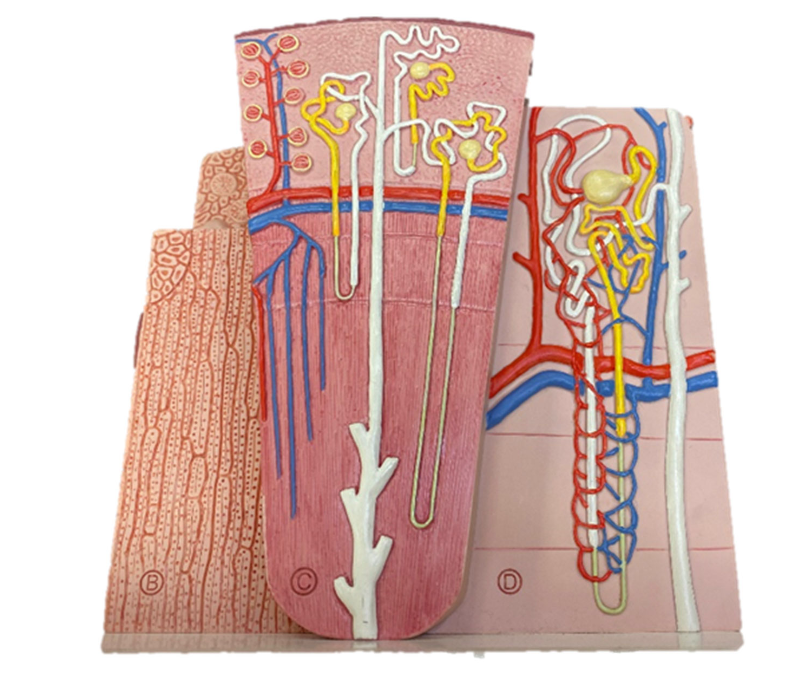
Label the nephron loop of the nephron
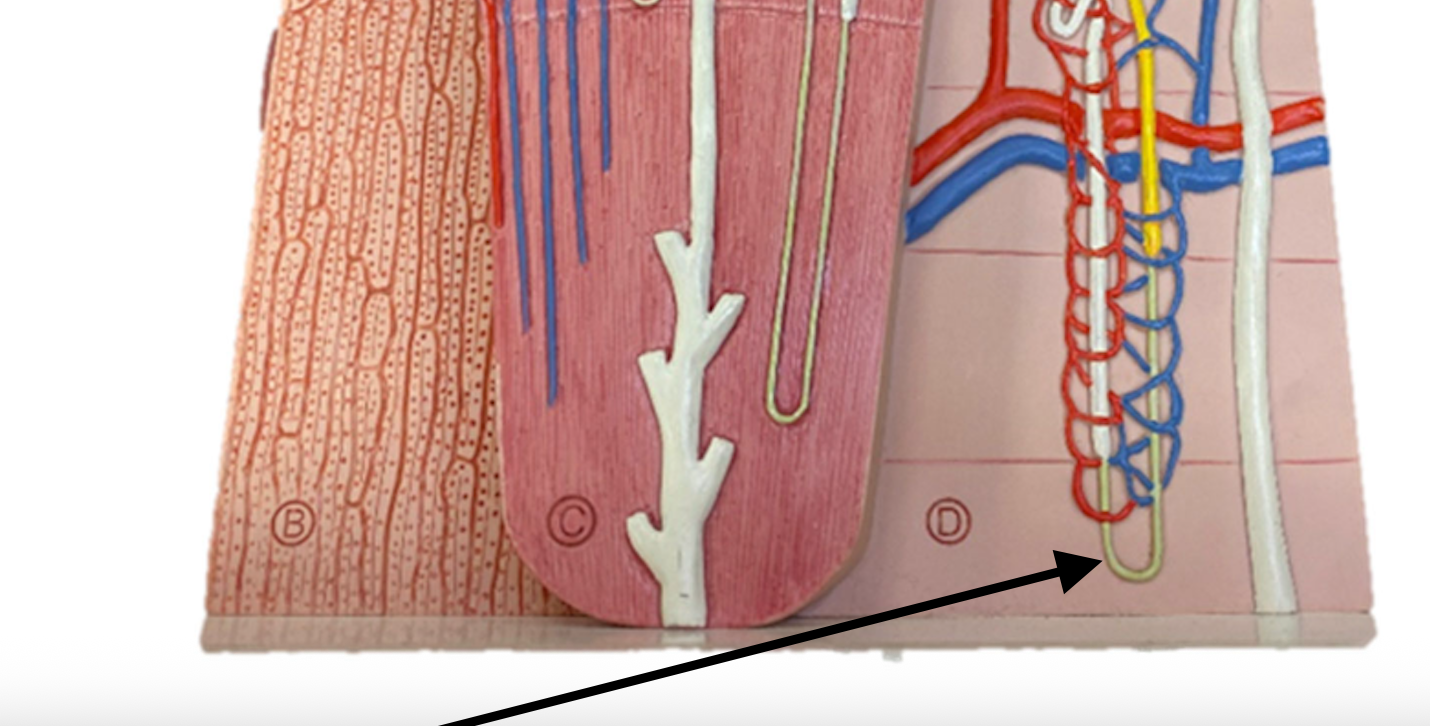
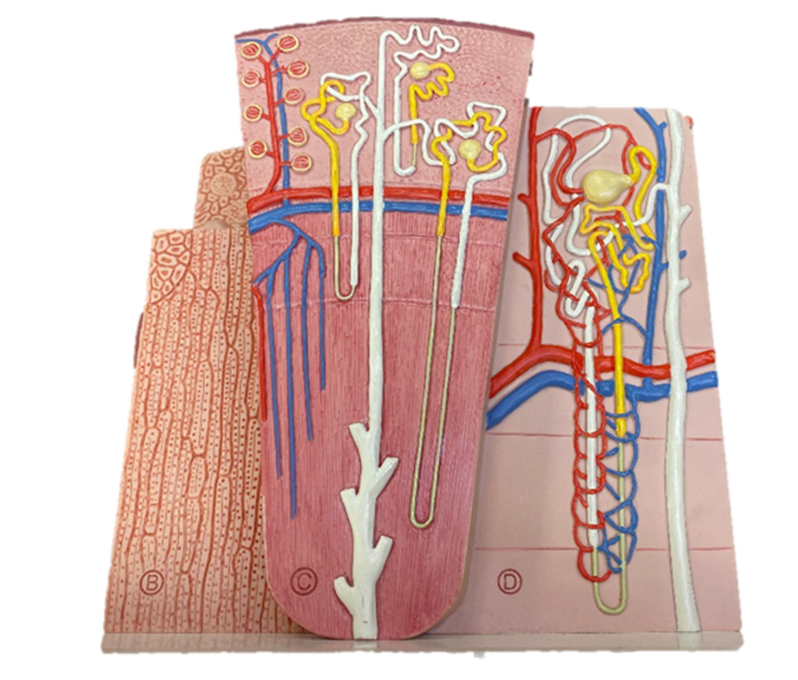
Label the peritubular capillaries of the nephron
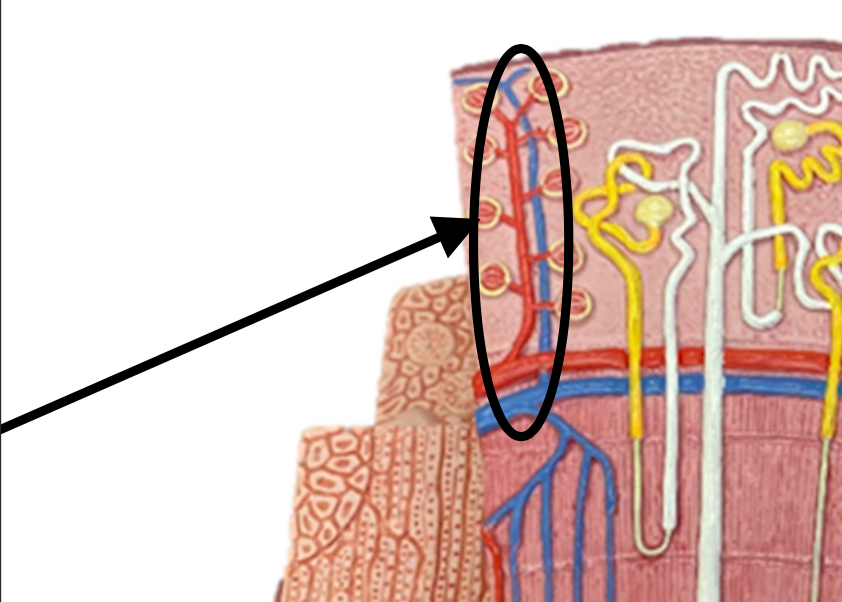
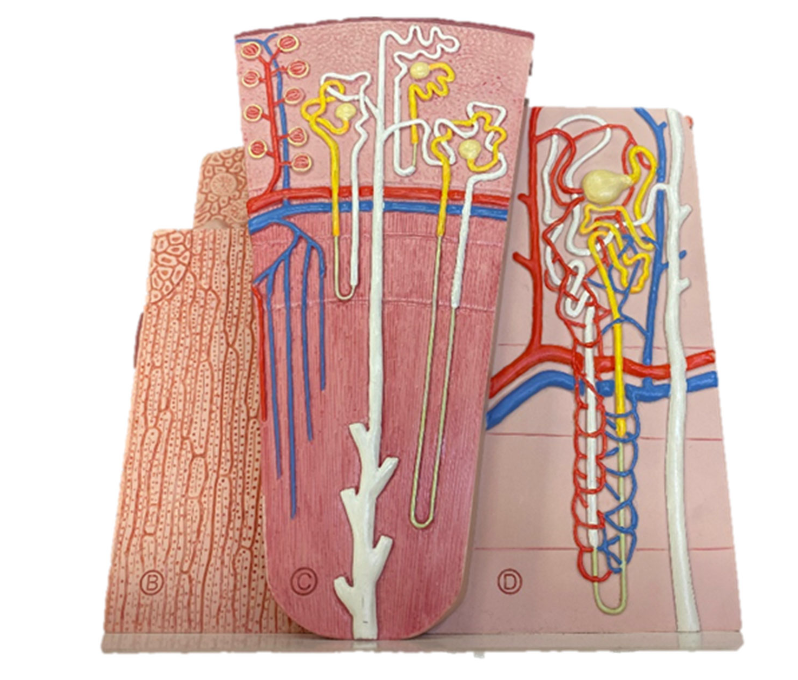
Label the proximal convulated tubule of the nephron
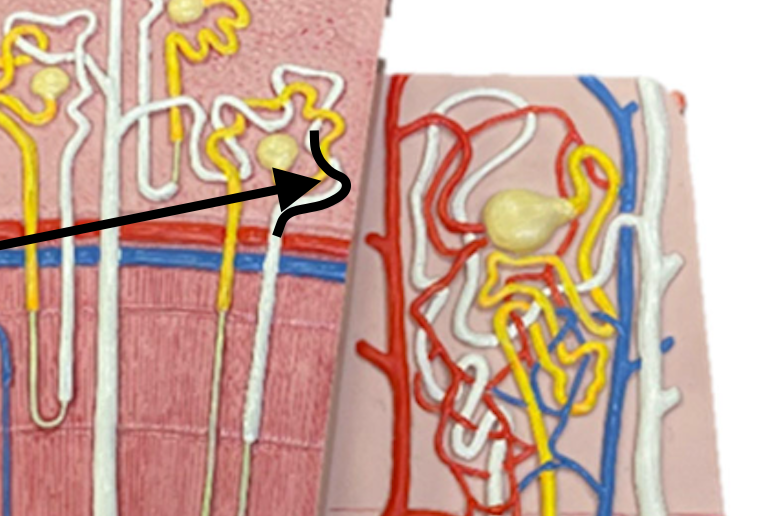
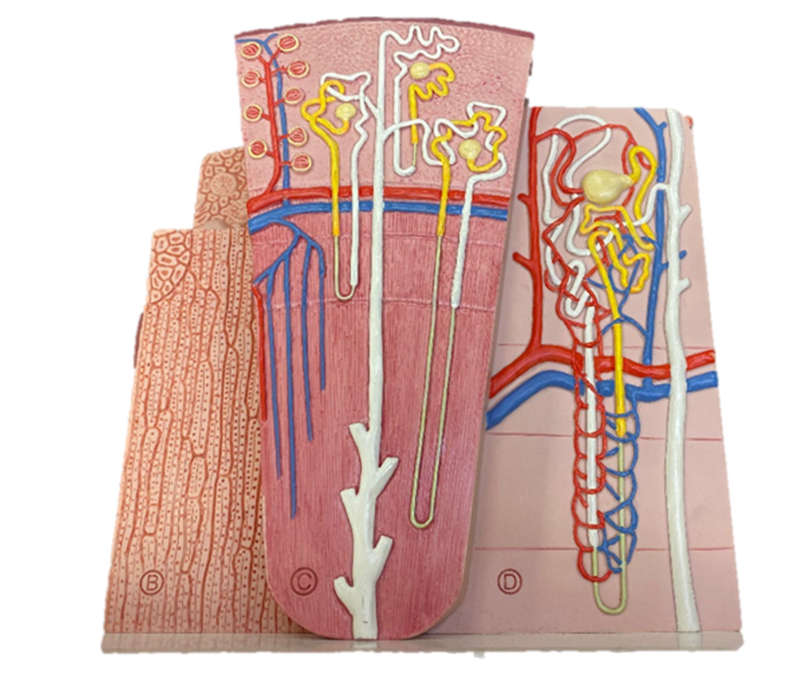
Label the vasa recta of the nephron
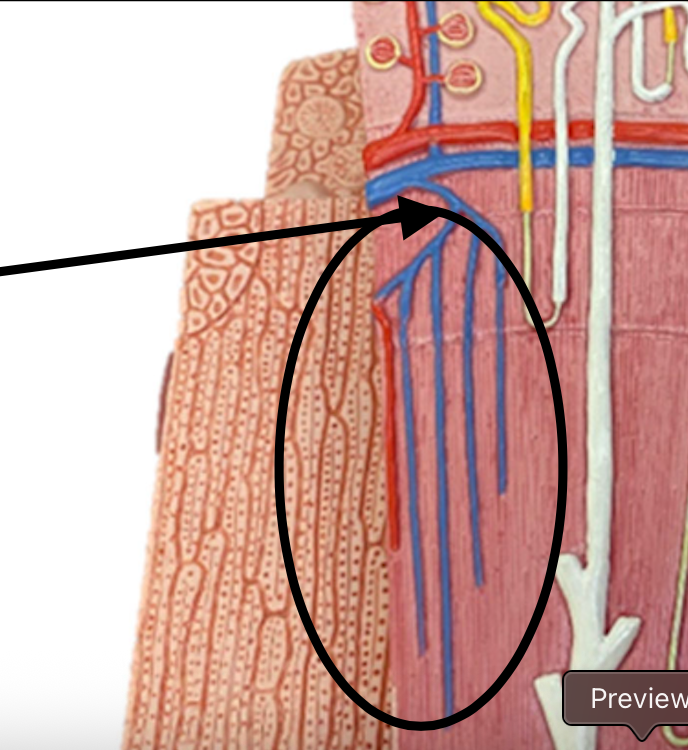
The renal _______ is the site of glomerular filtration in the nephron
corpuscle

Label the capsular space of the renal corpuscle
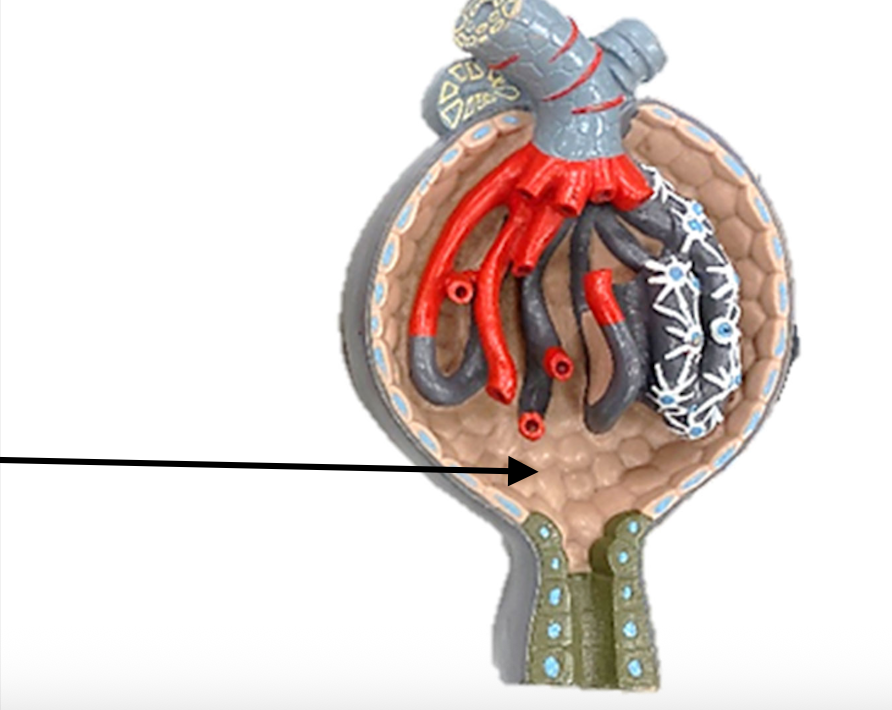
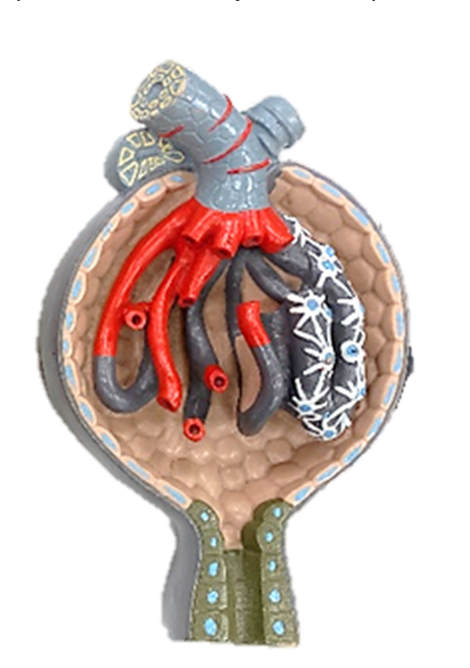
Label the glomerular capsule of the renal corpuscle
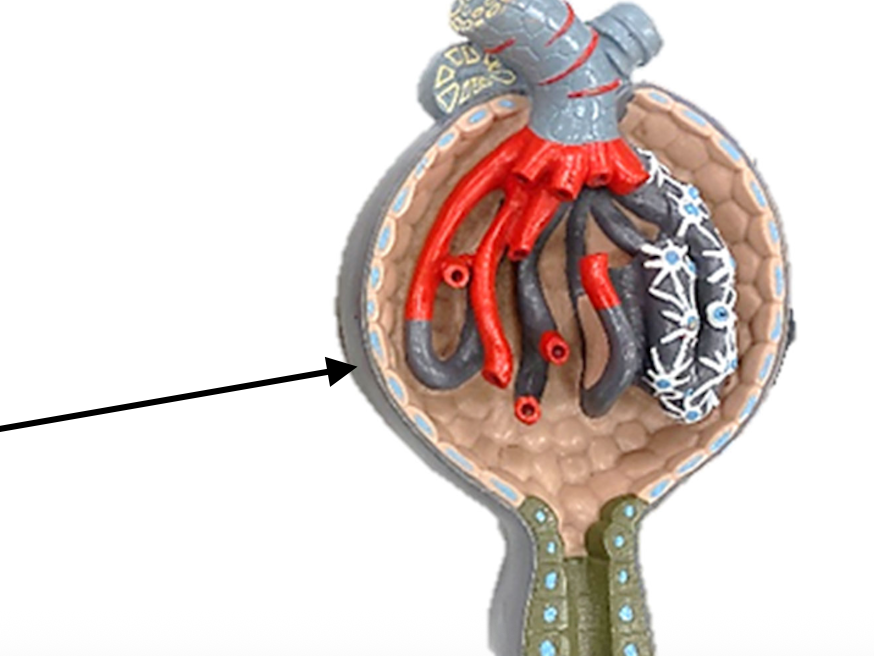
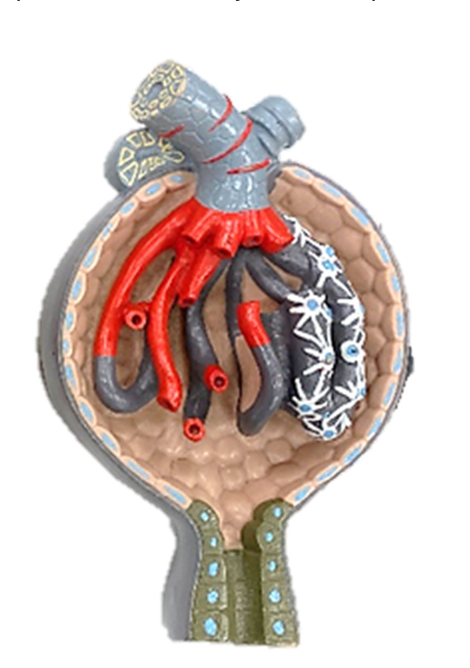
Label the glomerulus of the renal corpuscle
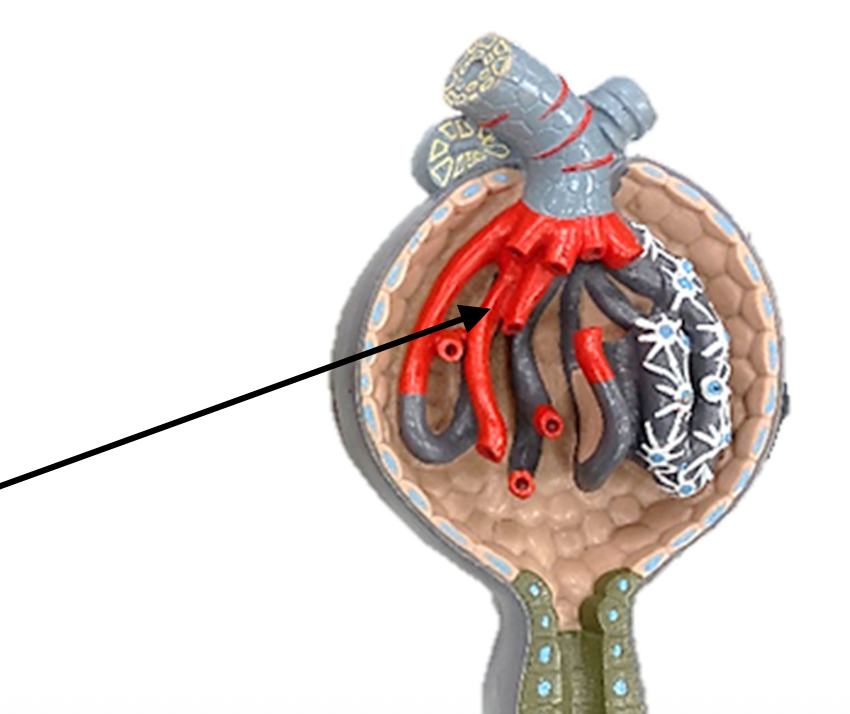
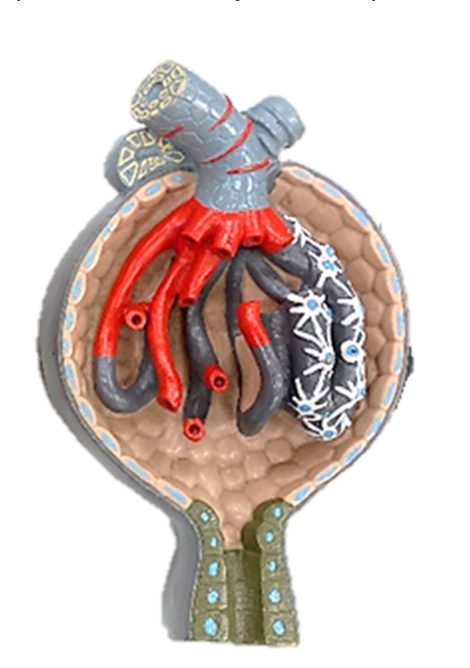
Label the podocytes of the renal corpuscle
?
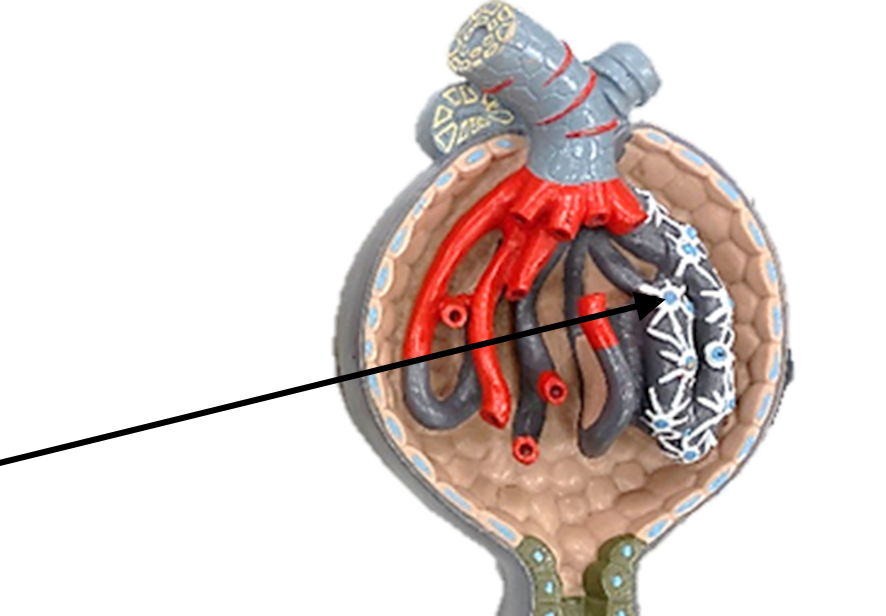
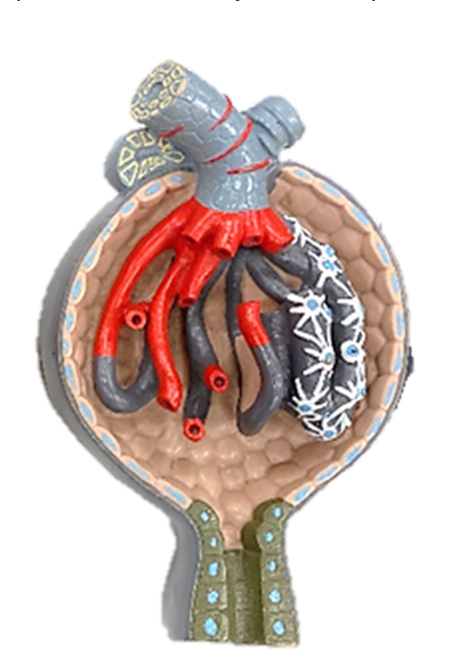
Label the proximal convulated tubule of the renal corpuscle
?
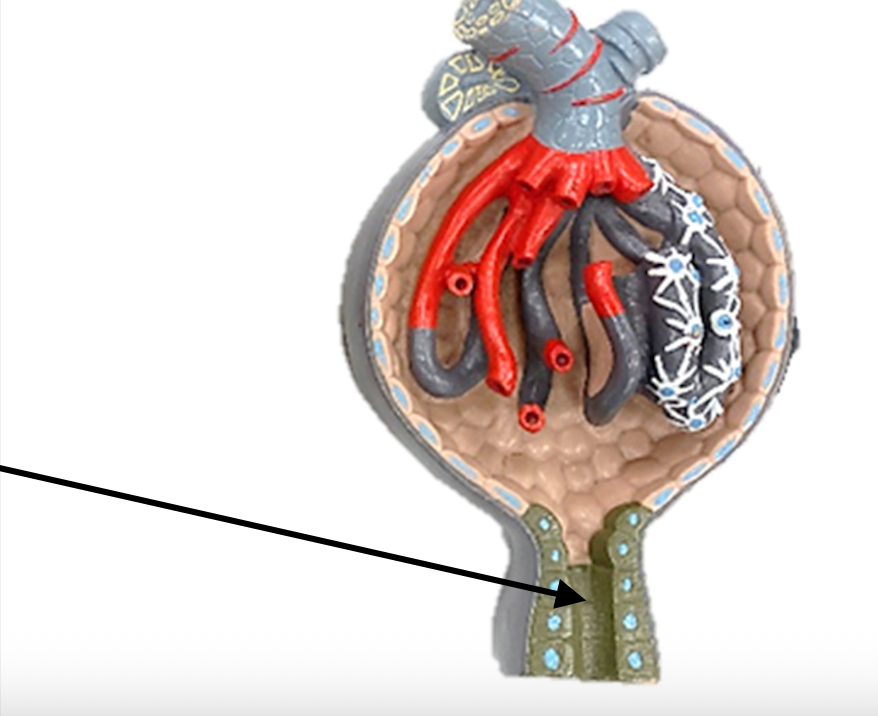
Q: Determine which part of the nephron is described by the statement below:
______ : the group of leaky blood vessels found in the renal corpuscle
A: Glomerulus
Q: Determine which part of the nephron is described by the statement below:
______ : the cells covering the blood vessels of the renal corpuscle, forming the filtration membrane
A: Podocytes
Q: Determine which part of the nephron is described by the statement below:
______ : the cup-like membrane that “catches” filtrate that leaks out of the glomerulus
A: Glomerular capsule
Q: Determine which part of the nephron is described by the statement below:
______ : the twisted tube (attached to the renal corpuscle) that is the primary location of tubular resorption & tubular secretion
A: Proximal convoluted tubule
Q: Determine which part of the nephron is described by the statement below:
______ : the U-shaped tube that travels into the medulla & creates the gradient used to alter urine water levels (a.k.a. the countercurrent multiplier)
A: Nephron loop
Q: Determine which part of the nephron is described by the statement below:
______ : the twisted tube (attached to the collecting duct) that resorbs water, sodium, and calcium in response to hormonal signals
A: Distal convoluted tubule
Q: Determine which part of the nephron is described by the statement below:
______ : the final nephron structure that is the location of urea recycling
A: Collecting duct

What is this?
Low mag - kidney
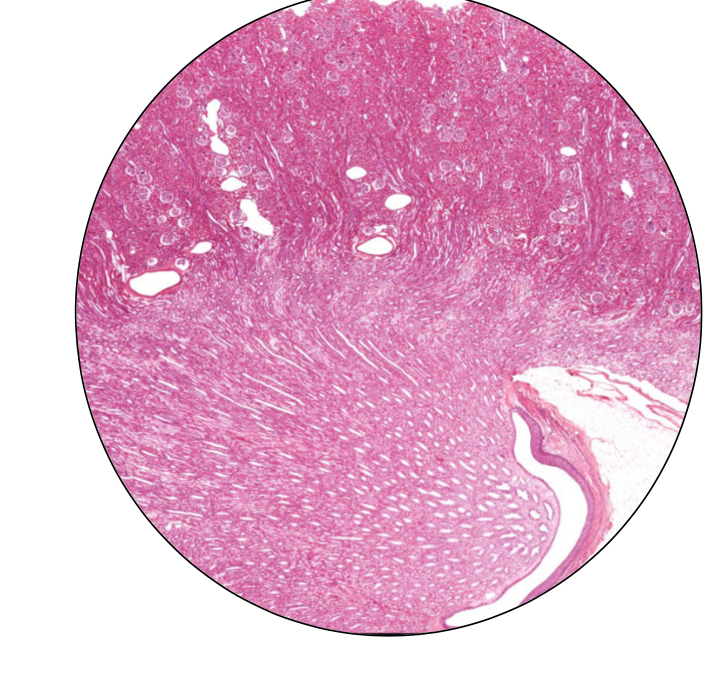
Label the renal cortex of the kidney
Darker

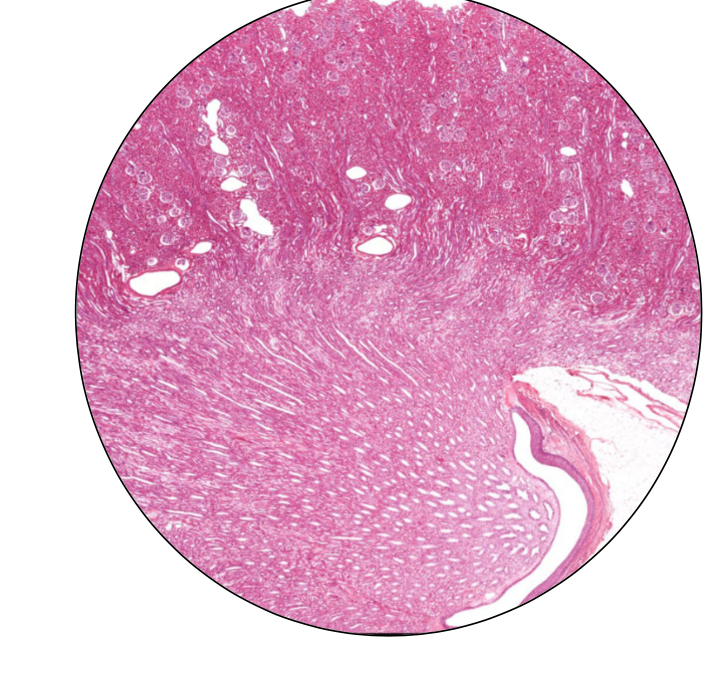
Label the renal medulla of the kidney
lighter
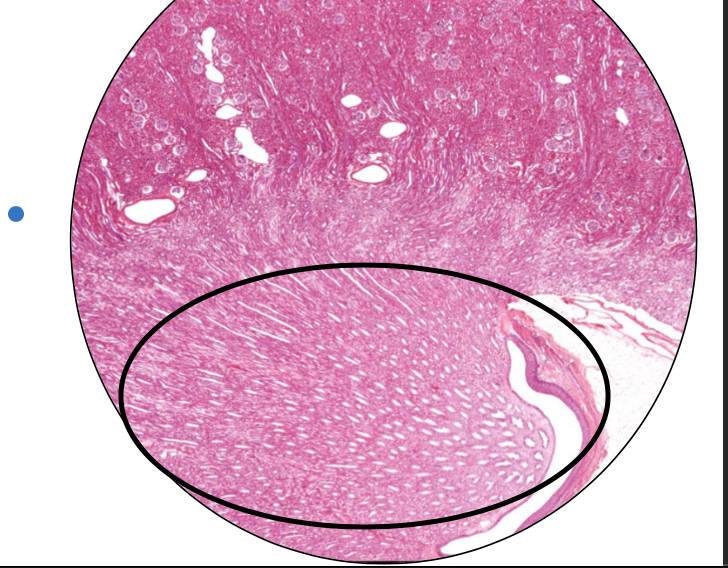
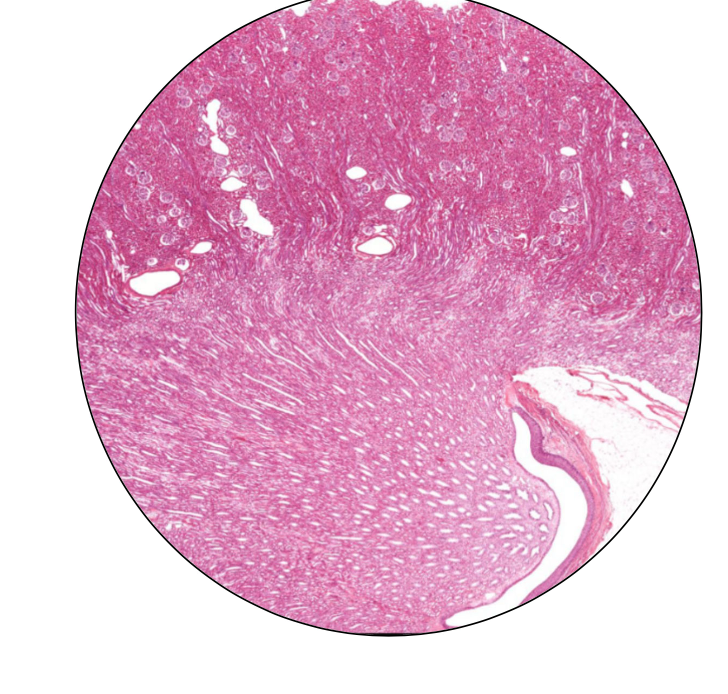
Label the renal corpuscles of the kidney
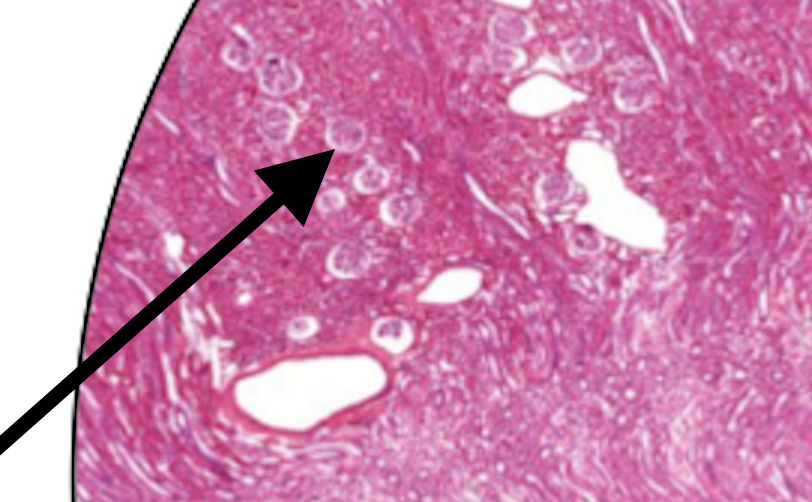

What is this?
Renal corpuscle